



NeMe and curator Marc Garrett, Co-Founding and Co-Artistic Director of Furtherfield, have the pleasure to invite you to Children of Prometheus at NeMe Arts Centre, Limassol. The exhibition investigates the landscape of a rapidly transforming world and how some of these shifts inform and affect our immediate environment.
The complex nature of the ancient Greek myth of Prometheus has inspired philosophers, authors and artists throughout many centuries and will continue to do so because of the powerful contradictions which it embodies which reflects the ongoing dualities present in both the human mind and physical existence. Acknowledging that the Promethean spirit lives on in the ambitions of science and technology, which in many cases defies the limits imposed upon humanity by nature, the post-modern Prometheus belongs to an organised world focused on the technology of the internet. This rapidly expanding domain, with its presumed ethos of democracy belies the technologies of data mining, fake data, targeted personalised advertising, etc used by global conglomerates to engineer/manipulate people’s perception via media into a state of hyper-real urgency by dislocating the individual from physical realities.
Yet despite the plethora of work in the field, there has not been any sustained attempt to think through the larger philosophical, sociological, economical, political and cultural implications of new technologies. A crucial methodology for this exhibition is to view these themes through the eyes of the artists. Children of Prometheus generates a visual discussion around this persistent narrative that is still very enmeshed into our contemporary context.
This exhibition was originally produced in partnership with LABoral, in Gijon, and is an extension of the Monsters of the Machine: Frankenstein in the 21st Century, 18 Nov 2016 – 21 May 2017.
AOS (Art is Open Source) was born in Italy, in 2004 as an interdisciplinary research laboratory focused on merging artistic and scientific practices to gain better understandings about the mutation of human beings and their societies with the advent of ubiquitous technologies. AOS was created by Salvatore Iaconesi (engineer, hacker, artist, designer, TED Fellow, Eisenhower Fellow, Yale World Fellow, Prof. in Interaction Design at ISIA Design University in Florence), joined by Oriana Persico (social scientist, artist) and now includes more than 200 artists and researchers from across the world.
Alexia Achilleos is a Finnish-Cypriot artist with a background in fine art, archaeology and cultural studies. Her work is concerned with cultural, political and social issues which impact identity, specifically linked with cultural heritage & tourism, colonialism and national identity politics. She explores interactions, hybridisation and power struggles – especially how a cultural object’s function can change according to geography, history and politics, and how it can be suited to the needs and interests of the adopting culture.
Egor Chemokhonenko lives and works in Cyprus. He is a programmer and open source enthusiast, and keen to mix technologies with the arts. Egor has previously collaborated as a developer with fashion and arts projects such as Lumpen Agency and Cosmoscow Contemporary Art Fair. Machine self-portraits is his second programming for an artwork using artificial intelligence.
Anna Dumitriu is a British artist whose work fuses craft, sculpture and bioscience to explore our relationship to the microbial world, technology and biomedicine. She has an international exhibition profile, having exhibited at venues including The Picasso Museum in Barcelona, The Science Gallery in Dublin, The Museum of Contemporary Art (MOCA) Taipei, and The V & A Museum in London. She is artist in residence on the Modernising Medical Microbiology Project at the University of Oxford, a visiting research fellow: artist in residence in the Department of Computer Science at The University of Hertfordshire, and an honorary research fellow in the Wellcome Trust Brighton and Sussex Centre for Global Health at Brighton and Sussex Medical School.
Mary Flanagan is a writer and artist whose practice(s) extend into science, design, psychology, and futures studies. Her encompassing work in theory and criticism, with a wide range of essays and books on digital culture, is in constant dialogue with her use of digital and material platforms to create dynamic, constantly evolving systems that reflect cultural questions and trigger reflection. She is the author of the book Critical Play: Radical Game Design, the poetry collection Ghost Sentence, co-author of Values at Play in Digital Games and Similitudini. Simboli. Simulacri, and co-editor of the collections Reload: Rethinking Women in Cyberculture and Re:Skin. Her essays and articles have appeared in Salon, USA Today, The San Francisco Chronicle, and The Huffington Post.
Carla Gannis is an artist who lives and works in Brooklyn, New York. She received a BFA in painting from The University of North Carolina at Greensboro and an MFA in painting from Boston University. In the late 1990s she began incorporating net and digital technologies into her work. Gannis is the recipient of several awards, including a 2005 New York Foundation for the Arts (NYFA) Grant in Computer Arts, an Emerge 7 Fellowship from the Aljira Art Center, and a Chashama AREA Visual Arts Studio Award in New York, NY. She has exhibited in solo and group exhibitions both nationally and internationally. She is currently Assistant Chair of Digital Arts at Pratt Institute in Brooklyn.
Marinos Koutsomichalis is a media artist, scholar and creative technologist. He was born in Athens, GR (1981) and has since lived and worked in various cities around the world. His practice is hybrid, nomadic, and ethnographic, involving field-work, creative coding, critical theory, making, lecturing, live performance, workshopping, artist/research residencies, ‘Doing-It-With-Others’, and hands-on experimentation with materials and technologies of all sorts. His artistic corpus is prolific, yet persistently revolving around the same few themes: material inquiry/exploration; self-erasure; the quest for post-selfhood. He has hitherto publicly presented his work, pursued projects, led workshops, and held talks worldwide more than 250 times and in all sorts of milieux: from leading museums, acclaimed biennales, and concert halls, to churches, industrial sites, and underground venues. He has held teaching and research positions in various academic institutions, has published a book and numerous academic/scientific articles, and is currently a Lecturer in Multimedia Design for Arts at the Cyprus University of Technology (Limassol) where he co-directs the Media Arts and Design Research Lab.
Kypros Kyprianou is an artist based in Bristol. He investigates scientific, political and cultural constructs using materials drawn from official archives, reverse-engineered objects, scenarios from film and hearsay. His practice is often collaborative, culminating in performance, video, publications and site-specific intervention.
Gretta Louw was born in South Africa in 1981 but grew up in Australia. She received her BA in 2001 from the University of Western Australia and Honours in Psychology in 2002, subsequently living in Japan and New Zealand before moving to Germany in 2007. Her work has been exhibited widely, including in public institutions such as the Kunstmuseum Solothurn (CH), Münchner Stadtmuseum (DE), National Portrait Gallery (AUS), UNSW Galleries (AUS), LABoral (ESP), and Galeri Nasional Indonesia (IDN). She was awarded the Heinrich Vetter Preis by the City of Mannheim in 2014 and the Bahnwärter Stipendium by the City of Esslingen am Rhein in 2017, as well as studio scholarships in Munich and Mannheim. In 2017, Louw was an artist in residence at MozFest in London at the invitation of the Tate and the V&A museums in collaboration with the Mozilla Foundation. Louw has also curated thematic exhibitions at museums including the Villa Merkel (DE), Furtherfield Gallery (UK), and Paul W. Zuccaire Gallery (US) and contributed essays to numerous catalogues and publications.
Lynn Hershman Leeson is an artist and filmmaker whose work has been internationally acclaimed over the last five decades. Cited as one of the most influential media artists, Hershman Leeson is widely recognised for her innovative work investigating issues that are now acknowledged as key to the workings of society: the relationship between humans and technology, identity, surveillance, and the use of media as a tool of empowerment against censorship and political repression. Over the last fifty years she has made pioneering contributions to the fields of photography, video, film, performance, installation and interactive as well as net-based media art. ZKM | Center for Art and Media Karlsruhe, Germany, mounted the first comprehensive retrospective of her work titled Civic Radar. A substantial publication, which Holland Cotter named in The New York Times “one of the indispensable art books of 2016.” Lynn Hershman Leeson is a recipient of a Siggraph Lifetime Achievement Award, Prix Ars Electronica Golden Nica, and a John Simon Guggenheim Memorial Foundation Fellowship. In 2017 she received a USA Artist Fellowship, the San Francisco Film Society’s “Persistence of Vision” Award and the College Art Association’s Lifetime Achievement Award.
Joana Moll is a Barcelona / Berlin based artist and researcher. Her work critically explores the way post-capitalist narratives affect the alphabetization of machines, humans and ecosystems. Her main research topics include Internet materiality, surveillance, social profiling and interfaces. She has lectured, performed and exhibited her work in different museums, art centers, universities, festivals and publications around the world. Furthermore, she is the co-founder of the Critical Interface Politics Research Group at HANGAR [Barcelona] and co-founder of The Institute for the Advancement of Popular Automatisms. She is currently a visiting lecturer at Universität Potsdam and Escola Superior d’Art de Vic [Barcelona].
Cédric Parizot is a Researcher at the CNRS. He is an anthropologist of politics and currently works at the Institut d’Etudes et de Recherche sur le Monde Arabe et Musulman (IREMAM, Aix en Provence). His research focuses on mobility and borders in the Israeli – Palestinian space. He has recently published with Stephanie Latte Abdallah A l’ombre du mur: Israéliens et Palestiniens entre séparation et occupation, Arles, Actes sud, 2011. He coordinates a transdisciplinary research programme involving social scientists, scientists, artists and professionals in order to elaborate a multidisciplinary approach on the mutations of 21st century Borders in Europe and the Mediterranean at the Institute of Advanced Studies in Marseille, France.
Guido Segni, aka Clemente Pestelli, lives and works somewhere at the intersections between art, pop internet culture and data hallucination. With a background in Hacktivism, Net Art and Video Art, his work is characterized by minimal gestures on technology which combine conceptual approaches with a traditional hacker attitude in making things odd, useless and dysfunctional. Co-founder of Les Liens Invisibles, he exhibited in galleries, museums (MAXXI Rome, New School of New York, KUMU Art Museum of Talinn) and art & media-art international festivals (International Venice Biennale, Piemonte SHARE Festival, Transmediale). Currently he teaches at the Accademia di Belle Arti of Carrara, directs the imaginary REFRAMED lab and he is part of the editorial committee for the project Atypo.
Alan Sondheim is an independent writer/theorist/artist. He co-founded the Cybermind and Wrytingemail lists. He is editor of Being on Line and author of .echo, Disorders of the Real and The Wayward. He is also published widely online and his video/sound work is internationally exhibited. Sondheim is the developer of the concept of code work, wherein computer code itself becomes a medium for artistic expression. He explores notions of the ‘abject’ in the masculine and feminine online, and more recently has dealt with the machinic using the language of computer code to articulate novel forms of identity in cyberspace. His work crosses over between philosophical explorations and sound poetry and more recently he has returned to the language of music using the tonalities of a wide range of ethnic instruments. His current areas of exploration include: the aesthetics of virtual environments and installations; mapping techniques using motion capture and 3D laser scanners; Buddhist philosophy and its relation to avatars and online environments; and experimental choreography.
Featured Image:
Detail from ‘The Garden of Emoji Delights Triptych’ (2014) by Carla Gannis
3 October 2019 – 5 January 2020, Daily. Free Entry
The roar of an airplane is a familiar sound for many parts of west London, home to one of the busiest airports in the world and the subject of a new exhibition, Air Matters at Watermans Arts Centre in Brentford, just a few miles away from Heathrow.
Echoing the experience of hearing an aircraft in action, sound itself plays an integral part in the show and leads with The Substitute (2019) by Hermione Spriggs and Laura Cooper. Through overhead speakers outside the main entrance, visitors are greeted by an authoritative voice musing on the fate of local flocks in an airspace strictly controlled by humans and their contraptions, intermittently reciting names of affected birds like a tribute, and ultimately urging listeners to “work with nature” which sets a critical tone.
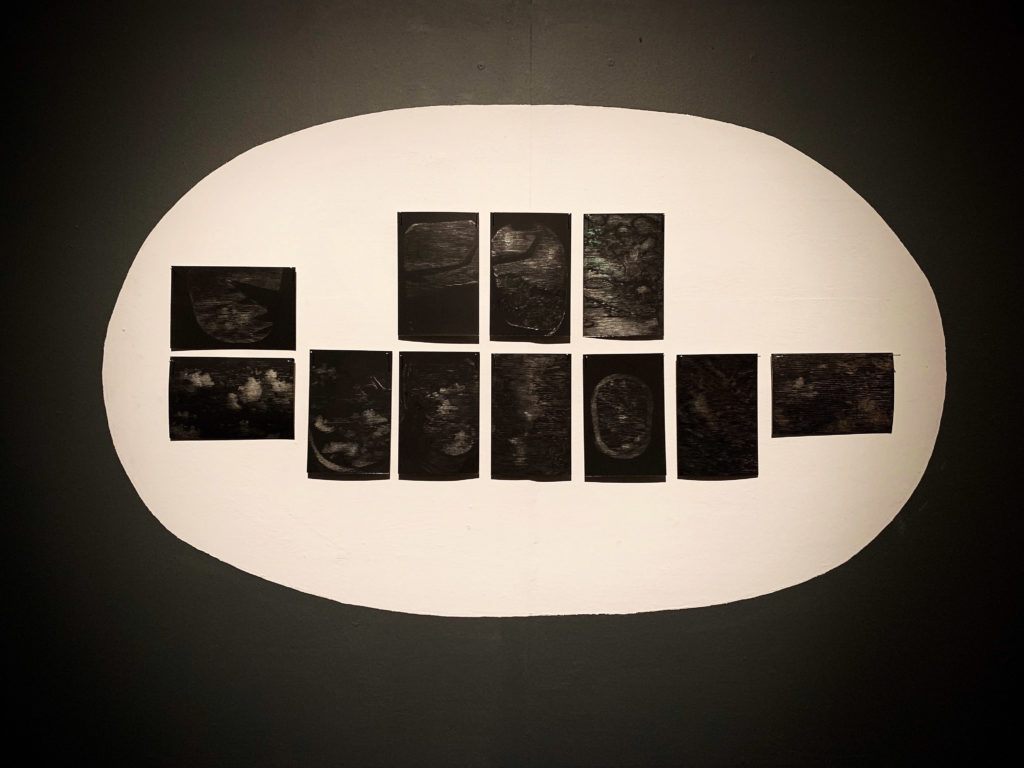
The audio installation is reminiscent of public announcements at airports, a strategy that continues into the foyer with Frequency (2019) by Louise K Wilson. It features intimate anecdotes of air travel through resonance devices on a skylight roof where planes might fly by at any moment. Speaking softly akin to ASMR, one person wonders about the destinations of travellers, while another recalls vivid memories of flights that seem traumatic, bouncing back and forth between excitement and anxiety.
The theme reaches its crescendo inside the gallery, with a mixture of ambient sounds reverberating across the space from Ascending Composition I (For Planes) (2019) by Kate Carr, an atmospheric concoction of incidental noises recorded around Heathrow including birds, markets, and trains on tracks. With pocket-sized media players attached to deconstructed speakers on strings of fabric, the installation documents an intervention that already took place when the work itself flew up on balloons blasting whispers from the ground, a small but meaningful gesture challenging the sonic waves of jumbo jets that dominate the surrounding sky and soundscape.
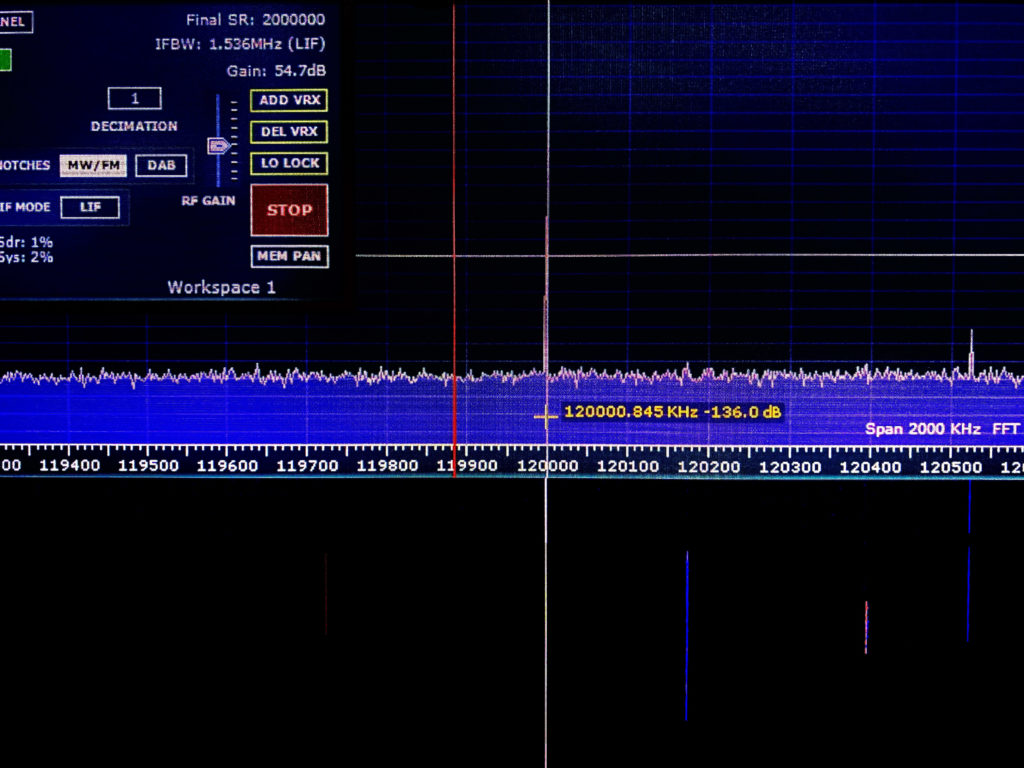
This act of defiance flows into Skyport (2019) by Magz Hall, a mixed media installation with a set of frequency scanners emitting an unsettling static. The title refers to a pirate radio station based along a Heathrow flightpath in the 1970s, illustrated with archival images and texts from an attempt to reclaim airwaves colonised by traffic control and engine noise. The work emulates this spirit with an LCD screen broadcasting airport channels as visual wavelengths, the contents of which are protected as classified information in UK law, consequently questioning ownership, access, and authority over radio frequencies.
The symphony of sounds become unavoidable throughout, and there is a possibility that it might grow vexing for some, perhaps more so for the people that work here who may not have a choice but to hear it again and again. Yet, as irksome as that might be, it is a crucial part of what makes this show effective. The audible pieces collectively transform the spaces into simulations of airport lounges and peripheral towns, simultaneously mimicking and counteracting oppressive noises from airplanes and terminals that have become inevitable in contemporary life, irrespective of its value and/or harm.
Beyond aural tendencies, the exhibition reaches further by considering scale and movement. The sheer volume of Capsule (2019) by Nick Ferguson is an imposing presence in the gallery with a wooden sculpture modelled after the wheel bay of a Boeing 777, floating a few inches off the ground and hovering over visitors. Shown alongside printed images of microscopic substances found in a real plane, it orchestrates a juxtaposition between the enormity of a flying machine and the imperceptible residue it accumulates, revealing traces from the many places it has been including sand, spores, and bacteria.
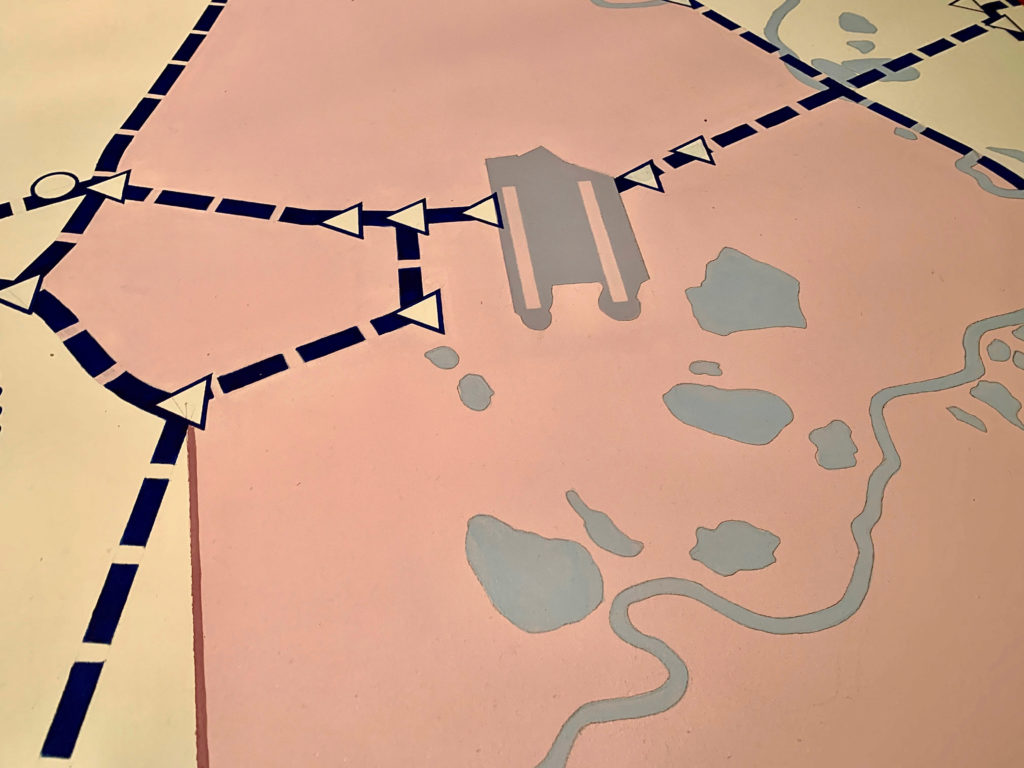
A map nearby, Heathrow (Volumetric Airspace Structures) (2019) by Matthew Flintham, takes the viewer back to west London with a bird’s eye view of the airport complex. Presented on a table that might be used for urban planning, military operation, or board games, it illustrates the topography of the area highlighting a vast infrastructure beneath large sections of controlled airspace, seemingly encroaching on everything else which becomes almost invisible or insignificant.
Navigating the show functions as an exercise of remembrance in many ways, bringing to mind a number of issues that have been at the forefront of public discourse in recent years: from the role of aviation on climate change, to its impact on local communities and ecosystems around airports. And it comes, as if on cue, at a period of heightened environmental concern, propelled most prominently by the Extinction Rebellion movement and climate activist Greta Thunberg, ringing the alarm on the perils of flying.
The controversial Heathrow Airport Expansion also comes through in this context, caught between government plans for future economic growth, and the ongoing resistance from neighbouring residents with campaigns like Stop Heathrow Expansion, No Third Runway Coalition, and Heathrow Association for the Control of Aircraft Noise.
It conjures up conflicting perspectives that unpack a classic dilemma for a society in flux. On one hand, the flight industry is evidently harmful because of its pollution to the planet and the unfair toll on local hosts. Yet, on the other, it is part of a system that facilitates international trade, freedom of movement, and cultural exchanges, each one increasingly more accessible to broader people beyond a privileged few who will always have it. And while it has serious problems that must be addressed, some of which are rightly pointed out here, a world without it entirely is at risk of descent into tribalism and isolationism.
With so much at stake at this particular time and place, the exhibition feels important for its worthwhile attempt in raising these pertinent questions through art, successfully using Heathrow as a case study for matters that undoubtedly have wider implications.
Like the rumble of a plane and many works in this show, the politics of flying will become inescapable as air travel is projected to almost double in size by 2036, despite recent backlash from flight shaming, the rise of staycation, and a spotlight on frequent flyers. The solutions to its unintended consequences are not as straightforward as it might seem, and will likely require a nuanced approach combining systemic changes, paradigm shifts, technological developments, and personal adjustments, all of which cannot come soon enough.
Air Matters: Learning From Heathrow is at Watermans Arts Centre until 5 January 2020. Curated by Nicholas Ferguson in collaboration with Klio Krajewska. Supported by Arts Council England, Forma, London Borough of Hounslow, Kingston School of Art, and Richmond University.
Featured main image: Kate Carr. Image 11. NF. Ascending Composition 1 (For planes). Mixed media, 2019. Included in Air Matters: Learning from Heathrow. 3 October – 5 January 2019.
Disobedient Electronics: Protest is a limited edition publishing project that highlights confrontational work from industrial designers, electronic artists, hackers and makers from 10 countries that disobey conventions. Topics include the wage gap between women and men, the objectification of women’s bodies, gender stereotypes, wearable electronics as a form of protest, robotic forms of protest, counter-government-surveillance and privacy tools, and devices designed to improve an understanding of climate change.
I was one of the lucky few to receive a hard copy of this fine little zine, a handmade limited edition of 300, put together by Canadian artist & researcher Garnet Hertz. It features 24 contributions of critical art & design, many of which taking a strong stand on feminism and surveillance /privacy issues, indispensable in current debate. Hertz initiated this publication in response to post-truth politics, in itself a notion shrugged off by populist drivel – “Politicians have always lied.” – Ptp- strategies involve the removal of scientific context from popular claims in order to comfort the masses in turbulent times of change. Such trends are noticeable in culture and thus in the DIY- movement too. After a disappointing visit at a maker’s fair, which essentially promoted the aesthetic design of blinking LEDs and the 3D-printing of decorative junk in an overall atmosphere of relentless marketing, the manifesto of Disobedient Electronics caught my attention, reflecting my impressions accordingly.
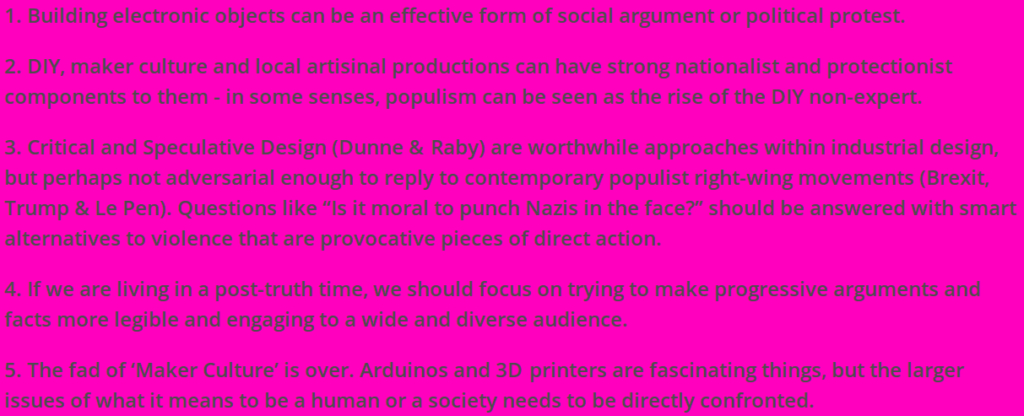
Decline of culture becomes visible as ‘popular’ themes such as sustainability or integration policies are readily adopted but actually serve as mere buzzwords to increase the marketability of events and products. Since it became profitable to sell electronic boards and a variety of accessory components, the prosumer (Ratto, 2012) is bound to available materials and building instructions and not encouraged to experiment or imagine alternatives to already available commercial design. Therefore many important layers of technology get ignored or regarded as not worth exploring due to the fetishisation of the final result. Although focus should be on action oriented making, tactile objects /installations are important when linguistics fail. We have already incorporated digital structures in every social aspect of our lives and it is difficult to observe let alone express them.
The book treasures the craft of DIY technology development, notably in the surveillance /privacy sector, and highlights the pressing need for knowledge in light of the technological advantage of those in power. Backlash provides us with an educational protest kit, including devices for off grid communication and bugging defence. These are functional but not necessarily designed for situations of conflict, rather for inciting a relevant debate among the general public. Phantom Kitty (work in progress) defies spying by authorities without a warrant and the enforced quantification of humans based on evaluations of online activity. It produces arbitrary noise when the user goes offline to obfuscate browsing habits and it is possible to integrate machine learning algorithms at a later stage, which could mimic or create identity patterns. Phantom Kitty features a stunning mechanical rack for keyboard and mouse operation, fed by a program executing search queries and the access of webpages. The project draws on the eeriness of neither knowing to what extent gathered data is exploited, nor against which parameters and targets it is set.
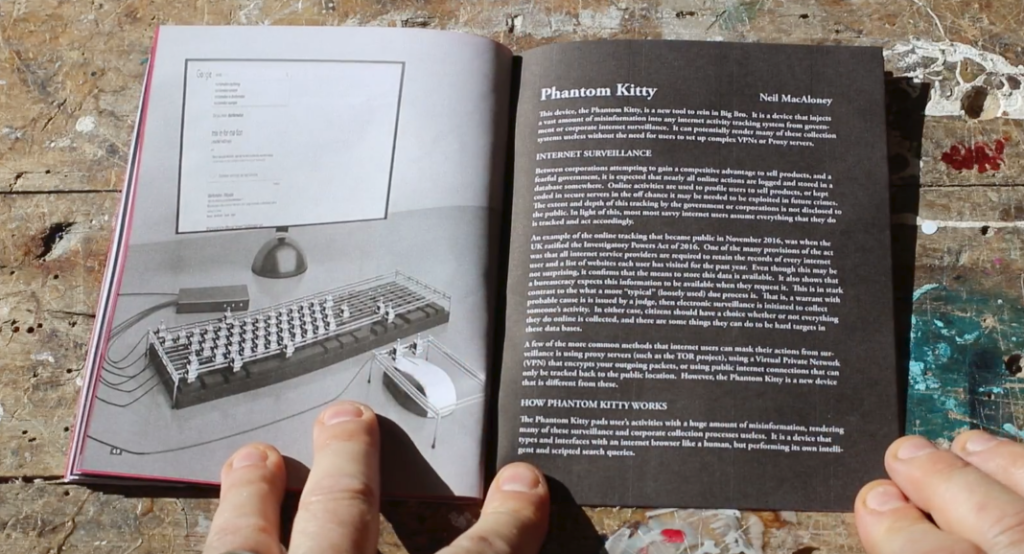
Completely left in the dark about the full scope of exercised control and entailing consequences The transparency grenade by Julian Oliver reminds us that citizens have a right to openness too. The promise of “making the process of leaking information from closed meetings as easy as pulling a pin” is tempting, and in contrast to the opaqueness of corporate and governmental policies, the artwork, other than claiming transparency, is representing it, in its aesthetics, open source software and in the thorough documentation of its engineering process.
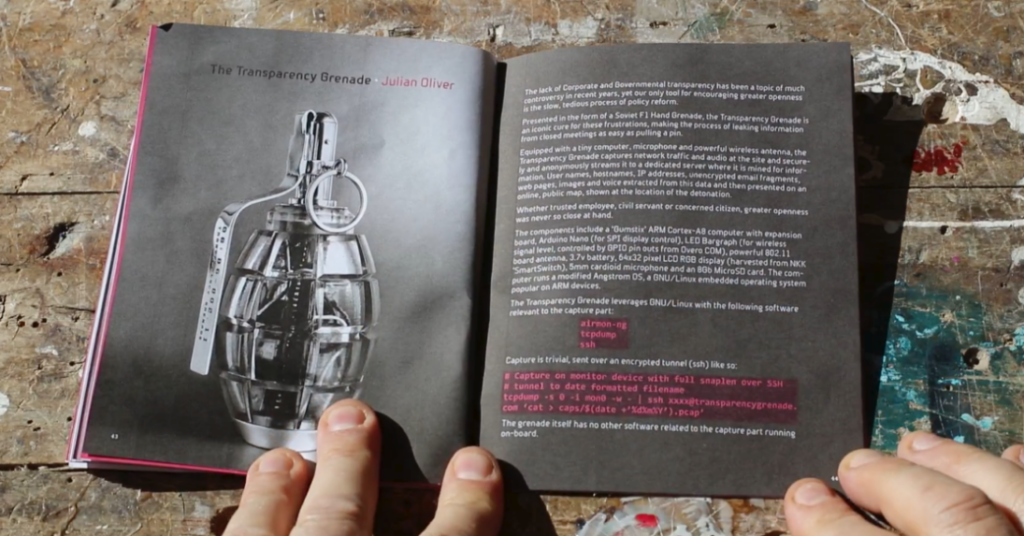
The well written accompanying text of one of my favourite projects PROBOTS describes effective works as “technologies of dissent that work at both the practical level but also the symbolic”, by all means valid for those involved making this book, albeit associating with a manifold of disciplines. The tele-operated protest robot certainly meet those demands and can be sent out by the precarious worker as an answer to the efficiency of contemporary policing, simultaneously a metaphor for the limited potential in the act of present-day corporeal protest. The silencing of political resistance happens far beyond the streets and PROBOTS makes an extraordinary research tool for investigating the organisational power of technology, which prevents social progress already from the outset.
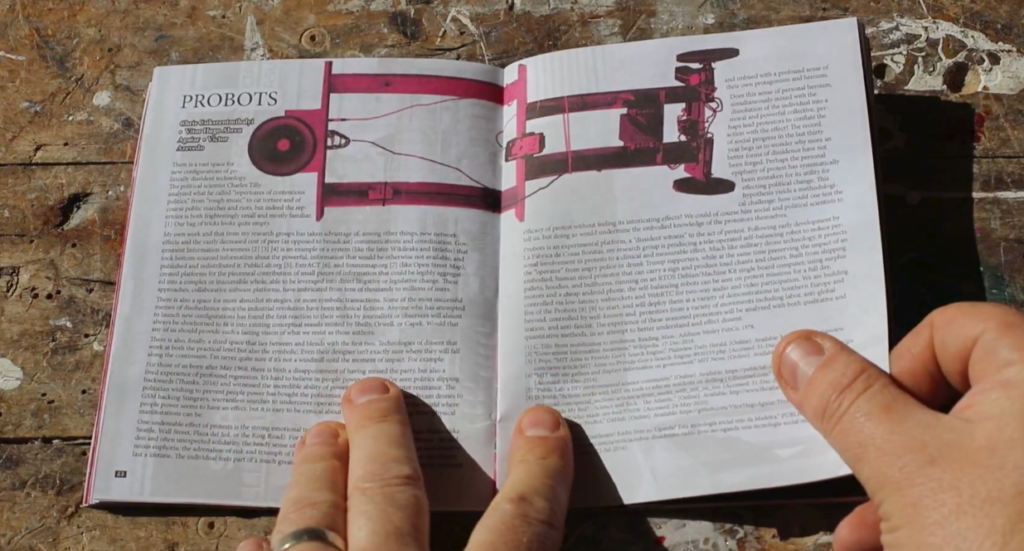
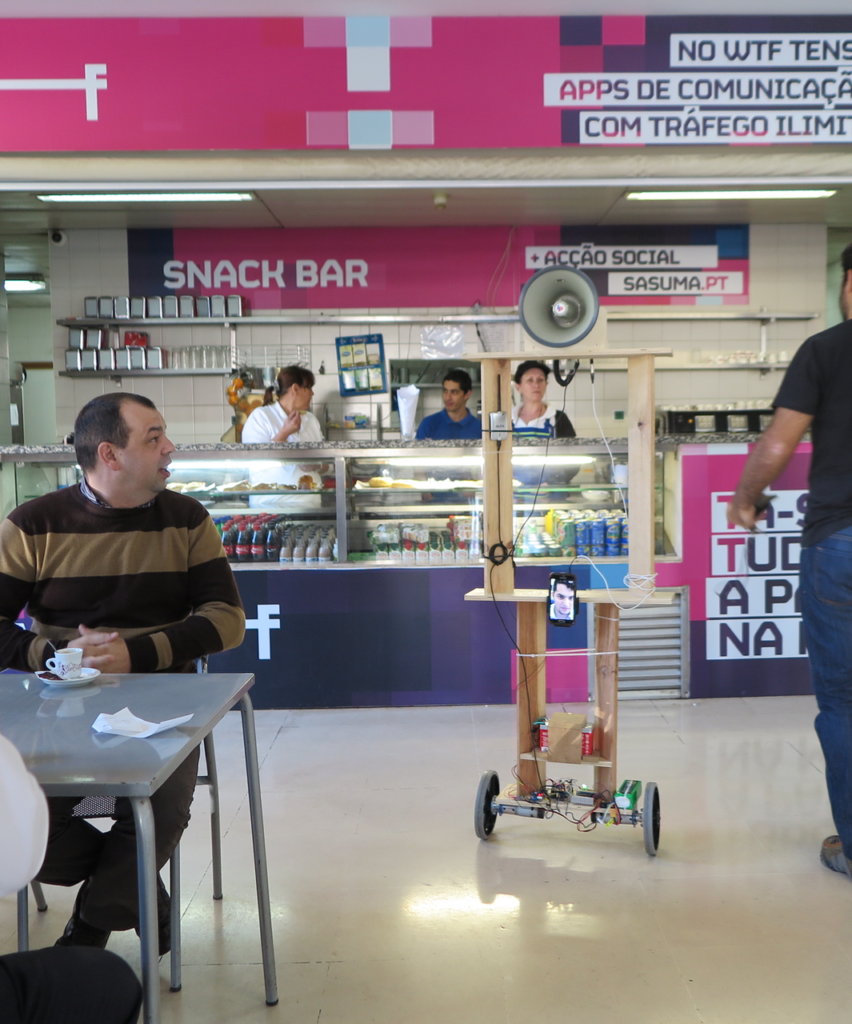
I’ve only recently discovered that e-textiles is not the same as smart clothing. It is a discipline, focusing on the act of making rather than the actual result, albeit in this case impressive too. The makers of The Knitted Radio approached the craft of knitting and electronics without economic reasoning, a factor which primarily informs the engineering process in industrial design. The liberation from conventional standards brought about alternative forms and methods, that is a sweater that also functions as a FM radio transmitter and the skill to knit electronic components /devices such as resistors, capacitors and coil with conductive yarn, an off-the-shelf material. The knitting instructions for the sweater are available online, it can provide a free of cost, independent communications infrastructure. The concept was inspired by the protests on Taksim Square, Istanbul, Turkey, and associated violations of freedom of speech. A Piece of the Pie Chart: Feminist Robotics by Annina Rüst illuminates gender inequity in form of a production line, which decorates edible pies with pie charts, depicting gender ratios in tech affiliated corporate or public organisations.
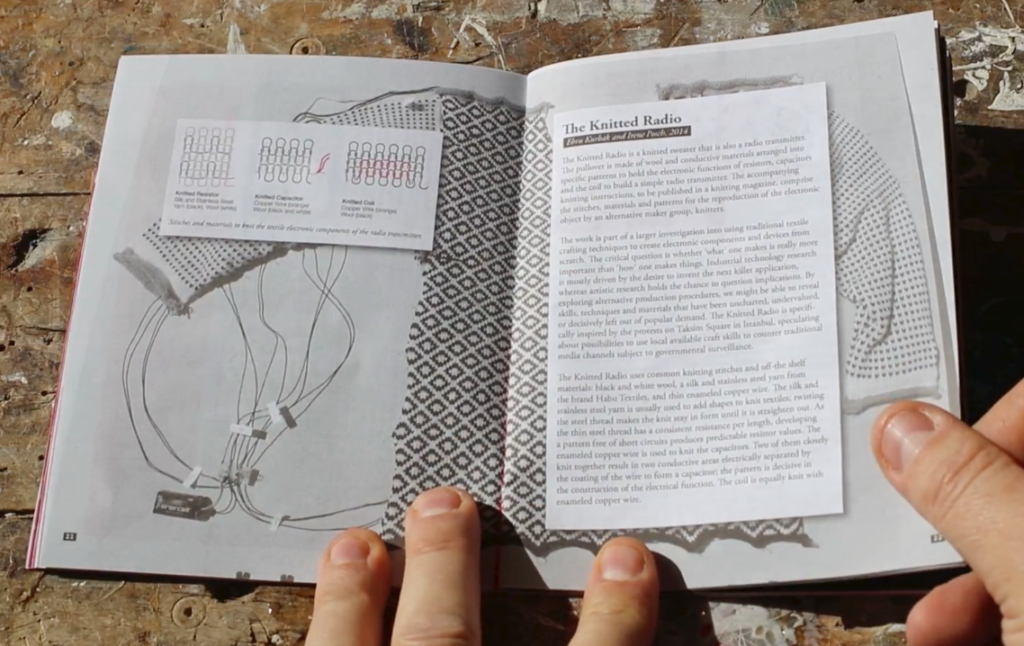
Women are generally underrepresented in tech related workplaces and users of the gallery installation can browse and choose between various data sets on gender in technology, e.g. computer science graduation rates, before an ensemble of household applications and semi-pro robotics sorts the cake. The mere visualisation of data was not radical enough, so the finished pie can be shipped to the institution of which data (and gender inequity) originates, and where it can be consumed accordingly. Women have to be content with the smaller piece of the cake, also symbolic for economic inequality and the missed out experience of working in tech. Rüst was not satisfied with the claim that women are just not interested in tech, and further qualitative research in feminist technology showed that women are rather put off by its hostile macho culture and that technological pedagogy simply failed to inspire girls.
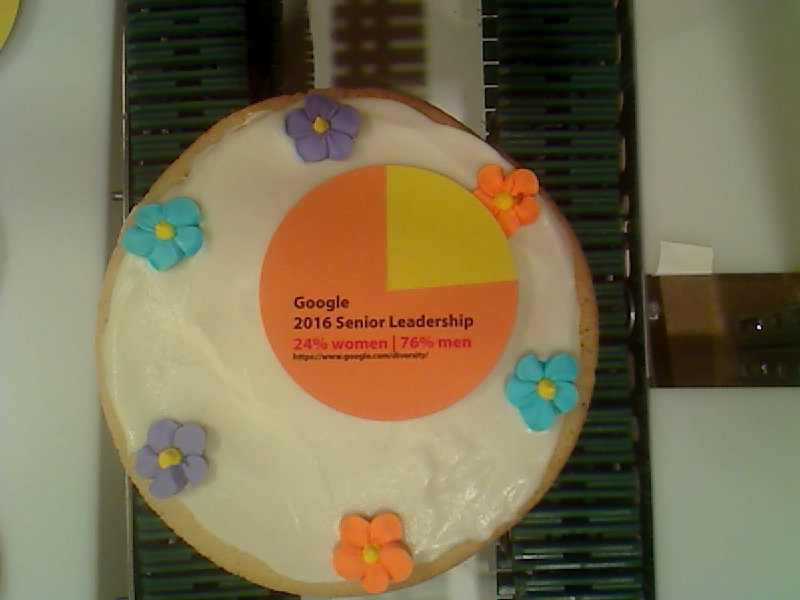
Tweeted image of a finished pie. Source: https://twitter.com/PieChartRobot
The PROTEST issue lives up to its title and emphasizes on projects, which propose hands-on political action and intervention with society, not in terms of providing solutions but to spark much needed discussion and inspire disruptive technology. Disobedient Electronics follows the publishing project Critical Making, which comprised 11 issues, so there is hopefully some more to come.
Hi Shaina! Tell us about the genesis of CAMP? How are you part of it? Why are you called CAMP?
CAMP came together as a group in 2007, initially consisting of me, Shaina Anand (filmmaker and artist), Sanjay Bhangar (software programmer) and Ashok Sukumaran (architect and artist) in Mumbai, India. The intersection of our skills and different backgrounds created a vital spark in which to experiment with technology and ask deep questions about form and ways of making radical political work. We are called CAMP as we are not an artist’s collective (though we began as a collaboration with KHOJ which was an artist’s collective in Delhi, which you headed operations for) but we call ourselves a studio. In this process, we try to move beyond binaries of art vs non-art, commodity market vs free-culture and to build media for the future. Personally, it gives me the platform to eschew conservative approaches to documentary filmmaking with “the colonial male gaze.”
How did you decide to create new-media and be part of CAMP coming from a strong documentary tradition?
Oh, for that I would like to describe the response my younger self (1992-2004) had to making traditional documentaries. Travelling around India with my mentor, filming a documentary about life in villages for the anniversary of Indian independence, I described how they’d turn up in jeeps, find the subjects, and ask important questions for the nation. I became increasingly disillusioned by what I saw as the repeated orchestration of finding a subject, interviewing, zooming in, asking questions until the subject ends up crying. So, once while analyzing the relationship between filmmaker and subject I echoed the question hovering over so many discussions, “who speaks for the subject and from where?”
That’s when I decided that I had two choices, to either move into fiction which was perhaps less problematic, or to “stay with the trouble”, to let the problems drive the work into becoming something more in line with my politics. I also wanted to “trouble” the triangular relationship of author, subject and technology, so that it favored the subject more.
Very interesting! You mentioned Haraway’s “staying with the trouble”. Were you influenced by her work? Say more! I relate to that experience, having switched from working in Bollywood to doing social documentaries and now learning new-media art. So, what role do you think technology plays in fostering that relationship between the subject and the author and more importantly, how does it “favor” the subject?
Well, yeah. I feel influenced by her as a woman media-maker where I draw from her reflections on race, technology and gender. In CAMP’s work at various biennials, I have often felt that every part of the process of documentary-making had been deftly unpacked and put back together again to reflect vital contemporary political concerns within the actual structure of the work or even its distribution, not just its content. By that, I felt we succeeded in using technology to foster that relationship.
I find it fascinating that technology is not a toy or gimmick in your work but rather gives to access to places and people which traditional approaches to documentary wouldn’t. In this context, could you throw some light on the use of CCTVs in your work esp. at a time when they were increasingly being used as a tool for surveillance?
In our work Al jaar qabla al daar (The Neighbour before the house- 2009), we used CCTV cameras and set them up to film the houses where eight Palestinian families had been forcibly evicted and are linked to remote controls in new homes or refugee places where the families now live. We were then able to zoom and tilt the cameras to spy up washing or as they went about their business. The complexities of the power relations between the observer and observed are dazzlingly deft and agile, giving energy to the otherwise hopeless situation of displaced Palestinians in Jerusalem. We only hear their voices as they trace the lines of personal memory in their old neighborhoods or stalk the new inhabitants of their former homes with the remotely operated CCTV placed on nearby rooftops. We see soldiers training, Orthodox Jews going to prayer, a boy skateboarding, roofs, water tanks, a veranda built by their own families. Their bodies exert a ghostly presence on the very image we see onscreen as a small boy exhorts his mother to “zoom, zoom”– to spy on one of the new inhabitants leaving the house. But nonetheless through the active manipulation of this technology we had “captured” a settler.
Do you think technology facilitates a democratic or rather liberal exchange for the subject? Let’s say immersive technologies like virtual and augmented realities, which I’m interested in, blur the point of view of the author and the subject. What do you think?
The act of wrangling the technology to record the voices of the camera operators while simultaneously filming does create a power shift. For example, in our work, the Palestinian families may be physically invisible in the places they once lived, but their voices and ability to control how we see with even the crudest of cameras, exerts its own pressure. It acknowledges and celebrates the democratization of the camera and makes us question the veracity of all the other images we have seen about Palestine. We hear details about the neighborhoods, how the evictions happened through impossible laws or enforcements as the displaced families observe how the new families don’t clean the stairs or water the lemon tree.
Yes, I liked the use of the footage as a timeline for viewers to edit which led you to form Pad. Ma (Public Access Digital Media Archive) which I was a part of too, at some point. Interestingly, here at UCSC, I met and heard Bernard Stiegler who had long ago worked with annotating found-footage with his students thereby that puts CAMP in that discourse. Say something about that.
Well, for me, the most radical and exciting approaches to documentary were in the 60s in India. Since then, what has changed? Nothing here. CAMP’s work provides a sense of new possibilities as it steals back technology and puts it into that utopian discourse of Stiegler and others to shift our perspective closer to the subjects. By “troubling” the traditional methods of creation and dissemination it empowers both the viewer and the viewed with a fresh perspective.
Some of your work is about migrant population, home and displacement which strikes a chord with my interest in human-rights and immigration. Tell us about this work and its approach.
A privileged perspective into the worldview of another is contained in our work, From Gulf to Gulf invited by the Sharjah Biennial a few years ago.Yet again it is a document of a much richer process that began as an artwork/ community provocation/ friendship built over four years between CAMP and a group of sailors from the Gulf of Kutch in India. Initially CAMP produced radio programs culling material from sailors’ songs, conversations, phone calls etc. and later that evolved into a new-media piece that showed this totally different space in a radically fresh way. It is composed of footage of their journeys and extended selfie- films shot by the sailors on their long voyages, often accompanied by songs which they Bluetooth to each other.
Fascinating! Lastly, I’m keen to hear about what CAMP wants to do with technology next?
At any given time, CAMPwants to challenge the triangular relationship of author, subject and technology, thereby splintering the privileged gaze and our standard mode of perception. That’s our motivation behind whatever we have or will do.
Thank you Shaina for speaking as an artist from CAMP. It was great to talk to you and have worked with you all!
Alan Sondheim has been ploughing a very singular furrow through art, music, writing, philosophy and much else since the late sixties. On the occasion of his participation in the Children of Prometheus exhibition at Furtherfield Gallery we present here an interview conducted by the artist and writer Michael Szpakowski in which Sondheim gives a broad overview of his artistic formation, practice and philosophy.
Michael Szpakowski: I first came across your work through the Webartery mailing list in 2001. I remember being knocked out by your productivity, a productivity that seemed to be allied to an incredible intellectual curiosity and restlessness, resulting in in words, images, movies, music – I remember once you started making little programs in some variant of Visual Basic… All of these posted day in, day out, come rain or shine, to the list… And, obviously I preferred some to others and for anyone to follow every piece of work you made would mean doing little else with their lives, but the quality, the variety, of what you made was ( and remains) staggering.
I found this compulsion to make work both admirable and invigorating and I’ve followed your work ever since. I think I even once compared you to Picasso on DVblog because I couldn’t think of anyone working in art for the net (and every such description is problematic, I’ll ask something more specific later) who seemed to come anywhere near to that fecundity allied to quality too…
I think of this interview as a general introduction to your work for someone who maybe has only happened across it for the first time in the exhibition at Furtherfield so I’d like to ask, first of all, for you to give us a sketch of your intellectual and artistic formation and the milieu(x) in which you have worked (I mean right from the beginning – tell us what makes you, you!):

Alan Sondheim: Of course this is difficult to answer; I began with writing and around the age of 19, started making music as well, but I was always restless. The compulsion has personal roots, but also a desire to move into an environment, habitus, and explore its limitations and promises; in all of this, I’m concerned with the interplay of the somatic and consciousness on one hand, and abstraction, the inertness of the real, mathesis (the mathematization, structuring of the world) on the other. So there’s this dialog at the limits. My first production was a book of experimental writing, An,ode ; around the same time I made three recordings, two for ESP-Disk; this was around the late 60s. Clark Coolidge, the poet, was very important to me early on; I met him at Brown; he introduced me to Vito Acconci and shortly after, early 70s, I moved to NY, eventually SoHo in its heyday. I’ve never been a traditional artist/writer/musician/etc. but move among these areas; I’m concerned with what for me are fundamental issues of philosophy, body, and the world. I want to explore at the limits of what I’m capable of doing. How is consciousness in relation to the world? How is the world?
I’m driven to create daily; while teaching at UCLA, I made a sound film (16mm for the most part) a week for 37 weeks; they ranged from a minute to an hour in length and were forms of deconstructed narrative. Now online, I try to make a work daily in whatever medium, including virtual worlds of all sorts; I continue to try to push limits – what I call ‘edgespace,’ – the space where gamespaces/worlds begin to break down, and what then? (By ‘gamespace,’ I mean, literally the space of a game, where rules hold – for example chess or football. The rules may be consensual or enforced, etc.) This is deeply involved with the politics and somatics of these spaces of course, and on the political spectrum, I’m leftist and deeply pessimistic; I don’t see internet or social media as salvation of any sort, but as fundamentally neutral, extraordinarily adaptable to any number of usages. I’ve written on the differences at the finest levels between the analog and digital, areas like that usually taken for granted; what emerges is a kind of granularity situated within an obdurate real world whose biosphere is faltering deeply.
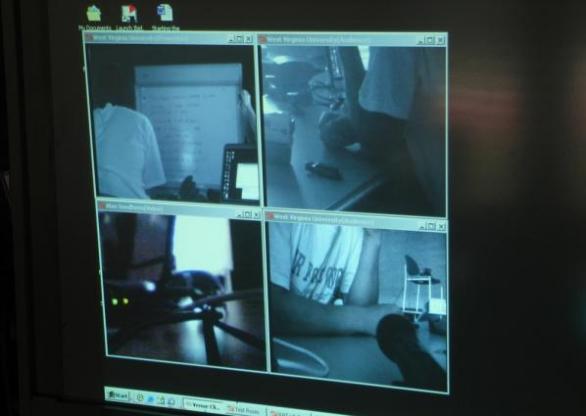
M: Although you are included in an exhibition in a physical space here the vast majority of your output has been presented on the net, usually in the context of one or more mailing lists. Could you say a bit about this. Was this a conscious choice or pragmatism or somehow both? Is there anything you particularly prize about the rhythm of work and presentation that comes with this kind of platform and has the eclipse of many of the old mailing lists with the rise of social media caused problems for you – have you tried to adapt to/utilise these newer modes?
A: It’s pragmatism combined with a desire to explore; edgespace teeters uneasily and tends towards what I call blankspace, where the imaginary exists – for example, the ‘heere bee dragonnes’ in unknown areas of early maps (I haven’t actually seen the expression, but it serves here). I present my work on Facebook and G+; I also used YouTube for a long time until I was banned from it.
M: Banned from it?
A: A long story that would take this too far afield…
I work well in presentation/talk/performance mode online and off. I believe in the depth of email lists of course. I do think my avatar work is really well suited to gallery spaces; I’ve had up to seven projections going at the same time. I’ve also performed live in virtual worlds or mixed-reality situations which are projected/presenced directly, and for a long time Azure Carter, my partner, and I worked with the dancer/performer/choreographer Foofwa d’Imobilite; the physicality of the work was amazing. And another aspect of what I do – what grounds me – is playing musical instruments, mostly difficult (for me) non-western ones; the instruments require tending and close attention. I tend to play fast. Most of them are strings, bowed or plucked; the music is improvisation. Recently I’ve been focusing on the sarangi, for example. And I’ve had something like 17 tapes, lps, and cds issued; the most recent is LIMIT, which was done in collaboration with Azure and Luke Damrosch, who did Supercollider programming based on concepts I’ve had about time reversal in real time – an impossibility in gamespace, but the edgespace is fascinating. The music products excite me; they’re out there in a way that my other work isn’t.
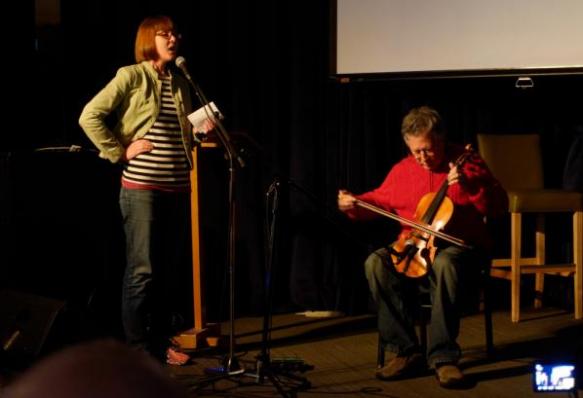
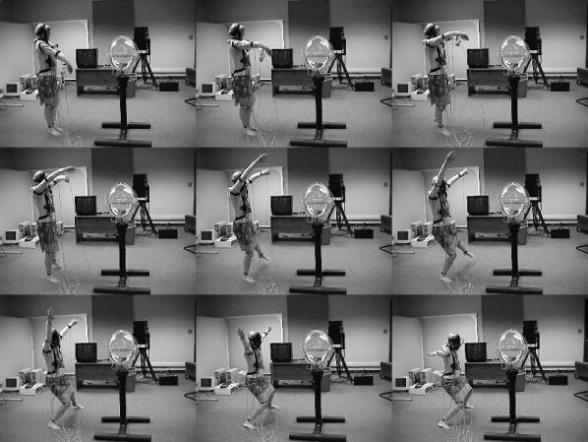
M: I remember when I first discovered internet art or whatever we want to call it (and there have been numerous quasi theological arguments about this) that there was an intense debate about whether the internet was a conduit or a medium – so many artist-scripters/programmer tended to rather look down on those who simply took advantage of the network’s distribution and dialogical properties (although I have to say that my view is that it was in this massive extension of connectivity that the real force of the thing resided – I remember being told in 2001 that moving image was not internet idiomatic which is amusing given the rise of YouTube &c.) Your work, certainly of the last 17 years or so, strikes me as being intimately tied up with the network and with the unfolding possibilities of new media but not necessarily in the sense that you work with the network itself to make objects, works and more in the second sense of the conduit…
A: It depends; for example one of the projects I initiated through the trAce online writing community in 1999-2000 – over the hinge of the millennium in other words – was asking a world-wide group of artists, IT folk, etc., to map traceroute paths and times from the night of 12/31 to the afternoon of 1/1; the internet was supposed to run into difficulties – over timing etc. – and I wanted to create a picture of what was happening world-wide. A second project somewhat later was using the linux-based multi-conferencing Access Grid system to send sounds/images/&c. from one computer to another in the Virtual Environments Lab at West Virginia University – but these images would travel through notes, much like the old bang!paths, around the entire world. So, for example, Azure would turn her head in what seemed like a typical feedback situation – the camera aimed at a screen, she’s in front of it, the result’s projected on the screen, &c. – but each layer of the feedback had independently circled the globe (through Queensland to be specific), creating time lags that also showed the ‘health’ of the circuit, much like traceroute itself. It was exciting to watch the results, which were videoed, put up online with texts &c.
Part of the difficulty I have is being deeply unaffiliated; I need others to give me access to technology. For example, I’ve used motion capture in three different places, thanks to Frances van Scoy and Sandy Baldwin at WVU; Patrick Lichty at Columbia College, Chicago; and Mark Skwarek at NYU. I also did some augmented reality with Mark, and with Will Pappenheimer. To paraphrase, I’m dependent on the kindness of others; I have no lab or academic community to work among in Providence; what I do is on my own. John Cayley gave me access to the Cave at Brown; Eyebeam in NY (I had a residency there) gave me space and equipment to work with, and in both places I was able to create mixed reality (virtual world/real bodies) pieces – those also bounced through the network…
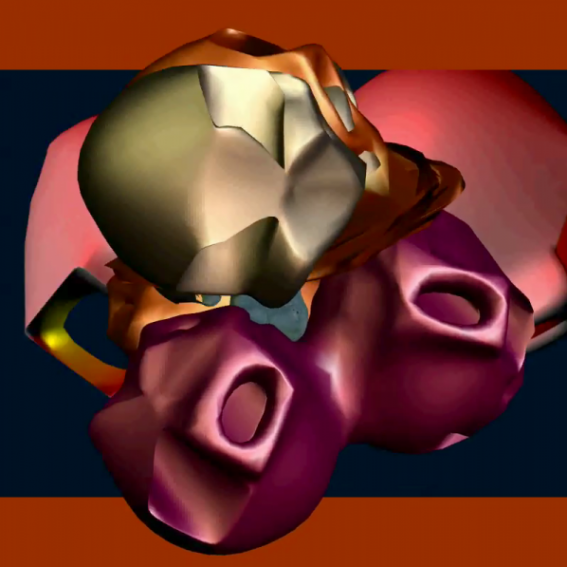
M: Could you talk, then, a bit about the motion capture/avatar work that seems to have been central to what you are doing over the last ten years or so. I also don’t think I’m mistaken in detecting a very decided move back to music making of late (I know this has always been there but it feels foregrounded again)
A: The mocap work has been ‘deep’ for me; it involves distorting the entire process, in other words distorting the somatic world we live in. There are numerous ways to do this; the most sophisticated was through Gary Manes at WVU, who literally rewrote the mocap software for the unit they had. I wanted to create ‘behavioral filters’ that would operate similarly to, say, Photoshop filters; in other words, a performer’s movement would be encoded in a mocap file – but the encoding itself during the movement itself, would be mathematically altered. Everything was done at the command line (which I’m comfortable with). The results were/are fantastic. A second way to alter mocap is by physically altering the mapping – placing the head node for example on a foot. But I worked more complexly, distributing, for example, the nodes for a single performer among four performers who had to act together, creating a ‘hive creature.’ All of this is more complicated than it might sound, but the results took me somewhere entirely new, new images of what it means to inhabit or be a body, what it means to be an organism, identified as an organism. This is fundamental. I’m interested in the ‘alien’ which isn’t such of course, which is blankspace. (The alien is always defined within edgespaces and projections; we project into the unknown and return with a name and our fears and desires.)

Most of what I do, for me all of what I do, is grounded in philosophy – ranging from phenomenology to current philosophy of mathematics to my own writing. So these explorations are also artefactual; I think philosophy is far too grounded in writing as gamespace; writing for me, when it’s touched by the abject, the tawdry, the sleazy, the inconceivable, opens itself up.
As far as music goes, I touched on it above in regard to LIMIT. One thing that concerns me is speed, playing as fast as possible, so that the body and mind move on de/rails that are at my limits; I think of this as shape-riding and the results and internal time dilations involved keep me alive…

M: You are genre/practice/technique promiscuous and you have a high level of skill in all –you could equally (and have been) styled Alan Sondheim ‘writer’ , Alan Sondheim ‘musician’, Alan Sondheim ‘maker of moving image work’ (with a marvellous sub-category ‘Alan Sondheim ‘maker of dance related video works’, for a while). Is one of these, in your heart of hearts, central, and, whether this is so or not, how do you place yourself in respect to the various traditions around these areas of work. How do you fit into the art world, into literature or the experimental film tradition? How do you relate to net art/networked art/new media &c.?
A: I don’t seem to fit into the artworld, net art, poetry world, music world &c. – it’s difficult for me to get my work around as a result. Nothing is central but a desire to see how systems form, coagulate, degenerate, collapse, become abject, &c. in relation to consciousness: How are we in the world? On a concrete level, finance enters into the picture; what can I do given a kind of lack of community around me? How can I push myself?
I’m not sure what ‘net art’ is, but certainly the Access Grid pieces &c. are of that, although not of Web-based protocols. There are so many ports out there to use! I do think of myself as a new media artist or someone burrowing into post-media. I’ve always had a few people who believe in what I do, who have helped or worked with me, and I’m really grateful for that. But in terms of institutions, I feel like an outsider artist and am treated like one. It came to a head for me years ago one day when I was living in Soho; I had a call from Vito who said he had realized that whatever I am, I’m not an artist; the same day Laurie Anderson spoke to me and said she realized that whatever I am, I am an artist. So my identity has been far more fluid than I’ve been comfortable with, and it’s affected my career. (There was that tape Kathy Acker and I made 1974, and I read an interview a few years ago, forget the source, with Edit Deak who said the tape wasn’t art at all; in the meantime, it continues to be shown at various venues.)
M: Finally, could you say a little about the work in this particular show?
A: The work in the show is a group of 3d-printed avatars distorted through the mocap process described above. For me they connect, deeply, with charred bodies, with anguish, with genocide and scorched earth. They appear also in number recent videos created in various virtual worlds, moving/performing etc. The anguish, so close to death and unutterable pain, is there. I’ve talked about the kinds of brutal killings occurring now worldwide, from Finsbury Park to the United States, the rise, not only of racisms, but violent nationalisms, in the U.S. certainly encouraged by the present regime. I’m sick of it. We all have nightmares. I want to understand this, this grounding in the blooded earth that shakes our very ability to speak, to think, to act.
And yet of course we must resist.

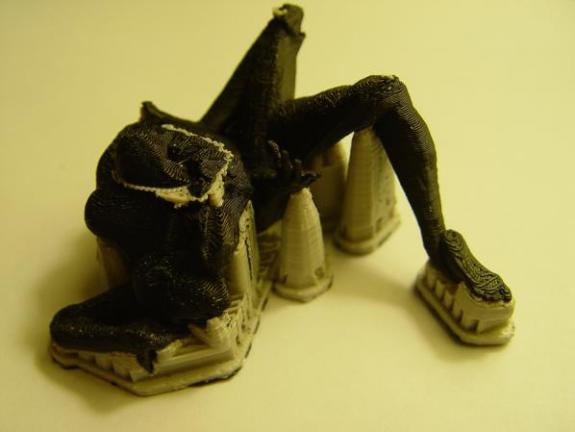
The work in the show is also critical, then, of technophilia, technological answers to the world, utopian dreaming. The top one percent benefit most from the results. I see utopian thinking as dangerous here. Our so-called president has his finger on 4000-5000 nuclear warheads. That’s the reality for me, and why I don’t sleep at night.

Michael Szpakowski: 聽琴圖 (listening to [Alan Sondheim playing] the qin), after Zhao Ji
// gravure, urushi lacquer & pigment on found wood // 30.5X7.5″
The productive alliance between instruments of computing techne and artistic endeavour is certainly not new. This turbulent relationship is generally charted across an accelerating process outwards, gathering traction from a sparse emergence in the 1960s.[1] Along the way, the union of art and technology has absorbed a variety of nomenclatures and classifiers: the observer encounters a peppering of computer art, new media, Net.art, uttered by voices careening between disparagement, foretelling bleak dystopian dreams, or overflowing with whimsical idealism. Once reserved for specialist applications in engineering and scientific fields, computing hardware has infiltrated the personal domain.Today’s technology can no longer be fully addressed through purely permutational or systematic artworks, exemplified in 60’s era Conceptualism. The ubiquity of devices in daily life is now both representative and instrumental to our changing cultural interface. Technologies of computing, networks and virtuality provide extension to our faculties of sense, allowing us phenomenal agency in communication and representation. As such, their widespread use demands new artistic perspectives more relentlessly than ever.
I, and no doubt many other academic observers, watched the Pokemon Go augmented reality (AR) game erupt into a veritable social phenomenon this year. The rapid global uptake and infiltration of AR in gaming stands in contrast to new media arts, still subject to a dragging refractory period of acceptance and canonization. Perhaps this is emblematic of a conservative art world that persistently recalls an ebullient history of computer art practices. In this lineage, many a nascent techno-artistic breach has been accused of deliberate obfuscation, of cloaked agendas under foreign (‘non-art’) orchestrations.[2] The seductive perceptual forms elicited through augmented reality (AR), virtual reality (VR) and immersive reality (IR) devices can be construed as mere spectacle, vulnerable to this type of critique. “Google Daydream” and “HoloLens” chime with a poetic futurism; cynics might instead see ready-to-wear seraphs veiling the juggernauts of Silicon Valley. However, the current groundswell in altered reality discourse may signal a divergence from such skepticism. One recent exemplar is Weird Reality, an altered reality conference that aimed “…to showcase independent and emerging voices, creative approaches, diverse and oftentimes marginalized perspectives, and imaginative and critical positions…. that depart from typical tech fantasies and other normative, corporate media.”[3] This is representative of the expanding, international trend towards artistic absorption of new media and technologies. It is a turn that emphasizes the potential for cultural impact, experimental daring, and even conjures the spectre of the avant-garde: radical transformation.
One of my PhD supervisors wisely admitted “…to stand out, the human artist must be more creative, diversified and willing to take aesthetic and intellectual risks. They can and must know the field they are creating in practically and philosophically, and confidence in their position and contribution to it is essential.”[4] Through this earnest lens, artistic production can serve as a conduit for ideas ranging from the speculative to the revelatory. In these divinations, we might trace a path through the sprawl of new media discourses, and find ourselves somewhere unexpectedly revitalizing. I hope to mark out some of this territory from a position of mediation. I want to invite art and art theory into an arena of uninhibited collusion, using critical writing to facilitate the exchange between digital media theorists and artistic practitioners in the most open sense. Furtherfield.org offers an allied platform for the aims of the Theory, Meet Artist [5] project, articulated here in an interview dialogue.
Originally published in The Fibreculture Journal, Edwina Bartlem’s 2005 article Reshaping Spectatorship: Immersive and Distributed Aesthetics proposes that immersive artwork practices have transformative potential. Across a range of modalities, these works can influence perceptions of ourselves and our extended digital presence in a variety of scenarios and configurations. Whilst participating in such practices, we are prompted to consider IR encounters as form of mediation around our human embodiment, subjective identities and cultural interactions. Bartlem touches on ideas of prosthesis and sensorial augmentation within these immersive experiences. Creation of a synthetic environment is posited as an opportunity for deepened self-reflexivity and awareness.[6] In parallel, a spectrum of narratives around the technologically adapted ‘post-human’ emerge. Their tone and reception hinges upon the artist’s individual performance in roles such as programmer, director, composer or overseer to such works.
Rachel Feery is an Australian artist interested in the intersection of visual art, soundscapes, video projection, experiential installations and technology. Her artistic practice explores alternate realms, the meditative headspace, ethereal imagery and immersive environments. For this interview, Bartlem’s paper is positioned alongside and in dialogue with Feery’s work, Clearing the Cloud.
Clearing the Cloud is described by the artist as “… a multi-sensory work inviting pairs to cloak-up, complete a circuit, and experience simultaneous mapped projections visible through a hooded veil. The artwork aesthetic draws from esoteric sciences and holistic health practices. The environment is intimate, quiet much like a room where one would go to receive therapeutic treatment.
Two participants at a time are invited to cloak up, remove their shoes, and step onto sensors on the ground to generate a circuit of light and sound. Starting with a ‘personalised scan’ followed by a projection of light and sound, all visible and audible within the suit itself, the individuals can either interact with each other or be still and silent. The robe, constructed of a semi-translucent, lightweight fabric with a soft skin-like texture acts as a supplementary skin. One’s field of vision is slightly inhibited by a lightweight mesh that both creates a screen-vision as well as the ability to see through it.”
Jess Williams: I first came into contact with your practice during your talk for Media Lab Melbourne in September this year. You chronicled your process, influences, past works and brought us to Clearing the Cloud. I was struck by the experiential intimacy of the project, and the immersive qualities that you deployed though staging it. In her paper, Bartlem suggests that participants in immersive practices cannot be immersed without being affected by the environment on perceptual, sensory, psychological and emotional levels. What kind of sensorium did you want to create for Clearing the Cloud, and did you contemplate the possibility of this type of affective influence on your participants?
Rachel Feery: In one sense, the project came about while I was thinking about art as therapy, and thinking about technology that has the potential to create a meditative space. The site of the exhibition, Neon Parlour, was previously a centre for healing and meditation. I wanted to create an intimate room that would reflect the building’s history. Speaking of the sensorium, I was drawing from esoteric sciences, looking at auras, and Reiki practices whereby chakras are ‘cleared’. This is all reflected in the visual and environmental elements of the work, but ritual aspect is key. It’s important for participants to enter the artwork through the process of putting the garment on. The ritual is something you have to experience with someone else, and there’s a synchronicity between the people who participate. If either person takes their feet off the sensors, the ‘therapy’ is reset. It becomes apparent that there’s a level of commitment to it, that there’s a trust involved. If one person backs out, the interaction stops and resets.Clearing the Cloud ultimately asks participants to commit and experience the work together. Some participants responded that they felt lighter, and that time had passed out of sync with the seven minutes that had passed in reality. I thought this was an interesting reaction when nowadays, our attention spans are said to be dwindling. I feel there’s something significant in a lot of those esoteric sciences.
JW: Bartlem maintains that immersive art offers more than pure escapism into a constructed simulacra. These types of artworks can also elicit a type of self-awareness or meditation on perception and one’s own agency in the prescribed environment. I’ve noticed a strong tendency to consider transcendence, or the superhuman, in many futurist discourses around technologies that interface with the human body. This spans augmented reality, virtual environments and may well capture less conspicuous (yet ubiquitous) examples, such as fitness metrics or geolocation of the self through GPS. How do you position narratives of extending or ‘hacking’ embodiment within your own work?
RF: There’s an aspect of being both physically present and also outside of yourself whilst engaged in Clearing the Cloud. As a participant, you find yourself looking through a meshed veil that’s being projected on, and if you adjust your focus, you can see coloured projections on the other participant. This dual, simultaneous vision got me thinking about the ways that newer technologies such as AR and VR can affect what we see and the way that we see. Essentially, those applications allow you to see an environment with a filter over it. You have the sense during the ‘clearing therapy’ of an outer body experience, which is something that certain types of meditation aspire to. Escapism can imply you’re ignoring what’s happening in the outside world and going inside yourself, or elsewhere. But technology is blurring these boundaries, becoming increasingly intertwined in everyday activities, both personal and shared. You’re not really escaping if there’s an application present to assist with something, provide new information, or an augmented experience. In that sense, I would agree that it’s not pure escapism. You’re in two places at once. I would say that the word escapism has darker implications, such as detachment and avoidance of reality over a virtual space. Meditation, however, is affiliated with deeper understanding of oneself, and acceptance and appreciation of both worlds. As technology gets more advanced, I think it will have the ability to do both.
I like the idea that two people willingly participate in this scan and projection without question. I feel it relates to this influx of new technology applications that are free and that everyone’s willing to try. On the darker side, I wonder about the consequences of giving away information- effectively, parts of yourself- to participate in the unknown. I also like the idea that Clearing the Cloud is presented as a holistic therapy, a gesture of removing the build-up of accumulated information, or as protection from the data mining we’re exposed to through technological interfacing. We’re made vulnerable to hacking, but in a sense it’s not really hacking anymore, it’s just collecting what we’ve been giving. There’s such a rush to use new applications and technologies but everything is untested. Essentially people become trial subjects through their willing self-disclosure.
JW: You mentioned David Cronenberg’s 1999 film eXistenZ as a formative influence in your creative development. Underpinning the science fiction and horror themes, a specific abject revulsion is reserved in this film for prosthetic extension and modification to the human body. Could the veils (with their accompanying perceptual experiences) used in Clearing the Cloud be viewed as a form of sensory prosthesis?
RF: I would say I was more interested in the idea of accessorising tech, rather than prosthetics. I am drawn to the way that Cronenberg’s characters leave their physical body and enter another state, but again, this is quite geared towards escapism. Using the veils arose through researching a mix of religious and medical robes, futuristic fashion and science-fiction inspired fashion. They all seemed to be white. There’s also a relationship with the cloak to other forms of wearable technology. I’m interested in this – in Google Glass, VR headsets, and related items – as both a current fashion trend and also as a subtle way that technology encroaches on our day to day lives, present as we move through and see our worlds. While I perceive the cloak itself is not so much of a prosthesis, there are certain physical qualities of the material that feel both organic and synthetic. They’re made of a foggy, PVC translucent plastic: when worn, this fabric feels like a skin. The backwards-oriented hood also functions as a way to obscure the face, and presents a form of anonymity that is ultimately within the concept of ‘being cleared’ and ‘regaining yourself.’ There are other associations too: of a uniform, of being part of a community that has been cleared, or erased.
JW: Typically, when audiences are presented with new media or computer mediated artworks, they have limited access to the operational interior of the encounter. Whilst it can be argued that more traditional media or installation works also don’t completely disclose their construction or authorship, new media practices seem subject to increased scrutiny and distrust around how- and to what end- they operate. In her paper, Bartlem proposes that instead of masking the presence of technology and interface, immersive artworks tend to overtly emphasize the synthetic artifice of the experience. In regards to revealing the hierarchies of control implicit in executing works like Clearing the Cloud, how much do you wish the audience to have a certain ‘privilege of access’? For example, do you consider it necessary to directly reference programming script, hardware circuitry, or technologies of surveillance?
RF: The actual technology used in the exhibition was not necessarily about aesthetics. Hardware and devices, such as projectors and Raspberry Pis, were not elements that I wanted audience attention drawn to. Moreover, I think if you give spectators interior access, it can take away the simplicity of the art experience. The most that I would give away would be the materials visible or listed in the artwork. I actually tried my best to mask the technology, hiding cords and mounting the projectors up high to make it feel innocuous and to minimise its physical presence. Once people can identify familiar tech, there is an immediate undermining of mystical impact. For this artwork, I worked with artist and technologist Pierre Proske to write a code that triggers the projection once the sensor pads are activated. The hardware elements are present, but they’re definitely not the focus. Rather, it’s the experience itself, the meditative space created that participants are made most aware of. I think that’s why auras, and energy healing, are so fascinating: they rely on people’s ability to embrace and believe in the healing process, which in turn requires any distractions or doubts to be removed- or at least obscured. Obsfucation was deliberately built into the back-to-front hoods used in Clearing the Cloud. Restriction of the visual frame of reference was intended to encourage immersion in the experience.
JW: As we’ve discussed, the eponymous gesture of “clearing the cloud” reads as recuperative, meditative, and somewhat subversive towards strategic or commercial use of new technologies. This is a position that Bartlem suspects is endemic within artistic instrumentalisation of these types of media. Do you feel a sense of alignment with a more radical manifesto in new media practice?
RF: A lot of my ideas draw from or relate to concepts that have been proposed in science-fiction films… science-fiction is radical. Sci-fi extrapolates the current social, political or technological trends, or explores alternate models. Clearing the Cloud also proposes a need for something that hasn’t quite been quantified, a therapy to restore and protect from encounters with technology. Clouds traditionally connote lightness, and formlessness, but today they weigh heavily on us in a digital data context. We carry more and more information, and give more and more of ourselves. We’re now clouded by our metadata trails, and it’s radical to think that a therapy can address this, and return us to a state of clarity, in a literal and metaphysical sense.
JW: After your talk, I asked you a question around whether Clearing the Cloud‘s artistic narrative could function beyond a ‘closed-circuit’ proposition. Whilst Bartlem scopes immersive and telepresent practices in her paper, she doesn’t directly address works that hybridise the two concepts. She frames telepresent artworks as those that link participants from distant locations, precipitating notions of networks and a multi-user participation within art. How would a multiplicity of network relations impact on a scenario like that you have staged in Clearing the Cloud?
RF: An excellent question, and very relevant to the nature of the work. The participant’s experience centres on a propositional ‘defrag’ of their personal hard-drives, regaining clarity, allowing independent thought free from the prison of past browsing histories and metadata maps. Those in a networked community also benefit from this speculative process: the more persons ‘cleared’, the stronger the authentic connections would be. If you were to be ‘cleared’, and your online history erased, the persons closest to you would also need to be erased in order to completely eliminate any trace of you. It’s like a chain reaction. Although only two people might be scanned at a time, for a complete ‘clearing’ you would need the eventual interfacing of everyone you’ve ever come into contact with. Ideas around utopias were intrinsic to the development of Clearing the Cloud. In one view of the work, those people who have been ‘cleared’ became part of a separate, even sanctified community. This meditation was idealistic, borne of the desire to find a way to protect our identities and those of our networks when they are potentially threatened or compromised by interactions with technology.
Clearing the Cloud was originally exhibited in 2016 as part of This Place, That Place, No Place curated by Irina Asriian (Chukcha in Exile) at Neon Parlour, Melbourne, Australia.
Feature image: Still from Dreams Rewired: original source Das Auge der Welt (Germany 1935); dir: C. Hartmann
Dreams Rewired / Mobilisierung der Träume – Trailer from Amour Fou on Vimeo.
The 2015 film Dreams Rewired, recently shown at the Watermans Digital Weekender in London on 12-13 November, will be screened again at Watermans on 3 December. Directed by Manu Luksch, Martin Reinhardt and Thomas Tode, the film has the tagline ‘Every age thinks it’s the modern age’. It looks back to the early 20th Century, to the development and implementation (first locally, then globally) of the telephone, the radio and television.
The makers of Dreams Rewired unearthed and arranged early film recordings and brought them into the 21st century context. This was done via a playful narrative written by Manu Luksch and Mukul Patel and read by Tilda Swinton. The tagline was well chosen; almost everything Swinton says would have been relevant at almost any point within the last century. Time periods, machineries and political movements are connected in clever and unexpected ways, meaning that Dreams Rewired, a durational video whose narrative follows a recognisable storytelling structure, makes numerous links between times, places and people, which branch off from the safety of its linear structure.
Dreams Rewired is something of a treasure trove, not only for the glimpses its found-footage building-blocks gives into a past era but also because of the inter-generational, inter-national, inter-thematic connections it makes. Frequently while watching the film I felt the urge to burrow into an investigation of one of the clips, stories or introduced contexts. To emulate this ‘tip of the iceberg’ effect, this review will pull words directly from the film, linking quotations to some of the themes which appear and reappear throughout.
“A new electric intimacy”
With new media come new practices of communication. One of the recurring themes described in Dreams Rewired is the coupling of intimacy and invasion of privacy introduced to society along with a new communication method. Just as a new invention is prototyped, its social implementation causes new prototypical behaviours – new ways of caring, new ways of injuring, new comings-together, new separations. Uncertainty is inherent to experimentation.
“The waves travel at the speed of light, defining what simultaneous means. Information can travel no faster.”
When something is newly possible it also newly achievable – new precedents are set and new avenues opened for exploration. There is a flurry of activity, a rapid diversification. For those looking to gain or retain power over others, this is a problem; diversity requires more effort to manage. Initial flurries of activity are curtailed by the introduction of rules, the setting of precedents.
This limitation sets new targets to meet, new challenges to overcome. The cycle starts again as those in power look for ways to consolidate it while those without look to gain what they can. This is a simplistic, but not inaccurate, description of the machinery of the capitalist world.
This cycle of diversification and restriction is always coupled with the establishment and transcendence of thresholds. Experimentation with a new technology reveals some of its limits. (Side note – of course, what is understood as a limit is defined by wider cultural contexts.) “Information can travel no faster” is a provocation to speed up.
“Geography is history”
New advances cause conceptual shifts. Early telephony and television shrunk the gap in time between a thought or plan and its activation. Understandings of time and geography changed, and it became possible to move into new spaces and in new ways at socially impressive speeds. New powers, in short, were available to those who knew how to access them, to those who understood the preceding context well.
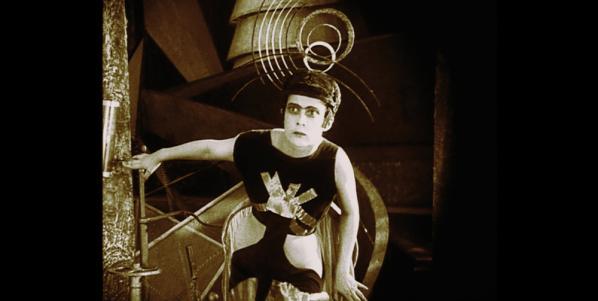
“A model of the new human is put into circulation”
A network grows, its complexity and partner processes intensifying. The machinery of daily life is altered, and daily life is a testing ground. Social interactions change as the new set of behaviours required to work the new machinery collide with existing social norms and rituals. New jobs and new workplace structures appear and people previously without responsibility or power find themselves in contact with it (though they may not understand the possibilities at first). People are no longer the same beings as before. Cycles of experimentation and consolidation reach into the body.
“Someone will have to lift us up. But who will lift them up?”
The flurry of excitement surrounding a new invention is based on the idea that ‘our’ lives will be improved, that ‘we’ will be able to do, see, have more. There is a problem here. The words ‘we’ and ‘us’ are too abstract – they bracket whoever the speaker wants them to bracket and recapitulate the prejudices they have. Anyone who is not included as part of the ‘we’ simply does not exist. This is convenient for the ‘us’ – while ‘we’ rush excitedly towards a future in which we have more and better, what ‘they’ do is of little concern. The ‘us’ does not care – or even think much – about the ‘them’. The ‘us’ cannot understand why the ‘them’ has not joined the ‘us’. After all, the ‘us’ is at a new threshold – who would not want to reach the other side?
“Personal profiles, passwords, biometrics..fully documented. Every trace filed. Bigger data, better analytics. Opt out, and we lose our place in the world. So…we share the keys to our desire, our habits, to ourselves.”
To be part of the ‘us’ and the ‘we’ requires effort. To ‘opt in’ requires sacrifice. At the same time, ‘opting in’ is the easiest thing in the world when ‘opting out’ means facing a void. Advice on how to do well, how to achieve, how to be healthy is easy to come by, but there is little guidance for those who find themselves, or wish themselves, outside the mainframe. Losing one’s place in the world means losing access to that mainframe and the stability that comes with a highly legible structure. Today the legible structure is far-reaching and well established, to the extent that opting out is dealt with violently. The new models of human coming into circulation have trouble recognising the old. There is a mutual rejection.

“Government regulation stifles amateur culture – military and commercial interests occupy most of the spectrum … transmission becomes a privilege, not a right”
As I wrote earlier, the ‘us’ and ‘them’ structure is too simple. It would be more accurate to think of people as communicating on multiple frequencies. The machinery of society is complicated to say the least, and made more so by the mainframe, which amplifies transmissions at some frequencies while restricting others. In the early 20th Century, multiple obscure radio channels were repressed, responsibility placed with public backlash following rumours that amateur radio was responsible for the sinking of the Titanic. Side questions: where did the rumours come from? What were they based on? How was the public response measured?
“For the first time he hears himself as others do. A voice absolutely familiar but estranged…But her power also grows: by controlling his voice she controls her time”
There is a strange relationship between the controller and the controlled. For every CEO there is a team whose own agenda seeps into the workings of the company. Dislocated power and fragmented or unplaceable identity are some of the symptoms of a complex system undergoing change. When a system is so complex as to involve multiple timescales, spaces, materials and structures, it is impossible to predict the future.
—
Dreams Rewired is part of the Technology is Not Neutral Symposium
3 December 2016
Watermans, London
https://www.watermans.org.uk/events/technology-is-not-neutral-symposium/
Featured Image: Ubermorgen, “Vote-Auction”, 2000. Installation view from the exhibition “Whistleblower & Vigilantes”
It has been a long time since an exhibition shocked and confused me. In fact, I cannot even remember when it last happened. Yet the exhibition Whistleblowers & Vigilanters has managed to do just that. Curators Inke Arns and Jens Kabisch of the Dortmund art institution Hartware Medienkunst Verein (HMKV) have put up a show in which complete nut cases are presented side by side with political activists, artists and whistleblowers a la Edward Snowden. This makes the exhibition ask for quite some flexibility from the audience. Visitors have to work hard in order to understand the connection made here between, for example, racist conspiracy theories expressed through YouTube videos and the ordeal of a whistleblower like Chelsea Manning.
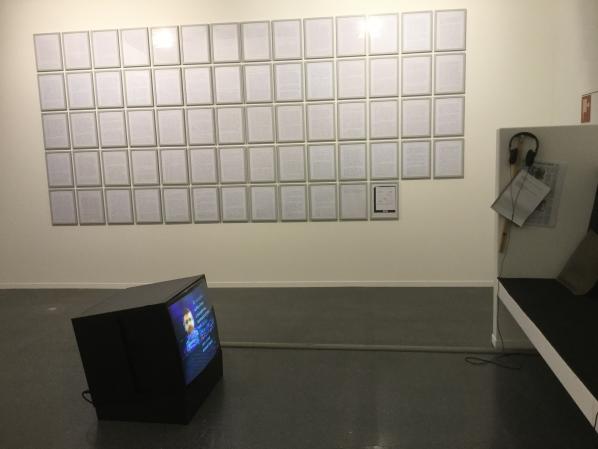
The very short introduction text to the exhibition guide is part of the puzzle we are presented with. The basic premises of the exhibition are explained in what I think is not the best possible manner, because it leaves out any mentioning or analysis of the huge political differences among the people and works presented. At the same time the use of words like higher law and self-legitimization easily creates a feeling of unease about each practitioner or type of activism in the show:
“The exhibition asks what links hacktivists, whistleblowers and (Internet) vigilantes. What is the legal understanding of these different actors? Do they share certain conceptions? Who speaks and acts for whom and in the capacity of which (higher) law? Among other issues the exhibition will examine the differing legal conceptions and strategies of self-legitimisation put forth by activists, whistleblowers, hackers, online activists and artists to justify their actions.”
By placing the revelations of Edward Snowden next to the complete print out of the manifesto of the Unabomber or (more harmless but still of a different level of impact) the battle over a hostile domain name takeover in Toywar the first impression is a levelling of the practices and people involved. To make some sort of distinction between the various represented rebellious or activist positions in the exhibition guide the whole is divided into sections. The sections however do not indicate socio-political position or relevance, but rather imply the ways people legitimize their actions (1).
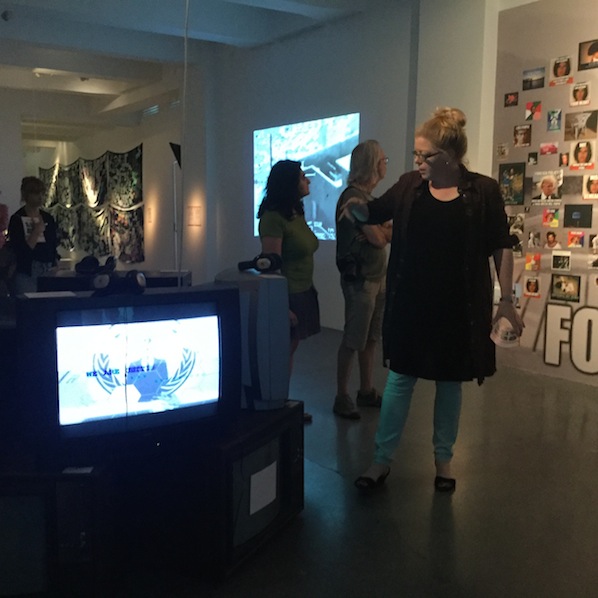
The spatial design and mapping of the exhibition seem to give some indication of political direction, but it is accidental. To the far right of the entry we find all installations labeled ‘Vigilantes’: a website collecting images of online fraudsters (419eater.com), two videos about Anders Breivik and Dominic Gagnon’s collection of mostly right-wing extremist YouTube videos. Slightly controversial is how the Vigilantes section puts together these quite obvious nut cases and criminals with Anonymous and what the curators call ‘Lulz’, the near troll-like jokesters who ridicule anything they don’t like with razor sharp memes. I am not sure whether these two products of the online forum 4chan deserve this simple pairing to YouTube hate preachers. A finer distinction between the various Internet underbelly representatives might have been better here. That this could have been done is shown by Lutz Dammbeck’s archive on the Unabomber’s placement in the Vigilante section, which has two labels. It is the sole representative of the Critique of Technology section as well. Another strange pairing happens in the Antinomism section, where an installation around a video with Julian Assange and a rightwing terrorist bomb disguised as soda machine are the only examples.
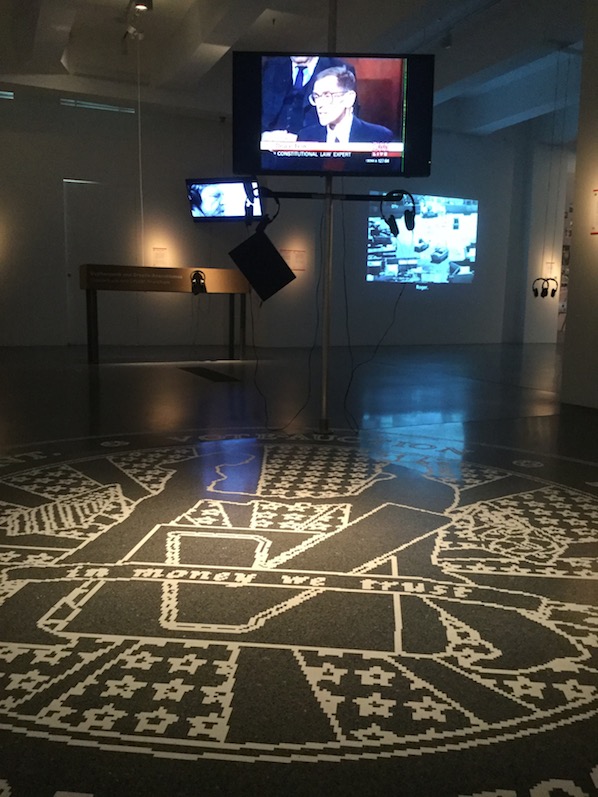
The middle ground of the exhibition shows a mix of artist activism and hacker culture. Mediengruppe Bitnik are here with a video of their Delivery for Mr. Assange. Black Transparency by Metahaven is represented through one utopian architecture model and printed wall cloths. The Peng! Collective’s Intelexit: Call-A-Spy has a telephone stand in the exhibition. The provocative sale of US votes in Vote-Auction by Ubermorgen is here as docu-installation. Etoy’s legendary Toywar is represented as well, with -in my opinion- too small a stand. Traces of many other art works and activist projects are presented in display cases, which give some more background or context to the theme. These were one of my favorite parts of the exhibition, next to the amazingly diligent and meticulous hand-drawn documentation of the Manning trial by Clark Stoeckley.
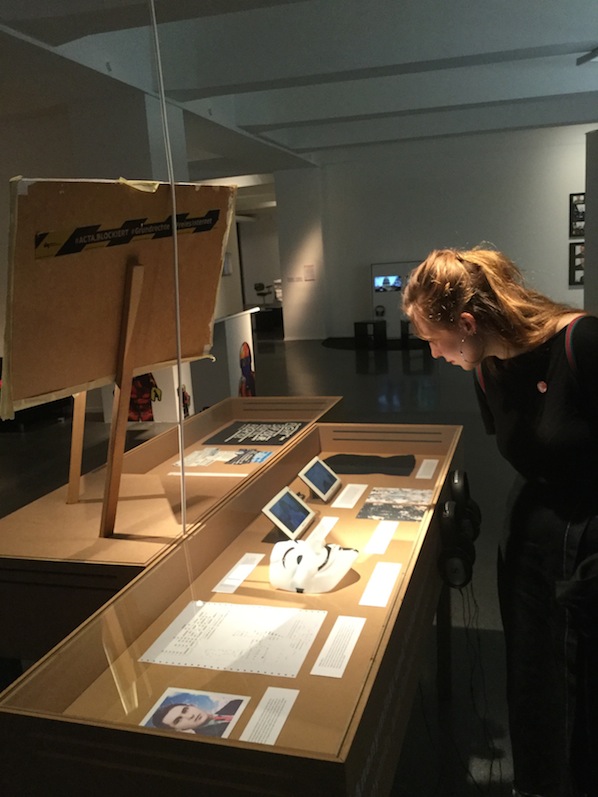
The display cases are dedicated to freedom of speech, tools of online resistance, the Netzpolitik case, anonymity and collective identities and cypherpunk and crypto-anarchism. They provide an important insight into the context within which the other practices in the exhibition exist.
Here we find Luther Blissett, the Italian born collective online identity, with a name borrowed from a former football player. The Blissett identity is related to pre-Internet art practices, in particular Neoism, and has been used for various art pranks and activist projects, particularly in Southern Europe.
Other art projects include the influential book Electronic Civil Disobedience by Critical Art Ensemble, the German hacker art collective Foebud’s battle for free speech and privacy (presented with one of Addie Wagenknecht’s anonymity glasses), and the Electronic Disturbance Theater’s Floodnet. The latter is a DDoS attack software that was used in actions for the Mexican freedom fighters the Zapatistas, by the Yes Men and for Etoy’s Toywar project.
There is also a print out of the Cypherpunk mailinglist. The cypherpunk crypto-anarchist community is responsible for some of the most influential elements of the free Internet. They produced the PGP encryption technology, cryptocurrency such as Bitcoin, TOR, the idea of WIKI and torrent platforms and marketplaces like the Silk Road. Julian Assange was one of its members.
Last but not least the presentation of the Netzpolitik.org case, which covers a German censorship scandal from last year, had to be part of this exhibition. Journalists from the online magazine Netzpolitik were arrested for treason after they had published about classified Internet surveillance plans of the German secret service. A copy of the accusation letter from the state prosecutor is oddly signed with ‘Mit freundlichen Grüßen’ (‘With kind regards’).
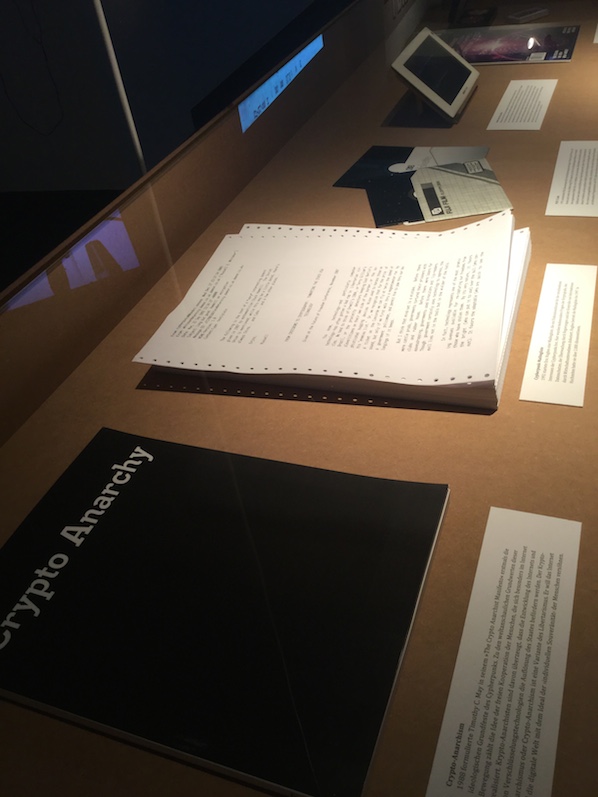
All in all the display cases made me happy to see some of the events and works that have been so hugely influential to the development of the Internet (and thus to the development of our current culture and politics) represented in a physical cultural space. They show a side of Internet culture that is heavily underrepresented in the general discourse around new media technologies in both mainstream media and art. During a private tour of Whistleblowers & Vigilantes for visitors of the simultaneously running Hito Steyerl exhibition Inke Arns explained how for her this exhibition is long overdue as well. According to Arns the threat to our freedom through abuse of new technologies should receive as much attention in art as the anthropocene. HMKV sees it as its responsibility to do something about it.
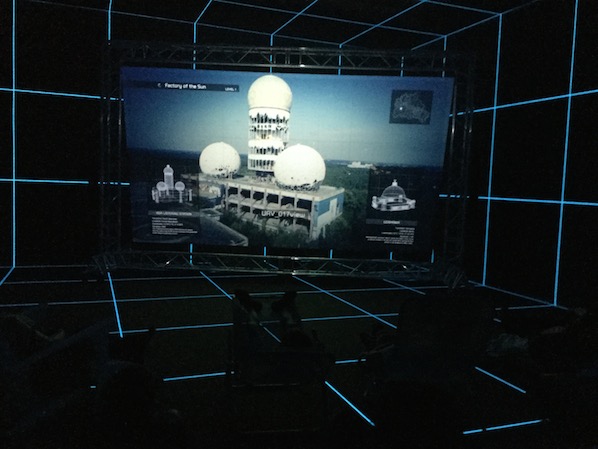
Whistleblowers & Vigilantes however does not make a straightforward statement. Its structure, both physically and content-wise, is too complex for that. This does not mean it is a bad exhibition. The bringing together of the ‘Lulz’, Anonymous, the Unabomber, net art, hacktivism, hackers and Manning, Snowden, Assange and even Breivik in one space definitely creates a lively exhibition, which cannot leave a visitor unaffected. This strange assembly then needs to be unraveled and this is where the curators take quite some risk. The addition of Hito Steyerl’s installation Factory of the Sun, an exhibition that runs simultaneously on a different floor, could help to bring the serious, crazy and light elements of the show together for that part of the audience that loses its way. In her smart playful manner Steyerl blends science fiction, humor and critique of the surveillance society in a faux holodeck cinema experience. The exhibition also includes a few live events that steer the whole into safe waters. Netzpolitik journalist Markus Beckedahl has given a presentation and so has Jens Kabisch. Kabisch wrote a text about whistleblowers that is available on the website, but this text is unfortunately only available in German. My advice to the non-German audience is to download the press kit in order to get more background information.
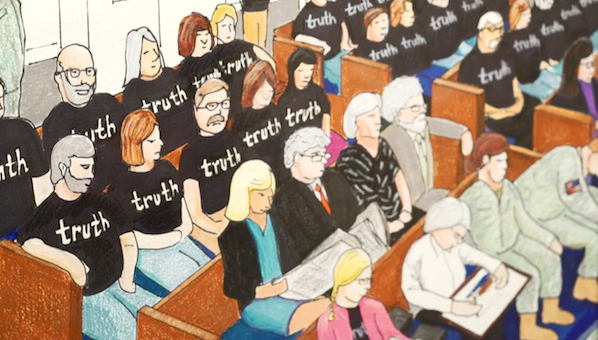
Whistleblowers & Vigilantes is a challenge to the audience. It asks for more reflection and time to take in than most exhibitions. After getting some more grip on it the complexity and scope of the exhibition, however, is impressive. It not only brings together many important, interesting and sometimes scary examples of contemporary forms of resistance and rebellion. What is also represented is the space of resistance and play that escapes attempts at systematic control, even in a full-on surveillance state. Once recovered from my initial shock this is what stayed with me the most. The wide-ranging documents, objects and installations reveal the system’s shadow spaces and vulnerabilities. Whistleblowers & Vigilanters differs from the flood of other art exhibitions themed around surveillance and control by reflecting on the legitimacy of online autonomous political action in general. Indirectly this means it also reflects upon the space of life that exists beyond all control. Rather than create another horror show around the future of privacy and freedom, with Whistleblower & Vigilanten we are presented with the persistence of fringe cultures and of free thinkers. For me this makes this an exhibition of hope.
Whistleblowers & Vigilantes. Figures of Digital Resistance
HMKV, Dortmund
9/4/16-14/8/16
https://www.hmkv.de/_en/programm/programmpunkte/2016/Ausstellungen/2016_VIGI_Vigilanten.php
https://www.hmkv.de/_pdf/Ausstellungsfuehrer/2016_VIGI_Kurzfuehrer_Web.pdf
In the introduction of Civic Radar, editor Peter Weibel sets out the motivation, layout and journey of the book. This first comprehensive monograph of Lynn Hershman Leeson’s artistic career, spanning across five decades. It must have been a dizzying publication to work on, when compiling her pioneering work in the fields of photography, video, film, performance, installation, and interactive and net-based media art. It is noteworthy that Hershman Leeson collaborated in its production. One feels her personal involvement in the book – its richness, care and detail, shows in its nearly 400 pages, and approximately 500 illustrations. It also features supporting texts by other writers, curators, theorists, and artists, such as: Andreas Beitin, Pamela Lee, Peggy Phelan, Ruby Rich, Jeffrey Schnapp, Kyle Stephan, Kristine Stiles, Tilda Swinton, Peter Weibel and interview by Hou Hanru and Laura Poitras with the artist.
“I try to live in the present, because most people live in the past. If you live in the present, most people think you live in the future, because they don’t know what happens in their own time.” Lynn Hershman Leeson.
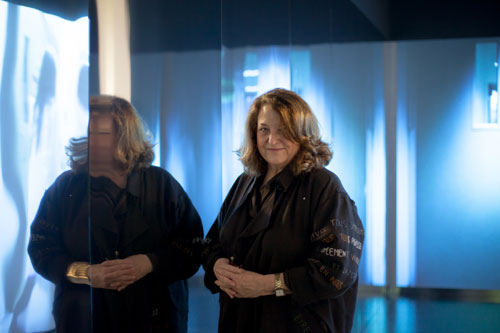
Lynn Hershman Leeson has pioneered uses of new technologies, recognized as key to the workings of our society today. She tackles the big questions surrounding: identity in a time of mass, overpowering consumerism; privacy in an era of surveillance; the interfacing of humans and machines; the relationship between real and virtual worlds; and new bio-ethics surrounding practices such as growing parts of the human body from DNA samples. We can think of Hershman Leeson as a direct artistic descendant of Mary Shelley. Consider Shelley’s celebrated publication, Frankenstein: Prometheus Unbound, published in 1818, and its challenges towards macho revolutionaries of ‘reason’, and her critique of the misuses of science and technology by the patriarch. We can see strong parallels between both women. They are feminists, who have managed to find ways around (and to work with) traditional forms of dominant, patriarchal frameworks, so to express personal, creative and cultural identities, on their own terms.
“Lynn Hershman Leeson’s mission statement seems to be that the body is a programmable software embedded in a changeable hardware. Therefore, she shows us so many hybrids and mutants, aliens and agents, actors and avatars, in real life and second life. From Dolls to clones, she demonstrates the paradox plurality of identities especially in the age of total observation.” [1] (Weibel 2016)
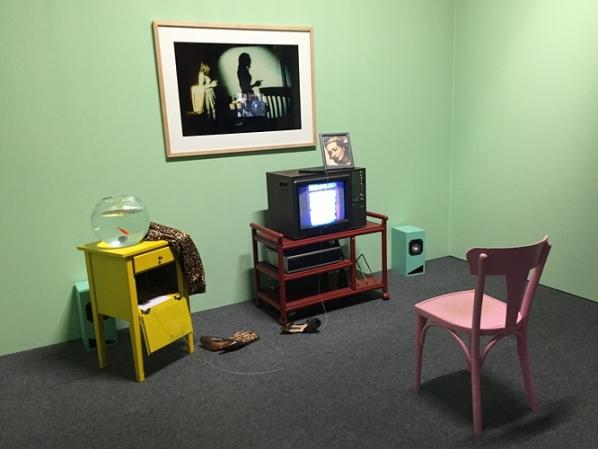
Hershman Leeson’s artistic process however does not keep its distance from the processes of science and technology. She leaps into the depths of our fears and unreservedly engulfs herself, and her imagination in their material influences and modifications. Like Donna Haraway, Hershman Leeson takes cyborgs, misfits, biology, mutation and transformation as her inspiration, contexts and materials. And also like Haraway, she playfully and critically owns concerns around science and technology, along with the ethical issues that may arise out of their continuously shifting, influences on society; and, thus not owned by or weighed down by them. Every work put forward by Hershman Leeson, is an experiment. Her interests and knowledge inspired by science and technology reflects her constant state of contemporariness. Her work directly correlates to breaking down systems of perceived values.
“Hershman Leeson confronted conventional gender roles and exposed the normative construction of gender identity. Some of her videos have included cross-dressers and transgender men and women, as in Double Cross Click Click (1995), and her assumed male pseudonyms at a time when the art world was dominated by men who mostly ignored women.” [2] (Beitin 2016)
Hershman Leeson’s art moves fluidly between different formats, contexts and disciplines. This of course is not easy to brand. The art market survives by promoting art that fits into particular roles and products that are easy to promote, predict and consume. The irony here is that the art world promotes the idea of itself as a site of novelty and insights, but in reality represents a deeply conservative culture. Some artists, Hershman Leeson is one of them, transcend the contemporary artworld norm and build alternative universes, contexts and identities, where the art is so investigatory and esoteric, traditional conventions are challenged.
When I interviewed Hershman Leeson last year for Furtherfield she talked about how she’d like to “eradicate censorship, and make more transparent the capitalistic underpinnings that are polluting access, value and visibility”. In the 70’s, she was the first artist working on a prison art project in San Quentin, and many of her early public art works “geared toward social change.” [3]
Civic Radar shows us that her work is not reduced to a singular, reflection of her own creative self. There is a wider story and it includes the voices of many others as part of the narrative of her life and her work, as well as reclaiming a history in a male dominated society.
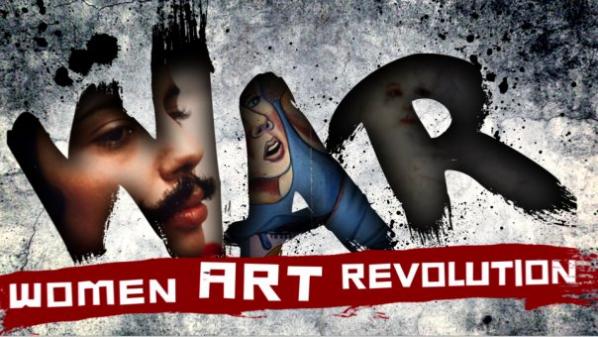
We see reaffirmed a varied and dynamic history where she has been involved in strengthening the role of women in society, as part of an extension of her art process. One excellent example of this rich history is that over a period of 40 years she interviewed an extensive array of women artists, historians, activists, and critics who integrated personal and political content into their work. Then, some of that gathered material was made into a film project !Women Art Revolution, in 2010.
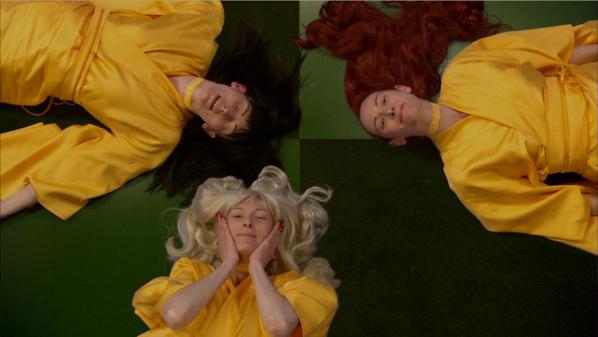
Lynn Hershman Leeson has not only achieved pioneering work as an artist, but also as filmmaker. She has collaborated with actor and Oscar winner Tilda Swinton in several feature films that have gone on to receive numerous awards at international film festivals on account of their outstanding quality and innovative themes. »Teknolust« is an absurd, amusing and scientifically highly topical science-fiction drama on the subjects of cyber-identities, biogenetics, gender constructions and sexual self-determination in the age of the Internet. The plot turns on the scientist Rosetta Stone (Tilda Swinton), who illegally produces three clones of herself. The artificial entities can only be distinguished by the color of their clothing and live in an enclosed cyberspace. Because they are dependent for survival on the male Y chromosome, Ruby, the femme fatale among the clones, goes in regular pursuit of men. Sexual contact with Ruby leads to impotence in her lovers as well as to an allergic reaction triggered by a computer virus which is transferable to human beings. The FBI becomes aware of the clone family’s machinations following the increased incidents of infection among men, and begins to investigate. Note*
Her work has crossed into many different fields and formats. Which includes: installations, videos, films, sculptures, robots, avatars, contracts, computer programs, photography, paintings, drawings, collages, browser based art, artificial intelligence, bio-matter, network communication systems and devices. Synthia Stock Ticker and Dollie Clones are just two examples that demonstrate how ahead she has been with her ideas and her integration of digital technologies into art. Synthia Stock Ticker, is a networked-based media artwork made in 2000. It refers to the stock ticker invented by Thomas Edison and is unusually prescient in its portrayal of the emotional life of global markets. Inside a glass casing sits a small monitor screen, showing a video of a woman character named Synthia. “When the market is up, the character dances and shops at Christian Dior: when the market is down, she chain smokes, has nightmares, and shops at Goodwill.” [4]

Again The Dollie Clones 1995-96 predate a contemporary artistic obsession with creeping surveillance. Two telerobotic dolls, Tillie the Telerobotic Doll and CyberRoberta, whose eyes have been replaced with cameras. Each doll has a website that allows users to view the images taken by the webcams and click on an “eyecon” to telerobotically turn the doll’s head 180 degrees to survey the gallery.
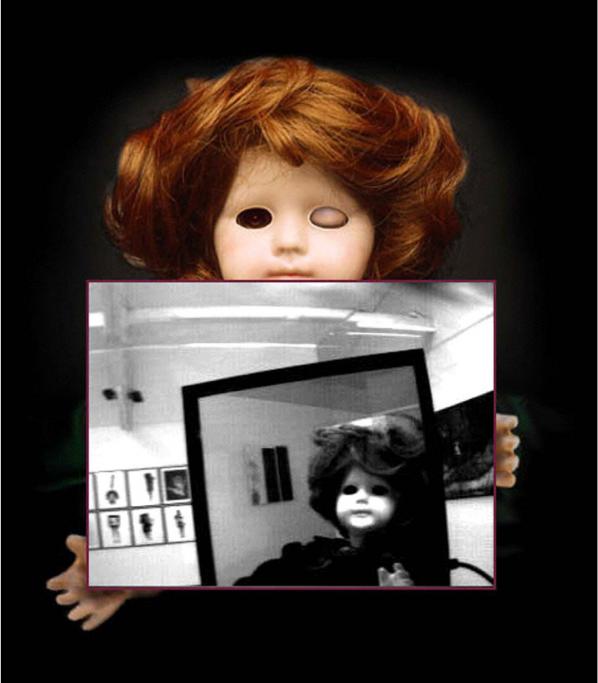
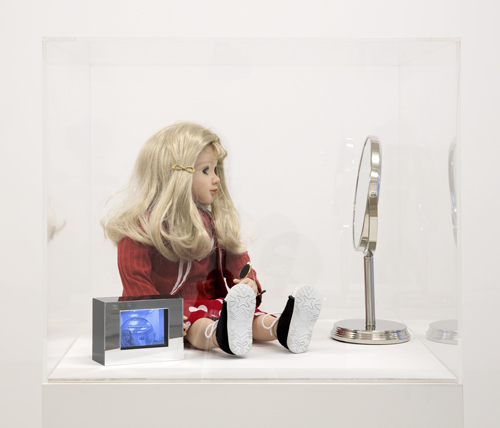
Hershman Leeson’s most prominent performance work was as another woman, Roberta Breitmore. This elaborate alter ego existed between 1973 and 1978. The Breitmore character was well developed, possessing different behaviors and attitudes to Hershman Leeson’s own personal identity. Roberta Breitmore had her own handwriting, clothing, wig, makeup, driver’s license, apartment, psychologist, bank account, credit cards, acquaintances, life story, and adventures. Hershman Leeson took the audacious leap and sporadically became Roberta Breitmore for 5 years. Other women also lived as Roberta Breitmore and sometimes simultaneously. [5]
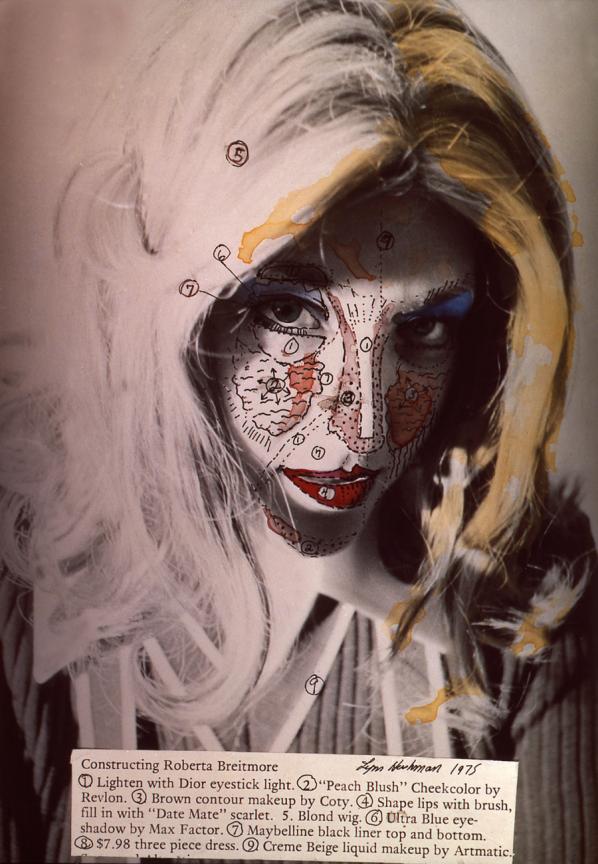
“Hershman Leeson hired three additional performers, all women, to play Roberta. They wore costumes identical to the ones Hershman Leeson herself wore, and they treated Roberta essentially as a professional (albeit part-time) gig. They undertook some of Roberta Breitmore’s correspondence and went on some of her dates (which were documented in photos and audio recordings). Eventually, Hershman Leeson stopped enacting Breitmore, reducing the instantiations of Roberta Breitmore from 4 to 3.” [6] (LaFarge 2007)
The spirit of Hershman Leeson’s radical art persona can be seen in younger, contemporary artists today. For instance, Heath Bunting’s Identity Kits, part of his larger The Status Project consist of various items, personal business cards, library cards, a national railcard, T-Mobile top-up card, national lottery card and much more. “They take a few months to compile each of them because they are actual items that everybody uses in their everyday lives, involving evidence of identity. There is also a charge for the package of 500.00 GBP, which is cheap for a new identity.” [7] (Garrett 2014) Then we have Karen Blissett, an Internet artist who suddenly decided to go multiple by opening up all of her email, Twitter, Facebook and Google accounts to many different women around the world. “A torrent of provocative, poetic, and often contradictory voices issued proclamations, made auto portraits, and shared psalm-like meditations on her existential transformation; distributed across online platforms and social spaces, in text, image and video.” [8] (Catlow 2014)
Towards the end of Civic Radar a collection of pages show us various images of the exhibition by the same name at the ZKM Museum of Contemporary Art, in Germany 2014. When viewing the images of her work in the large gallery spaces you realize the scale of it all, and how substantial her work is.
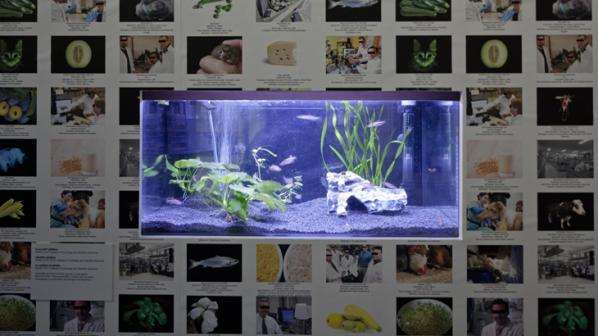
Moving on after the images of the works in ZKM, there is a selection of Hershman Leeson’s texts written, from 1984 and 2014. These writings, take us through different stages of her career, revealing ideas and intentions behind much of her work and also some of the work included in the publication. In the last paragraph of the last text in a short essay, titled The Terror of Immortality she writes about the contexts that have given rise to her most recent work. “As organic printing and DNA manipulation reshapes the identities of newly manipulated organisms, so too the culture of absorbed surveillance has dynamically shifted. In the next 100 years, the materials used to create DNA will become increasingly distributed and hybridized. The implications of this research include not only the creation of a sustainable planet of hybrid life forms that can survive a sixth extinction and incorporate into to its existence a morally responsible future.” (Leeson 2016)
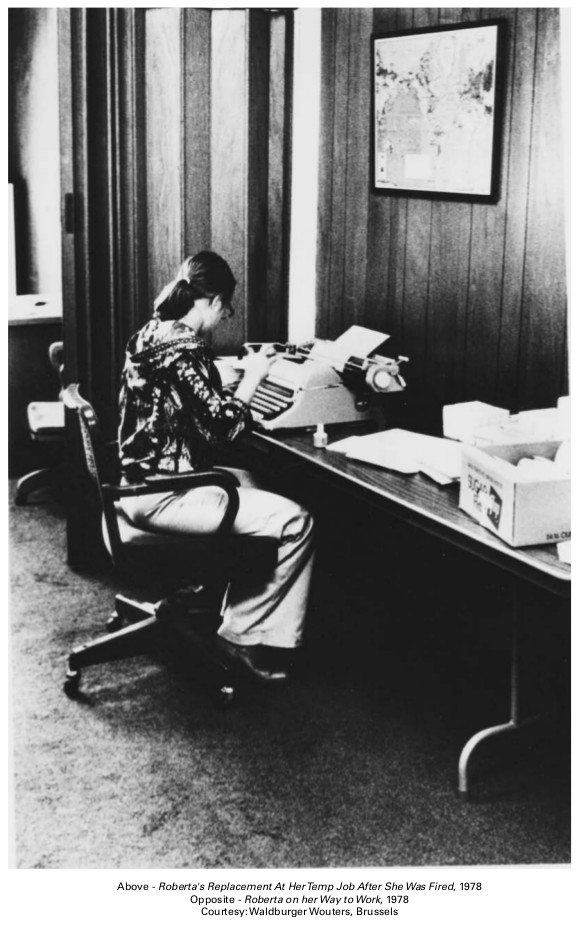
This book is a profound read, offering an insight to this generous and profound artists’ fantastical journey in an era marked by accelerating change. And what’s so amazing is that the content, the narratives, and the histories, are real. It is an Aladdin’s Cave of rich, exceptional artworks, flowing with brilliant ideas. Hershman Leeson has had her finger right on the pulse of what’s relevant in the world for a long time, and transmuted the knowledge she unearths in her examination of identity, feminism, science, technology and more into her own artistic language.
Her work is way ahead of most contemporary artists showing now. This book should be read everywhere. Not just because it features great art, but also because features a woman with a great mind. I am not a fan of the words genius or masterpiece; I find them tiresome terms reflecting a form of male domination over women and the non-privileged classes. Yet, after spending time with Civic Radar, I cannot help myself thinking that I have just witnessed something equivalent without the negative baggage attached.
*Text from ZKM – Teknolust. With Lynn Hershman Leeson at the cinema.
http://zkm.de/en/event/2015/03/teknolust-with-lynn-hershman-leeson-at-the-cinema
In 2015, ZKM in cooperation with the Deichtorhallen Hamburg / Sammlung Falckenberg exhibited the first comprehensive retrospective of Leeson’s work, including her most recent productions of art. Last year Modern Art Oxford hosted a major solo exhibition of her work Origins of a Species, Part 2 and she also has work in The Electronic Superhighway, at Whitechapel Gallery, in London.
Featured Image: Charlotte Moorman with Nam June Paik, 1980. Photo © Erik Andersch
Lynn Hershman Leeson is a renowned and accomplished artist and filmmaker in her own right. Over the last three decades she has pioneered uses of new technologies in critical investigations of issues, recognised as key to the workings of our society today. She tackles the big questions surrounding: identity in a time of consumerism; privacy in a era of surveillance; the interfacing of humans and machines; the relationship between real and virtual worlds; and growing parts of the human body from DNA samples. Last year Modern Art Oxford hosted a major solo exhibition of her work Origins of a Species, Part 2 and she has work in The Electronic Superhighway, at Whitechapel Gallery, in London at the moment. Her work has had a strong influence on many contemporary artists working with technology. Recently, ZKM in cooperation with the Deichtorhallen Hamburg / Sammlung Falckenberg exhibited the first comprehensive retrospective of Leeson’s oeuvre, and also the most recent productions of her work. In May this year a book of the same name Civic Radar, will be published, featuring a comprehensive monograph of this Feminist pioneer in the fields of film and performance art, edited by Peter Weibel.
Nam June Paik was born in 1932 Seoul, Korea and died 2006. Many in the artworld regard him as a visionary artist, thinker, and innovator. Considered the “father of video art,” his groundbreaking use of video technology blurred past distinctions between science, fine art, and popular culture to create a new visual language. Paik’s interest in exploring the human condition through the lens of technology and science has created a far-reaching legacy that may be seen in broad recognition of new media art and the growing numbers of subsequent generations of artists who now use various forms of technology in their work.
Through his progressive ideas and artworks Paik dared to imagine a future where the technological and playful innovations that we now take for granted might exist. This interview with Hershman Leeson is timely, documenting the meeting of two imaginative beings who have changed the history of work at the intersection of art and technology. The issues they discuss are as important now as they were then.
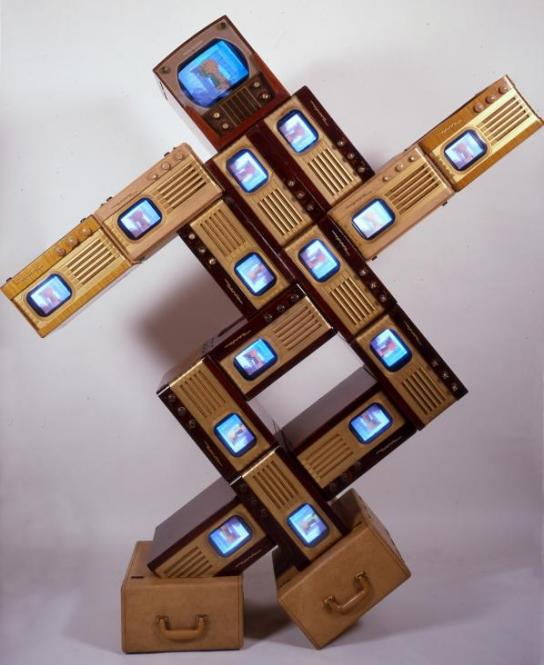
This interview of Nam June Paik by Lynn Hershman Leeson was first published by Artweek, April 1980 Electronic Art.
LHL: If you were elected president, how would you solve the world’s problems?
NJP: I just wrote an essay about how to make oil obsolete. Number one, information has to be recognized officially as an alternate energy source. Information changes our lifestyle. Dancers and yogis achieve ecstasy with 200 calories. However, racing drivers, if they want to achieve ecstasy, have to burn 200,000 calories. I found this new economical law… any consuming activities – certain activities which have a higher spiritual quality – use less energy. For instance, when rich man can buy a Jasper Johns for $100,000, that takes very little energy. However, if rich man buys Cessna airplane and flies around, it takes a lot of energy. But contributions to national economy would be the same… $100,000 spent. Same thing when you buy a videotape recorder for $500. Or if rent a car for $500 – ten days – national economy benefits from the same. But videotape recorder consumes much less energy. So when we shift our economic priorities of consuming to more spiritual sphere then we can solve all economic problems with much less energy. I found it is much easier to go to Paradise than to make this a paradise. It’s much cheaper to die than to make this world a paradise.
LHL: Do you think we’re getting closer to that now – global spirituality or global promiscuity?
NJP: Same thing. Sex requires only 800 calories. Same ecstasy, but racing cars take many more calories. Everything counts on calories. We need worldwide dieting. Lose weight.
LHL: Do you think pleasure or ecstasy is being popularly redefined because of technology?
NJP: Also because of a lack of energy. Things are getting so expensive that we have to use less. If you telephoned me instead of flying to New York, we not only save $300 air fare, we also save American Airlines gasoline. If they have less business, they will fly less. So we should move ideas and not weight. Less gravity we use the better. Transportation and communication are a trade-off. The more communication and less transportation we use, the better.
LHL: So your ideal is that we shouldn’t move too much…
NJP: Well I coined a term called “Stationary Nomad.” We are nomads but we don’t move.
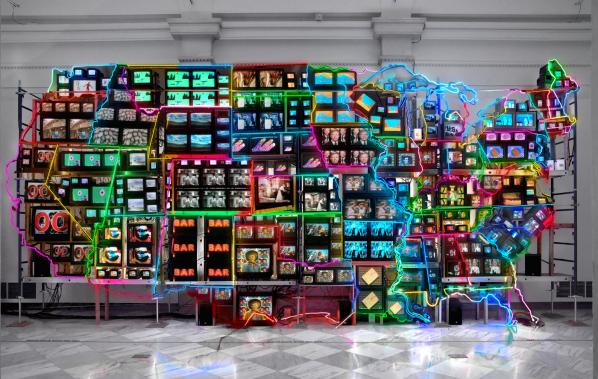
LHL: Do you think that we, as a species, are becoming biologically changed, that we’re almost becoming married to electronic systems?
NJP: Most important biological change is that when you move to moon you have to change sex patterns. You can make sex because you have certain weight. On the moon our weight is only one sixth so our whole muscular coordination has to be different.
LHL: What about all the perceptual changes?
NJP: When we have videodisc, all the New York Times microfilms will become like ten videodiscs. Then we’ll start browsing all hundred years of New York Times. Then you’ll look at early “help wanted” columns. Very interesting how the “help wanted” pattern changes over one hundred years. A new set of computer games would be born. Have you ever looked at New York Times microfilms? It’s very interesting. Celebration… that, I think, is the contribution of John Cage to world artists, because John Cage is first conceptual artist. Conceptual art is still very interesting movement because it requires least energy. No canvas. No movement. Just head!First time I’m coming from Asia to Europe, I’m flying from Calcutta to Cairo on a night plane. Everybody is sleeping. Only one light is on. A young American girl is reading paperback science fiction and I was so impressed. This girl was made for technology, you see. Celebrating.
LHL: How long will it be before ordinary people supersede movie stars, and intercommunicative TV and computers supplant fictional film?
NJP: I got an idea which I hope some capitalist will do. Interaction. Gene Youngblood had a conference at USC about the future of television, and he thought that interactive TV must be the alternative television. He knew but couldn’t quite formulate a complete idea about it. So it became chaos. Well, I thought chaos would be a great interactive TV. So the problem is how to create electronic chaos so we can enjoy each other. When you watch television or a very good film – which they make – really not very good… another one, you make it yourself, then there is also a limit of making it good because we don’t really know yet how to make our television. At the intermediate stage you will have ten different discs, and the first disc has only kissing scenes, the next only killing scenes, the third only music, the fourth only driving around scenes, the sixth just talking scenes, etc. Each disc is very complete. Kissing disc has all the kissing from movie history, every kissing of Marilyn Monroe, every kissing of Greta Garbo, and the second every killing scene from John Wayne. So we could just mix it according to our rhythms. Television proceeds in three-minute cycles. Every three minutes you want one nice thing, one bad thing, one mediocre thing… and music. So you have console and you just push buttons. So you interact with all of film history. I think that will be the intermediate stage before everyone has interactive television. It’s nice to meet and touch people, but it’s more exciting to talk very far. I just talked on telephone with Shigeko. It’s very exciting. She says: “Oh you’re never there!” She’s in a bad mood yesterday. She called… then I called back and she didn’t answer. This morning she didn’t answer again. I got an answering service. Distance makes things very exciting!
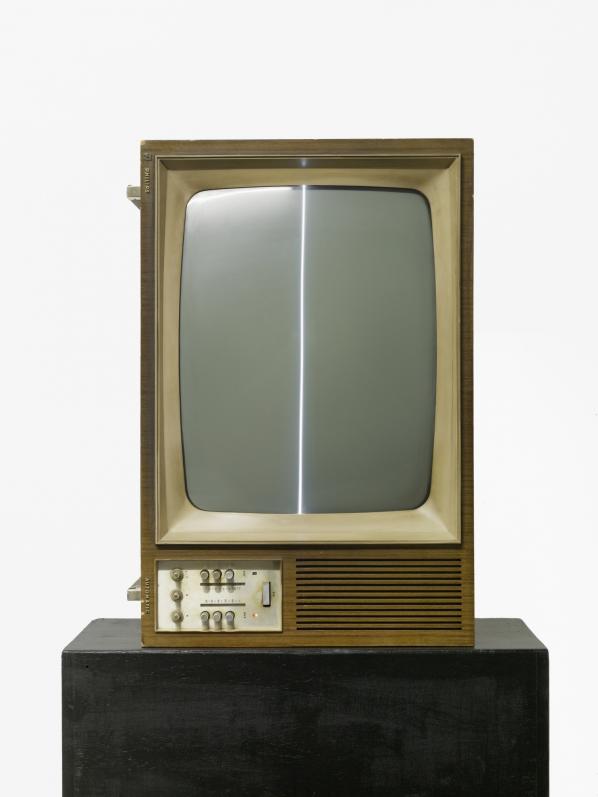
LHL: What are you working on now? You were just in Israel.
NJP: Yes. For Allen Ginsberg and Allan Kaprow. For some reason I got to know people very early in their development. I’m just lucky. I got to know Kaprow very early. These two famous men kept my friendship. They let me be their friend. So I want to make a variety show with two Allens because they are so different. Kaprow is a very cerebral man. Ginsberg is a very emotional man. Ginsberg is very semantically avant-garde and Kaprow is very formalistically avant-garde. We were going to do a show with them on a raft on the Mississippi River… let them talk to each other. This was to be me Bicentennial product. Then everything got delayed. Delay and delay and delay in our lives. That has to be solved. The plot got thicker and thicker. Two years ago I had some travel money available so I thought maybe I’d bring Ginsberg and Kaprow to Israel. Then my travel fund dried up so I had to pay for all these tickets to go to Israel. It wiped out my whole savings.
LHL: Can’t business and pleasure be the same?
NJP: Yes. But playing is more interesting. Yet playing is harder. The futurist thing is how to play without being bored. That is the most important thing… how to forget the Protestant ethic… Confucianist has same thing… how to be able to play. Americans know how to play a little bit better than Europeans or Asians. Africans know a little more about playing than Americans. America and Africa got together and made American entertainment. America invaded the world through their jazz and not by their airplanes. Because of black people’s music, America is such a big image around the world. American defenses are made form two things… hardware and software. Russians can match American hardware because they can produce. But Russians cannot match American software because Russians don’t have black people. Russian culture is all nineteenth century… Bolshio Ballet. Now you can’t make video out of Bolshoi Ballet. You can only do it live. So Bolshoi, it’s only where rich people can go who are anti-Communist anyway. So they are wasting all Bolshoi Ballet because it never reaches poor people who are target for their propaganda. That’s because their culture is made before information technology. Scott Joplin, a black man, made his art especially for mass production – the “player piano.” The black people’s music from the beginning was developed for mass production. The rich Americans packaged it to sell. Of course the black people are exploited.
LHL: Do you have trouble playing?
NJP: I think I have this guilt complex… must work all the time. My doctor told me I should get enlightened. But I always think I must get enlightened after next job. Then, with the next job, I get more and more in debt. Then I need another two jobs to pay the bills. So my enlightenment gets postponed.
LHL: Do you think being enlightened and being in debt are related?
NJP: You can act enlightened even if you are hopelessly in debt. There’s a guy I know… he’s a Catholic. He drinks. He’s very fat… but he drinks one quart of Coca Cola everyday. He thinks he’ll just work until he dies. But I don’t want that kind of enlightenment. I don’t work too hard anyway. I just work minimum.
Artweek, April 1980 Electronic Art NAM JUNE PAIK – VIDEO PHILOSOPHER
c.lynnhershman1980 all rights reserved
SEE IMAGES FROM THE PRIVATE VIEW
Furtherfield Gallery is proud to present Dimensioning – Live Architecture an exhibition of new digital artworks by Italian artist Chiara Passa, part of Furtherfield’s Open Spot programme.
Passa’s concept of «super places» and her search for new dimensions, or “campo piu’ in là” (a “further field”) underpin her work using architecture as an interface to understand the possibilities of the digital dimension. She uses augmented and virtual reality (AR & VR) to create interactive installations in which the technologies punch through and pull out a new sense of place in combinations of interior, architectural and natural environments.
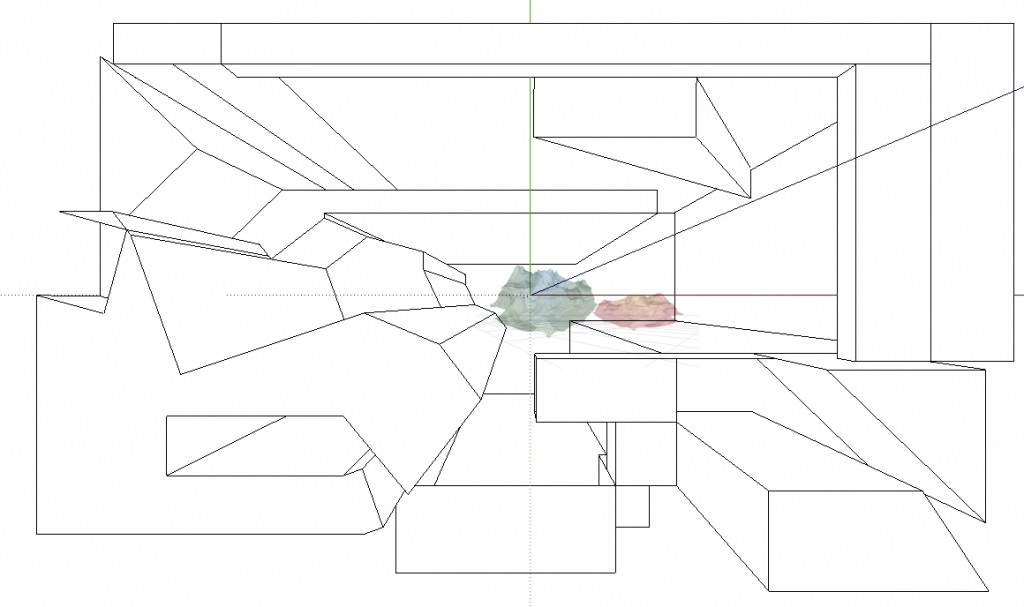
In this exhibition visitors can explore her new digitally mediated perception of space and time in an animated multi-dimensional ‘trompe l’oeil’ of the gallery rooms as 3D wireframe view. Visitors stand in the middle of the “window-camera” view of the software, which has also been used to build the animations on display. They use augmented reality to “travel through” the walls, into the diagrams.

“Worlds open the doors to other worlds and synthetic shapes become design, structure, architecture and reality.”
Passa’s work offers a refreshingly passionate approach to experimental and philosophical play with technologies. We think that this is especially valuable in an age where our expressive range and behaviour is increasingly pre-determined by the digital tools, techniques and devices that we use daily, and the interests, experiences and values of those who create them.
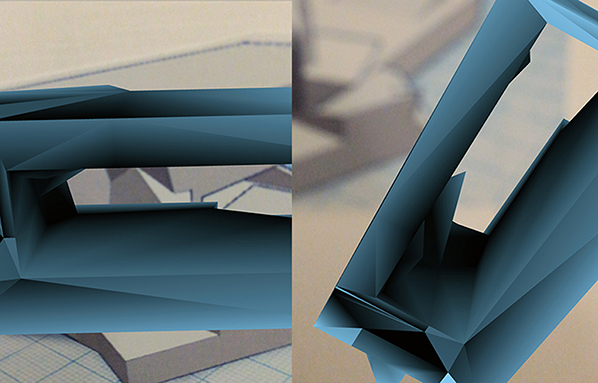
Also for this exhibition visitors will experience her VR 3D animation using a Google Cardboard viewer.
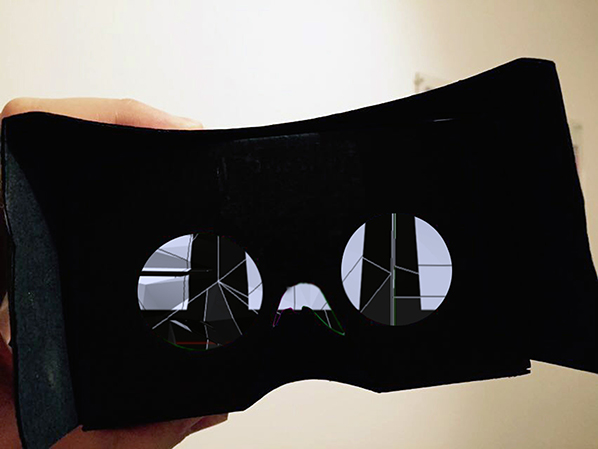
Chiara Passa talks about Dimensioning – Live Architectures at Furtherfield Gallery in the video below
Chiara Passa, media artist (Rome 1973). Graduated at Fine Arts Academy of Rome; master in new audio-visual mediums at the Faculty of Modern Literature.
Her artwork combines many media and platforms analysing changes in ‘liquid space’ through a variety of techniques, technologies and devices – often constructed using augmented reality and the virtual reality technologies. She works with animation and interactive video-installation; digital art in public space as site-specific artwork and video-mapping; video-sculptures and objects; art-applications and widgets for mobile platforms.
She explores the potentials offered by the intrinsic languages of these emerging platforms to experimenting in a rigorous and personal way with the full expressive range and “unknown creative possibilities that the new media are continuously offering to me”. She received the E-Content Award (2012). Her work is regularly exhibited internationally in galleries and at festivals, conferences and institutions including ISEA, Vortex Dome (USA), Media Art Histories Conference (DE), Electrofringe (AU), FILE | Electronic Language International Festival(BR), CCCB – Centro de Cultura Contemporània de Barcelona (ES).
Furtherfield is a leading organisation for art, technology and social change. Furtherfield Gallery and Commons spaces in the middle of London’s Finsbury Park explore complex themes relating to digital culture, inspiring diverse people to get involved with arts and technology on their own terms. Debate is facilitated amongst an active international community of artists and thinkers via online platforms, combined with accessible art shows and labs to enable co-creation and widen participation. Furtherfield is a not-for profit, artist led organisation, an Arts Council England National Portfolio organisation, supported by Haringey Council.
The Furtherfield ‘Open Spots’ programme of self-initiated and self-funded exhibitions and events support the presentation of new work and artistic invention, to discover new perspectives on the horizon of a wider networked society.
Curators and artists that meet Furtherfield’s selection criteria can showcase work at Furtherfield Gallery in the heart of London’s Finsbury Park. Open Spot projects can reach a new, diverse audience of gallery visitors, park users and Furtherfield’s online participants.
Featured Image: Black Shoals: Dark Matter’, Joshua Portway, Lise Autogena, Big Bang Data.
Big Bang Data is a major travelling exhibition currently set within London’s Somerset House. That a large institution is presenting a journey via data capture through ‘selfies, surveillance and infographics’ is in itself an interesting patchwork of intent and realisation. The aim of the exhibition is to ‘demystify data’. This is a grand, summative and in actuality slightly awkward claim which, in my view, encapsulates the character of an interesting, textured exhibition in an unintentionally astute way.
As Big Bang Data is dedicated to revealing data comprehensively through its various architectures and iterations, it makes sense for the underrepresented materiality of information to have prominence early on. This materiality, perhaps inevitably, was compromised in the gallery space. Entering the first room brings you face to face with Timo Arnall’s Internet Machine, which takes the form of multiscreen video documentation of not just the machines, but also the architecture, which supports mobile telephony.

I would have loved to have experienced the spaces shown more intimately and walked around one of these structures; the installation was illuminating but I was still most certainly watching at a remove. This initial interplay of removal and involvement is central to the way we experience data. How can people begin to understand something which exists as multiple codes and flows, on a scale and at a speed which is not concerned with making itself understood by humans? What form could an understanding of data possibly take? When learning about something this far from our grasp, it seems that ‘understanding’ must be replaced by ‘awareness’. Rather than seeking one answer via one route the visitor to Big Bang Data has to build an impression, obviously subjective and subject to change.
In its quest to expose and explain data’s social and cultural uses, it presents a fairly overwhelming amount of information. It is interesting to walk through the space thinking about how this information has been channeled by each specific project. Some representations, such as Owen Mundy’s ‘I Know Where Your Cat Lives’, link distant people and spaces via connected points, while others such as Phillip Adrian’s ‘One Second’ capture in great detail one specific point in time and space.
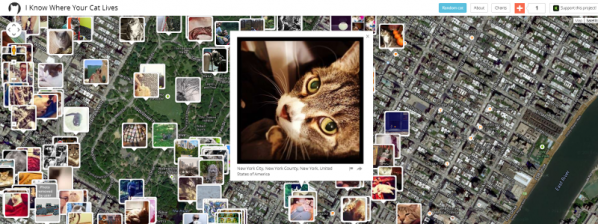
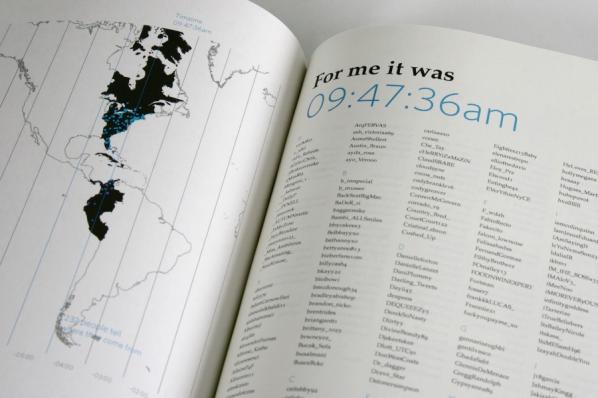
Julian Oliver’s ‘Transparency Grenade’ brings together graphical, console and physical representations of data to offer a transportable means of leaking information as a response to impenetrable governing systems. Each of the works on display demonstrates a negotiation between temporality, materiality and spatiality, and often one is sidelined in favour of the other. Again, considering the exhibition in this way is also to consider the world of data in all its contrariness.
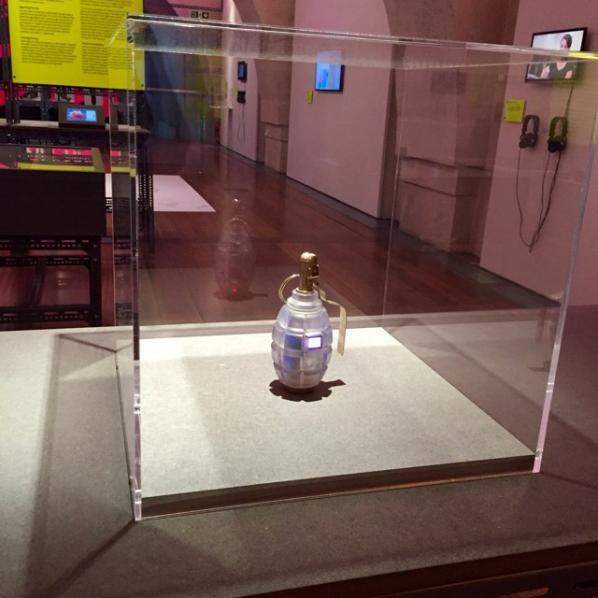
Data manifests itself at the same time locally and globally. As well as addressing specificity, the projects shown in Big Bang Data dwell repeatedly on scale. Works such as Tejka’s ‘London Data Streams’ and Nicholas Felton’s ‘Annual Reports’ pit scales against each other to cast light on the filters through which data is processed.

Ingo Günther’s ‘World Processor’ and Forensic Architecture’s ‘Liquid Traces: The Left-To-Die Boat Case’ are examples of resonant, atypical data visualisations which mutate familiar imagery and present alternative summaries of events. The section entitled ‘Data For The Common Good’ shows some of the ways data is being actively used in society to empower citizens with works such as Safecast’s ‘bGeigie Nano’ and IF’s ‘Data Licenses’, while a series of video interviews with journalists and other professionals working with data illuminate the processes through which information becomes communication.

The previously mentioned tension between object and their presentation recurs at various points throughout the exhibition, a great example being the array of undersea telephone cables, presented in cases of wood and glass which could have been magpied from a display of historical artifacts (each cable segment has a number next to it which corresponds to a factual description). It felt strange not being able to touch them. A work which I felt fully occupied, and knowingly played with, its surroundings was Ellie Harrison’s vending machine, which sits unassumingly in the gift shop; its secret is that when search terms connected to the recession make the headlines, free snacks are dispensed. Its presence in a exhibition on data in a gallery space felt appropriate.

Big Bang Data, which runs alongside a programme of events and has previously been exhibited at CCCB in Barcelona, comes at a moment where large organisations are more frequently bringing concepts such as surveillance, open source and free software into public spaces. There is a great need to bring the concepts and processes surrounding data more wholly into the public eye, and this exhibition strikes me as, overall, a big step in a good direction. It makes real and challenging efforts to bring together world-spanning processes, complex concepts and extremely diverse content into an exhibition space. The task of the exhibition’s curatorial and production teams must have been difficult.
Of course the challenges they faced have been dealt with before many times in many ways, and of course the practical decision-making involved in producing an exhibition invariably creates tension points. The reason I’ve dwelt on the problems of the organisers here is that the tensions evidenced within the space at Somerset House say much not just about the response of the publicly funded arts to data but also about the nature of data itself. The exhibition turns into at times a museum, a bedroom, a classroom, an information point, a scruffy new gallery space and a state of the art new media space. In bringing together the story of data the exhibition also brings together the story of representation in space more generally.
In writing about Big Bang Data I have had to choose to highlight certain works and not others. Your interpretation will be entirely different from mine, which is as it should be where data and cultural inclusion is concerned. What’s important is that the exhibition’s prominence and texture opens up conversation and critique. The exhibition is detailed, procedural and expansive. It is also alive with contrariness, generality and awkwardness. Perhaps one of the great things about the show is that these qualities are left to jostle for space. For me, reading this exhibition as a performative event was useful; others may leave Somerset House with an entirely different view having taken an entirely different route. This is inevitable where data is concerned – learning is incremental and procedural, but not traditionally linear.
Features Image: “Dead Copyright” installation view, 2015
Antonio Roberts is a digital artist based in Birmingham. In 2011 he has completed his Masters level studies in Digital Arts in Performance at Birmingham City University. His artwork focuses on the errors and glitches generated by digital technology. An underlying theme of his work is open source software and collaborative practices. His video work has been screened in Chicago, Illinois, at GLI.TC/H, Notacon in Cleaveland, Ohio, and Newcastle Borough Museum and Art Gallery, amongst other places.
In October 2015 he opened his first solo exhibition, “Permission Taken“, at Birmingham Open Media and in these weeks is taking part to “Jerwood Encounters: Common Property” (15th January – 21st February 2016, Jerwood Visual Arts), a group show curated by Hannah Pierce focused on the limits of Copyright when it’s about visual arts, with two projects: the installation “Transformative Use” and a collection of four works, “I Disappear”, “Blurred Lines”, “My Sweet Lord” and “Ice Ice Baby”.
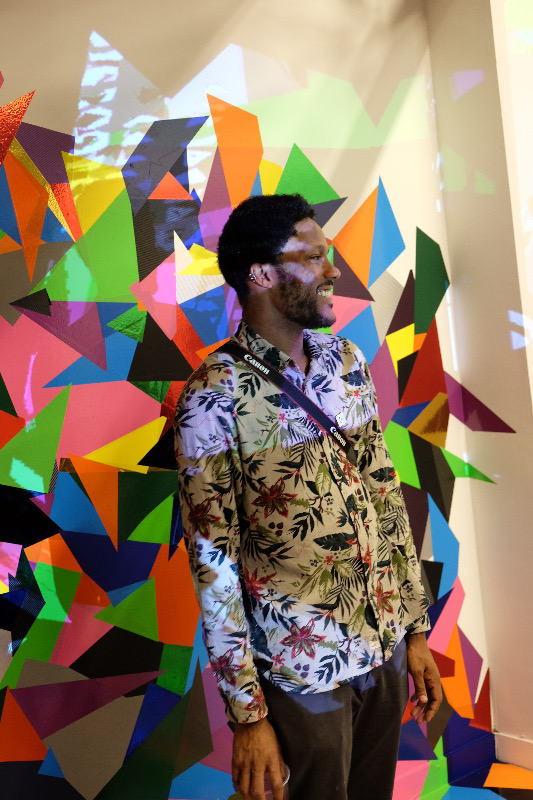
Filippo Lorenzin: You’ve been always interested in how corporate and industrial logics affect daily life and art. How did you get interested in these questions?
Antonio Roberts: It’s a by-product of my interest in open source software and free culture, something which I’ve been interested in from as early as 2002 but only started taking seriously around 2007. One of the main motivators of this was my reaction to Adobe Photoshop and its influence on creative practices. My experience of studying Multimedia Graphics – and I’m sure the same can be said for Graphic Design, Illustration and any creative practice – was that it seemed more like an exercise in how to use Adobe products, not how to be creative with tools. It felt like Adobe software had gone from being one of the many tools for creating art to the art in itself. This corporate sponsorship of course has many implications for how we create and disseminate art. It poses restrictions and dictates who and who cannot create art.

FL: Copyright issues are one of the main focuses of your research and this fascinates me because of your age. You (as me, by the way) have experienced probably the most troublesome period for Copyright systems, with the wide spread of p2p networking and remixing approaches to cultural industry products. What do you think?
AR: I’m inclined to agree. I’ve had access to the internet since I was around 14 years old and in that time I’ve seen the internet and culture as a whole change drastically. For me the rise and fall of Napster, spearheaded by Metallica’s very public outcry against it, signalled the beginning of the end of the free internet that I had only known for not even a year.
Around that time Digital Rights Management (DRM) became a hot topic. The entertainment industry saw it (and suing everyone) as the only way to protect their property and so kept bundling DRM with their products, which often at times resulted in a broken experience for the user. One example that springs to mind was the attempt to make CDs unreadable by computers (and so prevent ripping), by adding in corrupted data at the beginning of CD. Whilst it did temporarily stop people to using it on computers – you could simply use a marker pen to circumvent it – it also prevented some CD players from using the CD and in general was obtrusive. This cat and mouse game is still going on to the point where simply attempting to bypass DRM to watch/listen to something that you have purchased, can be an illegal act.
As mentioned before, It wasn’t until around 2007 that I began to reconsider how Copyright affected my work. By this time I saw that there was more weight being pushed behind open source software, free culture and things like the Creative Commons licences, and so I started to get involved myself. The first stage was ditching all proprietary software (which I did in 2009) and then licensing my work under Creative Commons licences.
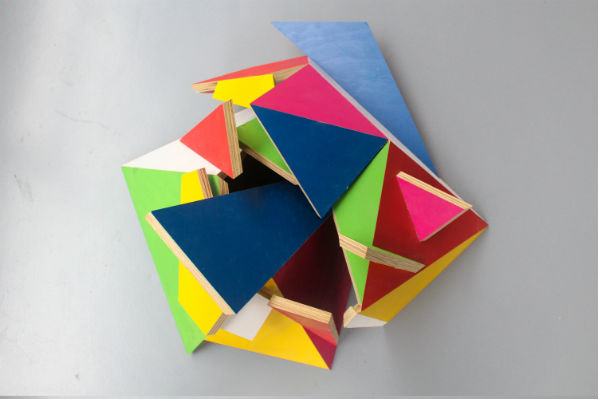
FL: “Jerwood Encounters: Common Property”, curated by Hannah Pierce, is a group show that seeks to investigate the new borders of Copyright, especially in regard of art. How would you define the state of these questions in UK?
AR: I think Copyright as a whole is in a terrible state. As Cory Doctorow suggests in the exhibition programme (which is in itself an excerpt from his book “Information Doesn’t want to be Free”) Copyright as we know it isn’t written for artists or any individual. Its verbose terms and complexities cannot be understood and are probably not even read by most of us. They are written for other lawyers. If, in order to go about our creative business, we are expected to read and understand the terms and conditions and law – it is estimated that it would take 76 days to read all of the Ts and Cs of websites we use – what time do we have to be creative?
FL: What’s your point of view, from your position as an artist?
AR: I think Copyright is a mess because it tries to dictate how we should be creative. Creativity is free-flowing. Copyright, and its cousins patents and trademarks, justify their existence by saying that these restrictions encourage innovative new ideas but what they do is just stop us.

FL: “Dead Copyright” reminds me some reflections by Walter Benjamin on the shock of the city, about how advertising assaults our senses 24/7 with louder and louder messages – until it reaches a state of entropy. At this stage the message isn’t actually more important than the media itself, quoting Marshall McLuhan, and all the brands create a single, colourful ambient. How much this reality has been voluntarily planned by corporations, in your own opinion?
AR: I think it’s all completely planned. The more pervasive the advertising becomes the more we accept it as part of our every day life and culture. On the other side this does mean that they have to try ever more invasive methods to get our attention. Think about the uproar over the Coca Cola van at Christmas, or Cadbury’s at Easter. They have usurped the original holidays and are more important.
FL: The reduction of brands to colorful simple shapes created something that visually reminds some of op art works, a movement that experimented with visual perceptions and that has been an important inspiration for fashion and design. I was just wondering what you think of this similarity: is there any real connection between your work and those works?
AR: Yes, certainly and this comes through with my use of glitch art techniques. In glitch art we’re often trying to find signal in the noise, and I find that many successful glitch art works (however you define successful) have some resemblance to the original yet are transformed and destroyed in way.
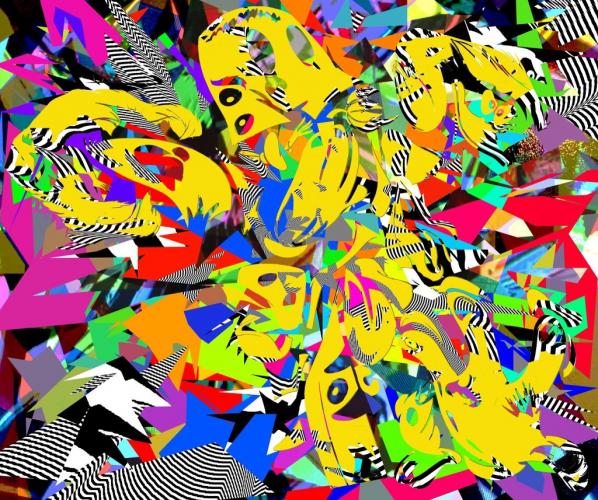
FL: With “Transformative Use” you use shapes that recall not just brands, but a wider imagery. It’s as if you’re focusing on other targets: can I ask you how did you get interested in this new research?
AR: I recalled all that I had learnt during my residency at University of Birmingham and during the CopyrightX course. From this I paid particular focus to the Sonny Bono act from 1998. This effectively extended the Copyright terms so that it won’t be until 2023 until works from 1923 begin to enter the Public Domain. This act is sometimes called the Mickey Mouse Protection Act, which led me to use them as a focus point for the work. Mickey Mouse should, by now, be in the Public Domain but they’ve fought to stop this in order to “protect” their brand.
People in favour of long or perpetual Copyright terms usually point to it allowing artists to reap the benefits of creating work. In truth, however, only a very small percentage of works made will be profitable in the future. To put it another way, how many books published today will see reprints? I don’t have any official statistics, but I know it would be a small percentage. So, extended Copyright terms only really benefit the small percentage of artists or publishers, whilst harming everyone else.
FL: What does it mean to deal with corporate imagery within such a chaotic and in a somewhat charming ambience? I mean, what remains a logo or a character when it gets lost within this borderless blob? Are the corporations losing their borders too, maybe?
AR: Yes.
FL: As discussed before, “Transformative Use” has been inspired by two previous projects: do you think that in future you’ll make a work that will update for the fourth time these reflections of yours?
AR: Most certainly yes. “Permission Taken” will be having an iteration at the University of Birmingham in March 2016 and will feature new and existing work. Aside from this I will continue to work with found materials but with a more explicit intention to provoke discussion around Copyright.
Featured image: @mothgenerator by Everest Pipkin and Loren Schmidt
Taina Bucher interviews artist and bot maker Everest Pipkin about their most popular Twitter bots, how they work and what they mean. Indeed, what are bots, who else is engaged in artistic bot-making, and how will social media bots evolve?
Meet Tiny Star Fields. Several times a day, the Twitter account publishes a field of stars in different shapes to a dedicated 51.000 followers. The latest tweet, published 53 minutes ago, has already been retweeted 151 times and gathered 114 favourites. Tiny Star Fields is a Twitter bot. During the last few years, bots, or automated pieces of software, have become an integral part of the Twitter platform. As some recent reports suggest, bots now generate as much as twenty-four per cent of posts on Twitter, yet we still know very little about who these bots are, what they do, or how we should attend to these bots. Admittedly, star-tweeting bots like Tiny do not belong to the kinds of bots that are most talked about. When people usually think of bots, they mostly have a specific type of bot in mind, which animates feelings of annoyance and disturbance. The spam bot, however, is but one kind of bot.
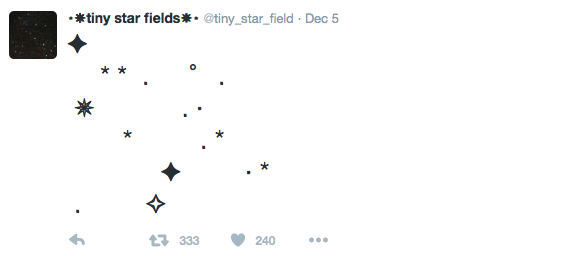
As Tiny and many others like to attest, bots are just like people. They are different. They tweet for different reasons, have specific audiences and engage with the world in various ways. Guided by their human programmers or taught to learn from existing data in playful ways, bots are legitimate users of platforms. But bots would be nothing without their creators, their makers who have conceptualized and brought these digital personas ‘to life’. So let’s not just meet Tiny Star Fields but also Everest Pipkin, the 24-year-old artist and creator of Tiny Star Fields.
Everest why don’t you tell us briefly about yourself and your background?
I grew up in the woods of Austin, Texas, where I also attended university for my undergraduate degree in studio art. Most of my work there was focused on drawing and installation, but I was also curating internet ephemera and beginning some rudimentary code projects at the time (albeit in isolation from others doing similar work). I also have a history in curation and have run creative spaces for many years. I’m currently pursuing my MFA at Carnegie Mellon in Pittsburgh.
What got you started with making Twitter bots?
I started making bots in the summer of 2014. I moved to a tiny town in rural Minnesota (population 900) for a longer-term artist residency and was quite isolated. I didn’t have a car, there was no bus or train, and I didn’t know anyone there. I was used to being alone on residency, but often I had friends near enough to visit or a local coffee shop to haunt. With no other options, I was at home and online almost constantly. The internet has always been important to my practice (and my social life), but I attached myself to it as a lifeline in that period.
I was already following Twitter bots (@everycolorbot, @youarecarrying, @twoheadlines, @minecraftsigns, @oliviataters, @prince_stolas, and I’m sure many others), but being online constantly shifted how I thought of them, rather than just seeing their occasional statements as charming non-sequiturs in a human space, I started to notice their underlying personalities, the structure of code that differentiated one from another; when they posted, the kind of source materials used, how they interacted with others. With nobody to keep up with locally, I also began sleeping in erratic structures- some nights for 5 hours, others for 14. As a side effect, I would catch off times on Twitter, where everyone but the bots were asleep. These timelines of automation had a striking effect. I was particularly fond of the bot chorus around the turn of the hour- bot ‘o clock, as some call it.
I had been following and aware of @negatendo’s #BOTALLY posts (a sort of # organizing structure for bot-related news and resources) for a while, but I also started following @thricedotted, @inky, @beaugunderson, @tullyhansen, @aparrish, @boodooperson and @tinysubversions (and many others!) in this period. There were new bots almost every day, all unique, and I was really taken by how people interacted with them and how they operated in that social space.
How did you go about making your first bot?
I got node.js set up on my laptop (no small task for me then) and figured out some fundamentals of text manipulation in javascript. After several false starts, I made my first bot, @feelings.js, in the afternoon. I made @tiny_star_field five days later, in the middle of the night, hiding in my basement during a tornado. The power was out, and I’m almost certain I got the structure done in one laptop charge. I deployed it when the power and internet came back the next day.
You waited for the sky to clear and become sprinkled with stars again. In the meantime, you made your own digital sky, that’s cool. Did you do a lot of programming before starting with making bots?
I suppose that depends on what you mean by programming. I had worked in and around browser-based experiences for years but had never taken a structural approach to learning code. Every new idea and project had a particular set of problems that I attacked with utter naivete, writing vast messes that were shocking when they worked. Looking at my source code for those projects now is very much like looking at an outsider-art approach to computer science. Which is, I suppose, what they are.
I still sometimes struggle with basic concepts just because I haven’t run into them before- I learn best when directed at a goal, and sometimes those goals skirt fundamental structures. My knowledge is a funny hodge-podge assemblage of extremely difficult concepts I needed for some project or another, while I may forget the syntax for a basic sentiment. I keep telling myself I’ll read a book or take a course on putting code together properly, but so far I keep learning what I need. I am sure I will feel the same about my current projects in a year or two as I do about my older ones. My first bots are very embarrassing inside and it has only been a year and change.

You’ve said that @tiny_star_field is your most popular bot, but your personal favourite is @feelings_js. Would you care to elaborate?
Neither of those bots came from a particularly well-considered place technically; they were the first I made, and I was learning. I was tickled by the idea of a bot that did nothing but emote; it seemed like a charming inversion of the coldness that often creeps into automata. Tiny was a simple reflection of my Unicode character habit; I have a hobby of making little vignettes or dioramas combining characters and atypical symbols, and I have been enjoying automating them. (I am also now a Unicode Consortium member and am working structurally with these characters.)
That comment about favourites was from a long while back, and my favourite bot is probably now Moth Generator (@mothgenerator), which was a collaboration with @lorenschmidt. It’s different from many of my bots; it’s just a wrapper on an image generator, but it is the first bot I’ve made that I felt used @-replies in a truly useful manner. It takes the text of the tweet sent to it to seed the generator with a unique number; therefore, the ‘moth’ moth will always look like every other ‘moth’ moth, while a ‘bot’ moth would shift in many ways. A ‘moth bot’ moth would share characteristics of both.
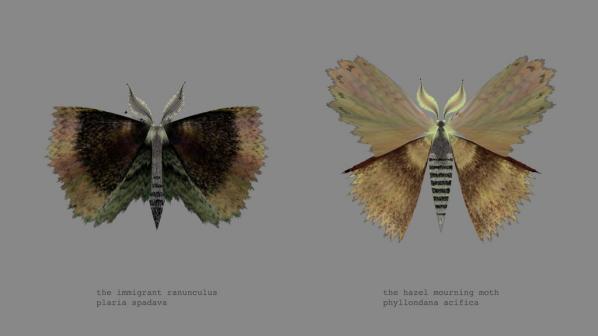
How do these bots work?
Feelings.js (and a few others like it) is basically a fill-in-the-blank Wordnik wrapper. It has a variety of possible sentence structures on a switch statement and then pulls parts of speech from the dictionary API. I have a few structural rules that slightly favour alliteration and a few other cute tendencies (blocking offensive words), but it is basically mad-libs.
Tiny is even simpler; it has a large array of star and space options and pulls randomly from the available options. The biggest challenge was finding an ideal balance between character frequencies. I tweak it occasionally and don’t feel it is ideal yet. I am tempted to make it sparser. I am also in the process of making a Tiny Star Fields clone that uses actual astronomical data at varying scales, so the tweets will be a literal patch of sky.
Some of my other bots are a little bit more complicated- Moth Generator is a wildly long drawing routine in Javascript, Sea Change (@100yearsrising), tweets unicode characters mapped to sea-level rise predictions over the next century. Others use more obscure text manipulation techniques and large corpuses. But I think it is important to note for folks just starting that complication does not necessarily make them stronger artistically or more popular socially- the best things are almost always just good ideas.

What has been the response to your bots?
There is certainly an audience of bot appreciators; sometimes, I will see people who follow 30 or 40 bots but none of their makers. Bots also have their own secret lives outside of intention. Tiny auto-followed people back for a while (something like the first 6k) made for a truly wonderful sample! Very few are in the bot community; I think the vast majority are One Direction fans. It is a fascinating slice of social life I would never think to seek out myself.
What is the bot community that you are referring to?
Gosh, what is the bot community, good question. I suppose it seems to be a loosely associated group of folks interested in social bots. People seem to come from all walks- programmers, game developers, linguists, writers, artists, analysts, and poets. Making the skeleton of a Twitter bot is a fairly simple exercise and doesn’t inherently have the high knowledge overhead of some other creative programming tasks. They are also incredibly flexible in content and process, and I think that mutability allows a certain wealth of intent from bot to bot. These two avenues of openness mean they are used for all sorts of things! As entities, they are as unique as the people who make them.

In general, I’ve found folks who are organized around making bots to be nothing but supportive, kind and interested in helping others get started with producing their own work in this realm. Within that community, structure are also all the folks that might not make bots (yet) but know what they are, and are interested in their processes, or write about them, or consider them valid as artworks or creative entities.
What, indeed, are bots?
What are bots? Gosh, this is an even better question than the one about bot communities. So, there are many ways to think about bots, and in my opinion, they are stackable and do not refute one another. But here are my thoughts:
Firstly, they aren’t new automata has been around for a very, very long time. One can look at examples of clockwork machines or candle-powered toys from over 1000 years ago. Even beyond physical examples of automata, the idea of bots is pervasive culturally; stories about golems and enchanted armour or physical objects imbued with personality have been with us since stories began.
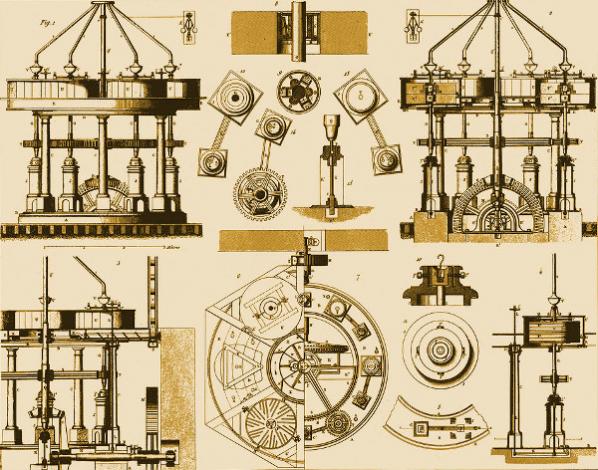
Digital bots (especially those living in social spaces) fit into this long history of objects granted almost humanness. They fill in for a part of human action, the slice of person granted to digital representations of ourselves. Just like the golem that guards a passage, their tasks are programmed, but we grant them entity because they do these tasks on their own (guard, tweet). Perhaps this is as much doubt (“Is it /really/ a bot, though? Maybe it’s just a person pretending?”) as it is a gift.
Secondly, I do think there is an aspect of doubling or mirroring that these bots employ. They are widening the reach of their creators; they are automated versions of a specific slice of their creators. Many, many bots fall into this category. Something Darius Kazemi once said first got me thinking this way. It was advice to a want-to-be bot maker who didn’t have an idea for a bot. Darius suggested ‘come up with a funny but formulaic joke and automate it’. This type of repetitive production is not just seen in joke bots but almost all bots that are not attempting to emulate humanness. The maker would have made the joke once; by making a bot, it is made many times (but also, perhaps made better than it would have been once).
To expand, the goal of work-by-generation is a fundamentally similar but shifted process from that of work-by-hand; rather than identifying and chasing the qualities of a singular desired artwork, one instead defines ranges of interesting permutations, their interpersonal interactions and how one ruleset speaks to another. Here, the cartographer draws the cliffs that contain a sea of one hundred thousand artworks. And then, one searches for the most beautiful piece of coral inside of their waters.
So, I suppose this is where bots are truly interesting to me because this kind of making (looking for the best moment in a sea of automated possibilities) is a methodology of construction that feels, in some ways, new.
I like the notion of bots leading secret lives. Are you ever not in control over your bots? Or what does this secrecy entail?
I take a pretty lax approach to keeping up with my bots. I rarely log into their accounts or closely monitor what they are up to. I censor certain offensive words, follow them on my Twitter account, and hope to catch them if they break. This means that their notifications never reach me; the things that are said to them (or their own replies) are often invisible to everyone but them.
In what ways do people or other bots interact with your bots?
Most (although not all) of my bots are non-interactive, meaning they do not @reply back when spoken to. That being said, they are absolutely interacted with. Tiny star fields, in particular, get a ton of messages; lots of people will have conversations in the mentions. I find them pretty charming and will occasionally peek at what people are saying to one another. Since I generally keep @replies off, I don’t get the bot-to-bot eternity loops you’ll sometimes see with the image bots, ebooks bots, or others that reply. But I always like it when spam bots or Reddit bots find mine by keyword search. The best example of designed bot interaction might be Eli Brody’s tiny astronaut (https://twitter.com/tiny_astro_naut), which inserts spaceship emoji into Tiny star fields’ tweets, or its conceptual sibling, tiny space poo (https://twitter.com/tiny_space_poo).
How many of your bot’s followers do you reckon are other bots, and is bot-to-bot interaction different to how humans interact with bots?
I haven’t done the numbers, but it seems like there is a slightly higher percentage of bot-to-bot followers than human-to-bot. I would guess this combines auto-following routines and being manually directed to follow entire lists of other bots. Perhaps also, they are more patient with repetitive or nonsensical tweets and stick around longer.
Most bots now have conversational abandonment built in, but this was not always the case- it was once pretty common to see two replying bots get into a conversation with one another that would last hours or days, to the tune of thousands of tweets, one every few seconds. I once got accidentally caught in mentioning one of these cycles and had to wait for one of the bot’s owners to wake up and reset their servers. It was amazing, and I also had to turn off all notifications on every device I own.
Now, I think most bots use more intelligent replying- just to one person, randomly across their followers, or only every 10 hours, or perhaps replying to keywords or requests. To me, this has made bot-to-bot interactions feel a lot more human.

Do people ever wonder about you, the human behind the bot?
Many people who follow Tiny Star Fields do not understand that it is a bot! Or that bots are even on Twitter. The predominant interaction that seems to occur runs along the lines of “DO YOU SLEEP” or “what is this” or “I love these thank you so much for making them all the time”. I find that disconnect pretty delightful- the assumption of a (very) dedicated human somewhere. I’m also fond of the interpersonal conversations in the comments, often having nothing to do with the original stars; it occasionally functions as a bit of a forum for strangers to connect.
Where do you see Twitter bots or social media bots generally evolving?
I have found myself moving off of Twitter and back into non-social spaces for much of my work. Part of this is probably personal; my interests shift project-to-project. Part of it is intrinsic limitations in the media, the 140-character limit, and the difficulty of keeping up with Twitter’s often evolving terms of service. I am interested in physical robots or the housing of digital spaces- where these bots live- and a lot of my studio practice is now exploring tangible machines. Some of the best bots I’m seeing out of others use neural nets or very clever source material. In my own work, I am looking forward to more physical-digital integration, especially as I pick up some new toolsets required for more complicated work. I am interested in biological emulation and the hidden data that Twitter links to every tweet (perhaps my next bot will not be readable on the Twitter web client but instead comes alive in an API call?).
A small part of me also feels like others have taken up the call (and doing it better than I ever could have). This is to say, Twitter bots are in a kind of renaissance- tools like George Buckenham’s Cheap Bots Done Quick (which uses Kate Compton’s Tracery) and the plethora of tutorials and frameworks have radically democratized the process, and it seems like every day I see someone new to this space building interesting or beautiful things. I am learning as much from newcomers to the form as anything!
In short, for the future- who knows? But now, bots are serving as a fascinating space to test new ideas, construct entities and artwork of generated text and data, and publish those experiments to an audience excited to see them in the world. What more could one hope for?
Finally, what are your favourite bots at the moment?
https://twitter.com/CreatureList – automata bestiary from @samteebee
https://twitter.com/FFD8FFDB – image-processed security cameras by @derekarnold
https://twitter.com/imgconvos – a @thricedotted answer to image-bot loops
https://twitter.com/everycolorbot – The first bot truly dear to me still going strong, thanks to @vogon
https://twitter.com/reverseocr – a @tinysubversions bot that randomly draws until it hits whatever word it is trying to match in an OCR library
https://twitter.com/ARealRiver – the only real way to view this (very clever) bot is in its own timeline, probably on mobile. from @muffinista
https://twitter.com/LSystemBot – l systems by @objelisks
https://twitter.com/INTERESTING_JPG – a bot-form of deep learning, which attempts to describe human images with computer vision, by @cmyr
https://twitter.com/park_your_car – compelling use of google maps highlighting available car space by @elibrody
https://twitter.com/wikishoutouts – shoutouts to the disambiguation pages of Wikipedia
https://twitter.com/soft_focuses – a very quiet mysterious bot from @thricedotted
https://twitter.com/TVCommentBot – attempted image recognition of television, @DavidLublin
https://twitter.com/GenerateACat – procedural cats – @mousefountain and @bzgeb
https://twitter.com/pentametron – a bot that looks for tweets in accidental iambic pentameter by @ranjit
https://twitter.com/RestroomGender – @lichlike’s gendered restroom sign generator
https://twitter.com/digital_henge – This bot by @alicemazzy tweets moon phases, eclipses, and other solar and lunar phenomena
https://twitter.com/a_lovely_cloud – digital cloud watching from @rainshapes
https://twitter.com/the_ephemerides – computer-generated poetry with outer space probe imagery, @aparrish
To find out more about Everest Pipkin’s latest projects, please visit Everest Pipkin
Featured image: Nishant Shah, Roy Klabin, Francesco Warbear Macarone Palmieri, PG Macioti and Liad Kantorowicz
Finally I had the pleasure to attend to a session of the Disruption Network Lab. Physically, let’s say. Even though this was the first time I’ve managed to be in Berlin for one of its events, I’ve been a compulsory virtual follower, watching the videos of their fully recorded sessions. This is a hint for anyone who would like to watch all the previous keynotes and talks.
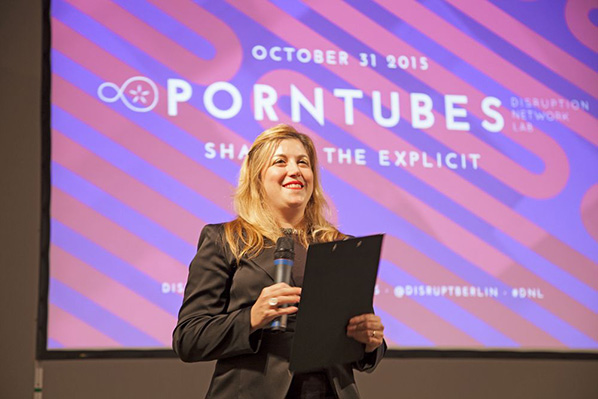
With its first edition in April, Disruption Network Lab is an ongoing platform of events and research on art, hacktivism and disruption, held at Studio 1 of Kunstquartier Bethanien, in partnership with Kunstraum Kreuzberg/Bethanien, in Berlin. On 31st of October it has held its 5th session, PORNTUBES: Sharing the Explicit. Aiming to discuss the role of porntubes in the sex and porn industry it gathered porn practitioners, entrepreneurs, sex work activists and researchers, to engage in a debate on the intertwining of porn with the Internet.
Pornography has always been a pioneer in using new technologies for its distribution and promotion. Internet, by allowing anonymous access to porn from the comfort of everyone’s home it seemed to be the ultimate tool for the porn industry’s expansion, to say the least. As pointed by Roy Klabin during the talk, 38,5% of the time we spend on the Internet is spent watching porn. As in many other spheres, it also seemed to be the beginning of a new era of labour liberation with an apparent decentralisation from the big porn production houses. This has allowed the blossoming of new small and independent companies with their own place in the market. But if cyberspace once seemed to offer a possibility to escape the tentacular control and exploitation exercised by the corporative monopolies, it is now known that the rebellion of the cybernetic innovators – creators of porntubes and new online sex tools – seems to be purely a coup d’etat.

The opening keynote was by Carmen Rivera, a Mistress and Fetish-SM-performer, with a long history in the porn industry business, with an experience of the migration of porn from cinema to VHS and later to the Internet and then onto the porntubes. In conversation with Gaia Novati, a net activist and indie porn researcher, Carmen tells us her personal and professional story and immediately gives a better understanding on how porntubes – such as Redtube, X-Hamster or Youporn – have an ambiguous influence in the porn industry. Once perceived as a democratic tool allowing small porn producers to expand their radius of audience-reach, Rivera explains how much of a perverse tool of exploitation it has become and one that small producers have become too dependent on.
The fast pace of the Internet creates a lot of pressure to satisfy the hunger of porn consumers. As has become virtually infinite “fast-porn” is closely aligned with the capitalist paradigm of production, putting a bigger focus on quantity rather than quality. As the Internet leaves no space for durability — one day you’re in, the next day you’re out — careers become frail, the work of these companies are highly precarious and the concept of the “porn-star” is a short lived mirage.
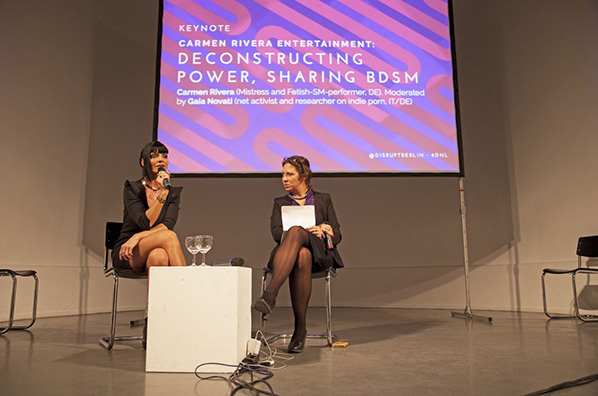
Rivera also highlights how online piracy has become virtually unavoidable resulting in gigantic losses to the porn industry. As producers see their films ending up on porntubes free of access, lawsuits don’t come as a viable solution but as financial black holes for any small or even medium companies. Even though the future doesn’t seem bright, Rivera doesn’t quit. Her battle cry: we need to create a bigger awareness of the pestilent system that controls the online porn industry. New tools of disruption need to be found to fight against these new power asymmetries established through the domination of cybernetic capital.
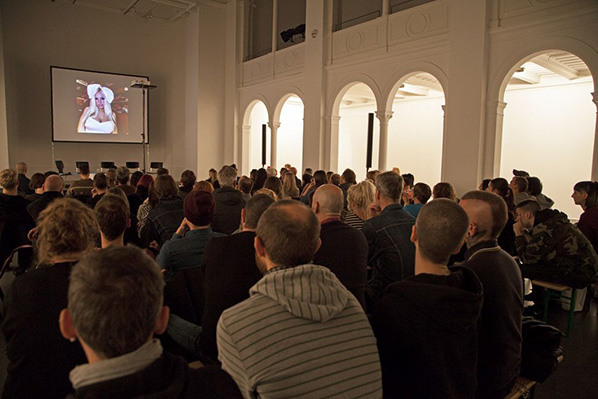
After the keynote, the discussion shifted to examining new tools of online sex work such as the project PiggyBankGirls, self-proclaimed as the first erotic crowdfunding for girls. Unfortunately, Sascha Schoonen, CEO of the project, wasn’t able to attend. Instead a short promo video was presented introducing the project, giving some tongue-in-cheek examples on how girls could profit from this crowdsourcing tool.
Women upload videos pitching their ideas or projects – financing a shelter for stray animals, the payment of tuition fees, a trip to Japan, – and then share online porn performances in exchange for support from “occasional sugar daddies”. Although one wonders if this isn’t just a euphemism – a sanitised version, let’s say – of already existing tools used by women who need money, regardless of them making public how they intend to spend money Nevertheless, it is true that the actual exploitative system needs to be dismantled, workers should be getting a bigger share for their labour and PiggyBankGirls poses as one more tool to do so, however this project also left many unanswered questions. Who are actually the women who can profit out of it? PiggyBankGirls promo tries to make this form of sex labour sound “cute”, easy and accessible. However, is just another tool for established porn actresses to diversify their means of income?
The panel, moderated by Francesco Warbear Macarone Palmieri, socio-antrophologist and geographer of sexualities, included abstracts showing a wide array of perspectives on the issue of porntubes and online sex work. The researcher Nishant Shah opened the panel with a wonderful talk ranging from porn consumerism to porn politics and how porn is influencing our digital identities. In a porn-consuming society, from establishing clear distinctions between “love” and “porn”, respectively meaningful and perverse, desirable and visceral desire, porn seems to be contingent on the morals of the spectator – as it only exists through the spectator it has also become a tool of puritan regulation. From Facebook teams of censorship and sanitisation of the virtual space to websites such as isitporn.com it is possible to understand that the concept of porn becomes itself a regulator of our sexual expressions, defining the line that separates decency from indecency. Paving the way to the pathologization of porn practices but yet dictating the meaning of authentic sexual performances, as the only visceral forms of sexual performances available, Shah pointed out how pornography, as a cultural and digital artefact, works in the regulation of our societies and in the production of our identities. Giving the example of Amanda Todd, who committed suicide after suffering from bullying for exposing her sexual body online, Shah shows how new forms of “porn” take place in the digital, from doxxing to unintended porn being perceived as such, enabling new forms of violence – let’s say porn-shaming.
Also focusing on porn consumerism, Roy Klabin, investigative documentarist/filmmaker, goes back to the discussion initiated with Carmen Rivera on porntubes VS porn producers and how producers make money. According to Roy, MindGeek, the company that owns most of the porntubes – from Youporn to Redtube – has been one of the main entities responsible of the destruction of the porn industry. By creating piracy websites holding gigantic libraries of free access to porn and making revenue out of the advertisement, resulting in huge losses for the porn companies which at the same time had become dependent on the tubes to advertise their work. Roy makes an appeal to porn producers to diversify their strategies: from webcams to virtual reality, the porn industry needs to be one step ahead of the contemporary systems of digital exploitation.
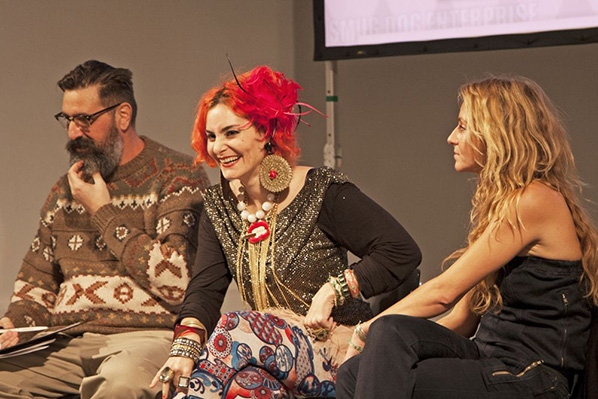
PG Macioti, a researcher and sex workers rights advocate and activist, together with Liad Kantorowicz, performer and sex workers’ activist, presented an overview on how the Internet has reshaped sex work – from sustainability to work conditions – listing some of the outcomes, pros and cons, of the extension of sex work to the virtual spaces. Online sex work, namely erotic webcam work, has enabled a proliferation of sex work by offering safe, independent and anonymous services. On the other hand with the insertion of sex work on the capitalist mode of production, just like in many other forms of digital labour it has rendered a bigger alienation to the workers – who work mainly alone and, also due to stigma, don’t share any contact with fellow colleagues – resulting in a more and more precarious labour, with sex workers being paid by minute, having to pay for their own means of production and usually paying a big share of their income to the middleman webcam services host agency.
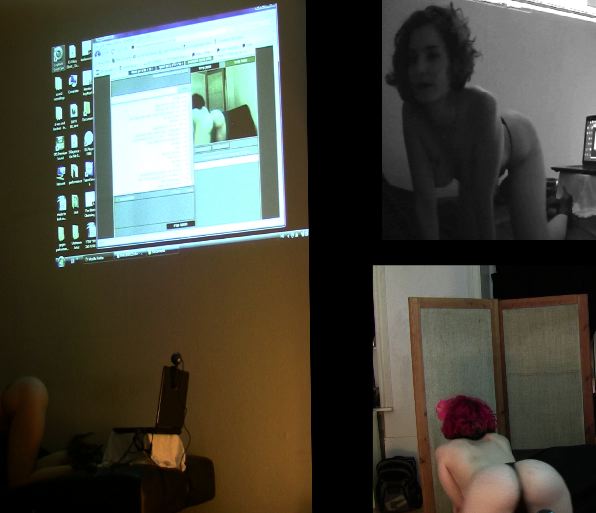
Overall, the Internet has enabled a multiplication of narratives on sex work but the power asymmetries between the online corporations and workers results in a growing exploitation and precariousness. The transversal message to all participants seems to urge for disruptive tools for online sex work, tools of self-empowerment and emancipation within the digital paradigm. Quoting the Xenofeminism manifesto by Laboria Cubonics, “the real emancipatory potential of technology remains unrealised” and the Disruption Network Lab might be the much needed spark for this revolution.
The PORNTUBES event couldn’t have had a better ending with a party held in the legendary KitKatClubnacht, a sex & techno club that is open since 1994, famous for both its music selection and its sexually uninhibited parties. It seems an exciting idea, to say the least, to bring all together researchers, porn entrepreneurs and activists to this incredible venue after an intense afternoon discussing the porntubes.
Concluding the series of conference events of Disruption Network Labs during 2015, the next event will be STUNTS: Distributed, Playful and Disrupted, taking place on the 12th of December, at the Studio 1 of Kunstquartier Bethanien, and the direct link is: http://www.disruptionlab.org/stunts/. This time the discussion will focus on political stunts as an imaginative and artistic practice, combining hacking and disruption in order to generate criticism of the status quo. As the immense dragnet of state-surveillance extends it becomes imperative to understand which are the available tools of obfuscation, how it is (still) possible to hack the system and which tools of political resistance can be deployed Disruption Network Lab wraps the year with a tempting offer, inviting artists, hackers, mythmakers, hoaxers, critical thinkers and disrupters to present practices of mixing the codes, creating disturbance, subliminal interventions, giving raise to paradoxes, fakes and pranks.
The new project by Guido Segni is so monumental in scope and so multitudinous in its implications that it can be a bit slippery to get a handle on it in a meaningful way. A quiet desert failure is one of those ideas that is deceptively simple on the surface but look closer and you quickly find yourself falling down a rabbit-hole of tangential thoughts, references, and connections. Segni summarises the project as an “ongoing algorithmic performance” in which a custom bot programmed by the artist “traverses the datascape of Google Maps in order to fill a Tumblr blog and its datacenters with a remapped representation of the whole Sahara Desert, one post at a time, every 30 minutes.”1
Opening the Tumblr page that forms the core component of A quiet desert failure it is hard not to get lost in the visual romanticism of it. The page is a patchwork of soft beiges, mauves, creams, and threads of pale terracotta that look like arteries or bronchia. At least this morning it was. Since the bot posts every 30 minutes around the clock, the page on other days is dominated by yellows, reds, myriad grey tones. Every now and then the eye is captured by tiny remnants of human intervention; something that looks like a road, or a small settlement; a lone, white building being bleached by the sun. The distance of the satellite, and thus our vicarious view, from the actual terrain (not to mention the climate, people, politics, and more) renders everything safely, sensuously fuzzy; in a word, beautiful. Perhaps dangerously so.
As is the nature of social media platforms that prescribe and mediate our experience of the content we access through them, actually following the A quiet desert failure Tumblr account and encountering each post individually through the template of the Tumblr dashboard provides a totally different layer to the work. On the one hand this mode allows the occasional stunningly perfect compositions to come to the fore – see image below – some of these individual ‘frames’ feel almost too perfect to have been lifted at random by an aesthetically indifferent bot. Of course with the sheer scope of visual information being scoured, packaged, and disseminated here there are bound to be some that hit the aesthetic jackpot. Viewed individually, some of these gorgeous images feel like the next generation of automated-process artworks – a link to the automatic drawing machines of, say, Jean Tinguely. Although one could also construct a lineage back to Duchamp’s readymades.

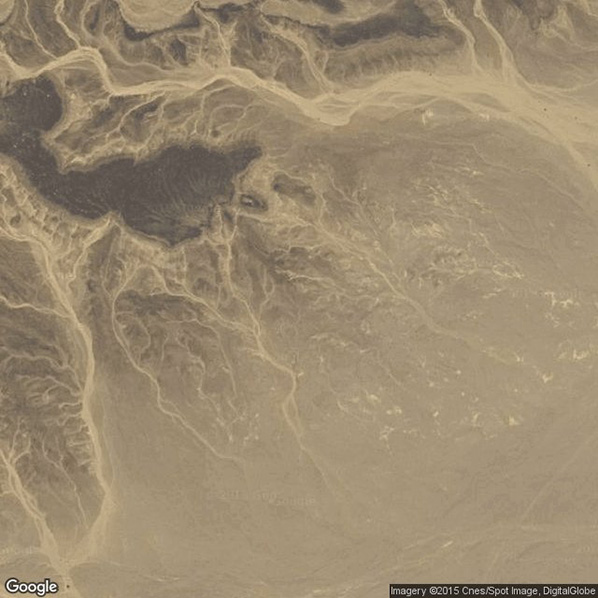
Segni encourages us to invest our aesthetic sensibility in the work. On his personal website, the artist has installed on his homepage a version of A quiet desert failure that features a series of animated digital scribbles overlaid over a screenshot of the desert images the bot trawls for. Then there is the page which combines floating, overlapping, translucent Google Maps captures with an eery, alternately bass-heavy then shrill, atmospheric soundtrack by Fabio Angeli and Lorenzo Del Grande. The attention to detail is noteworthy here; from the automatically transforming URL in the browser bar to the hat tip to themes around “big data” in the real time updating of the number of bytes of data that have been dispersed through the project, Segni pushes the limits of the digital medium, bending and subverting the standardised platforms at every turn.
But this is not art about an aesthetic. A quiet desert failure did begin after the term New Aesthetic came to prominence in 2012, and the visual components of the work do – at least superficially – fit into that genre, or ideology. Thankfully, however, this project goes much further than just reflecting on the aesthetic influence of “modern network culture”2 and rehashing the problematically anthropocentric humanism of questions about the way machines ‘see’. Segni’s monumental work takes us to the heart of some of the most critical issues facing our increasingly networked society and the cultural impact of digitalisation.
The Sahara Desert is the largest non-polar desert in the world covering nearly 5000 km across northern Africa from the Atlantic ocean in the west to the Red Sea in the east, and ranging from the Mediterranean Sea in the north almost 2000 km south towards central Africa. The notoriously inhospitable climate conditions combine with political unrest, poverty, and post-colonial power struggles across the dozen or so countries across the Sahara Desert to make it surely one of the most difficult areas for foreigners to traverse. And yet, through the ‘wonders’ of network technologies, global internet corporations, server farms, and satellites, we can have a level of access to even the most problematic, war-torn, and infrastructure-poor parts of the planet that would have been unimaginable just a few decades ago.
A quiet desert failure, through the sheer scope of the piece, which will take – at a rate of one image posted every 30 minutes – 50 years to complete, draws attention to the vast amounts of data that are being created and stored through networked technologies. From there, it’s only a short step to wondering about the amount of material, infrastructure, and machinery required to maintain – and, indeed, expand – such data hoarding. Earlier this month a collaboration between private companies, NASA, and the International Space Station was announced that plans to launch around 150 new satellites into space in order to provide daily updating global earth images from space3. The California-based company leading the project, Planet Labs, forecasts uses as varied as farmers tracking crops to international aid agencies planning emergency responses after natural disasters. While it is encouraging that Planet Labs publishes a code of ethics4 on their website laying out their concerns regarding privacy, space debris, and sustainability, there is precious little detail available and governments are, it seems, hopelessly out of date in terms of regulating, monitoring, or otherwise ensuring that private organisations with such enormous access to potentially sensitive information are acting in a manner that is in the public interest.
The choice of the Sahara Desert is significant. The artist, in fact, calls an understanding of the reasons behind this choice “key to interpret[ing] the work”. Desertification – the process by which an area becomes a desert – involves the rapid depletion of plant life and soil erosion, usually caused by a combination of drought and overexploitation of vegetation by humans.5 A quiet desert failure suggests “a kind of desertification taking place in a Tumblr archive and [across] the Internet.”6 For Segni, Tumblr, more even than Instagram or any of the other digitally fenced user generated content reichs colonising whatever is left of the ‘free internet’, is symbolic of the danger facing today’s Internet – “with it’s tons of posts, images, and video shared across its highways and doomed to oblivion. Remember Geocities?”7
From this point of view, the project takes on a rather melancholic aspect. A half-decade-long, stately and beautiful funeral march. An achingly slow last salute to a state of the internet that doesn’t yet know it is walking dead; that goes for the technology, the posts that will be lost, the interior lives of teenagers, artists, nerds, people who would claim that “my Tumblr is what the inside of my head looks like”8 – a whole social structure backed by a particular digital architecture, power structure, and socio-political agenda.
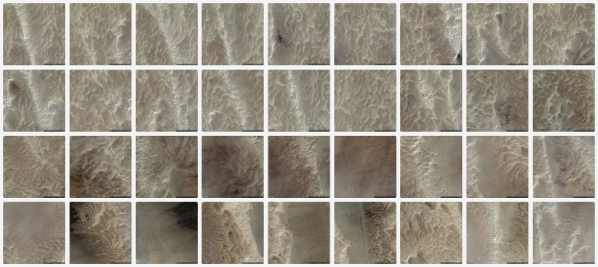
The performative aspect of A quiet desert failure lies in the expectation of its inherent breakdown and decay. Over the 50 year duration of the performance – not a randomly selected timeframe, but determined by Tumblr’s policy regulating how many posts a user can make in a day – it is likely that one or more of the technological building blocks upon which the project rests will be retired. In this way we see that the performance is multi-layered; not just the algorithm, but also the programming of the algorithm, and not just that but the programming of all the algorithms across all the various platforms and net-based services incorporated, and not just those but also all the users, and how they use the services available to them (or don’t), and how all of the above interact with new services yet to be created, and future users, and how they perform online, and basically all of the whole web of interconnections between human and non-human “actants” (as defined by Actor- network theory) that come together to make up the system of network, digital, and telecommunications technologies as we know them.
Perhaps the best piece I know that explains this performativity in technology is the two-minute video New Zealand-based artist Luke Munn made for my Net Work Compendium – a curated collection of works documenting the breadth of networked performance practices. The piece is a recording of code that displays the following text, one word at a time, each word visible for exactly one second: “This is a performance. One word per second. Perfectly timed, perfectly executed. All day, every day. One line after another. Command upon endless command. Each statement tirelessly completed. Zero one, zero one. Slave to the master. Such was the promise. But exhaustion is inevitable. This memory fills up. Fragmented and leaking. This processor slows down. Each cycle steals lifecycle. This word milliseconds late. That loop fractionally delayed. Things get lost, corrupted. Objects become jagged, frozen. The CPU is oblivious to all this. Locked away, hermetically sealed, completely focused. This performance is always perfect.”
Guido Segni’s A quiet desert failure is, contrary to its rather bombastic scale, a finely attuned and sensitively implemented work about technology and our relationship to it, obsolescence (planned and otherwise), and the fragility of culture (notice I do not write “digital” culture) during this phase of rapid digitalisation. The work has been released as part of The Wrong – New Digital Art Biennale, in an online pavilion curated by Filippo Lorenzin and Kamilia Kard, inexactitudeinscience.com.
Stanza is an internationally recognised artist who has been exhibiting worldwide since 1984. He has won so many prizes you’d have trouble fitting them all on one mantlepiece. He has exhibited over fifty exhibitions globally and is an expert in arts technology, CCTV, online networks, touch screens, environmental sensors, and interaction. His artworks examine artistic and technical perspectives, within the contexts of architecture, data spaces and online environments.
Recurring themes throughout his career include the urban landscape, surveillance culture, privacy and alienation in the city. Stanza is interested in the patterns we leave behind, and real time networked events, that are usually re-imagined and sourced for information. He uses multiple new technologies so to create distances between real time, multi point perspectives that emphasis a new visual space. The purpose of this is to communicate feelings and emotions that we encounter daily which impact on our lives and which are outside our control.
Much of his work has centered on the idea of the city as a display system and various projects have been made using live data, the use of live data in architectural space, and how it can be made into meaningful representations. See Publicity, Robotica, Sensity, as well as a whole series of work manipulating real time CCTV data to making artworks with them: See, Velocity, Authenticity, Urban Generation. These works reform the data, work with the idea of bringing data from outside into the inside, and then present it back out again in open ended systems where the public is often engaged in or directly embedded in the artwork. Interactive and visually appealing, his style also maintains the substantive power through multi-facetted content.
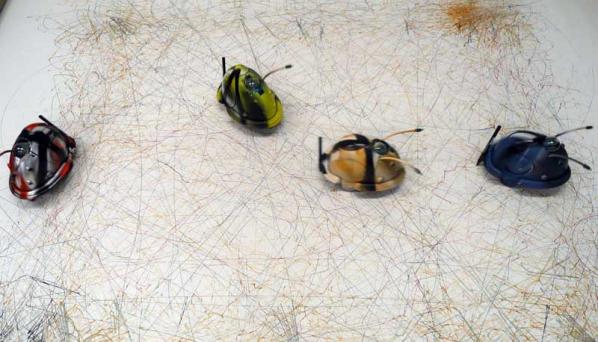
Marc Garrett: Could you tell us who has inspired you the most in your work and why?
Stanza: I don’t really get inspiration from the “who” question, I prefer the “what” and “why” questions. As a professional artist I look at loads of art so to understand what art is and can be, and it’s always an ever changing and fluid response. I also spend a lot of time ignoring stuff and material; (focused ignoring) because it has become harder and harder to see though the fog; the noise of it all. Maybe it’s better to think of a working model for inspiration, Andy Warhol had one. Just make the work. That’s what I do. I am not a part time artist in academia or an artist with another job, I’ve done this for the last thirty years, inspired by and in response to the world around me.
This dogmatic commitment to my work comes from my believes that the system you have to trust and invest in yourself. Inspiration, quite literally is everything all around you all at once, all at the same time, moment by moment. This is what inspires my work and it influences the creation of real time information flows, and works in parallel realities. It allows me to stand back at a distance and work with complex data sets while at the same time making meaning from them. Forming data into a shape, because this confluence might inspire a repositioning of thought and values while at the same time unlocking a hidden meaning to enable the viewer to feel and experience something new or to do something creative with the results.
MG: How have they influenced your own practice and could you share with us some examples?
S: There’s a saying be careful what you wish for. If one reverses this then it could be wish for what you want and need. Influence is problematic because it’s both negative and positive. The idea of influence seems causal, but my own practise isn’t based on influence but in research into certain themes. This enables me to get into both sides of particular questions or debate, so to frame the work I make. Works like these have been inspired by this focus…
The Singing Trees, focus in the invisible things and the environment http://stanza.co.uk/tree/index.html
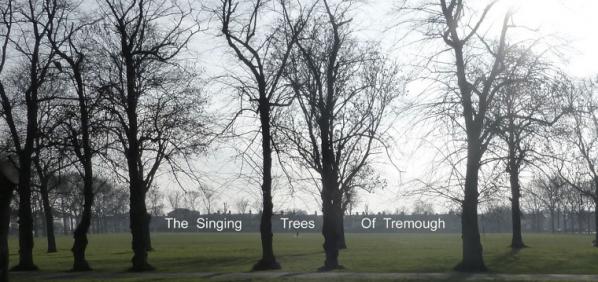
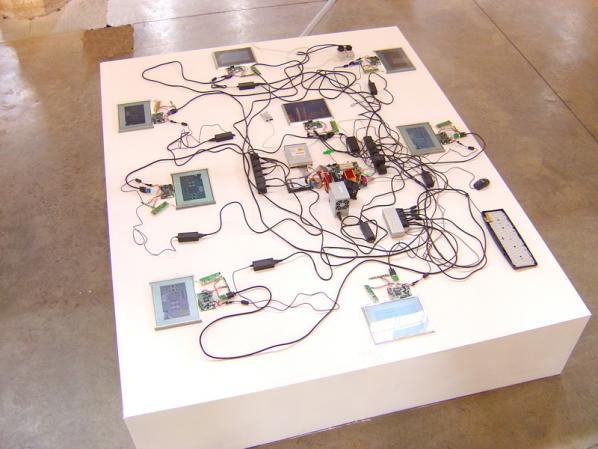
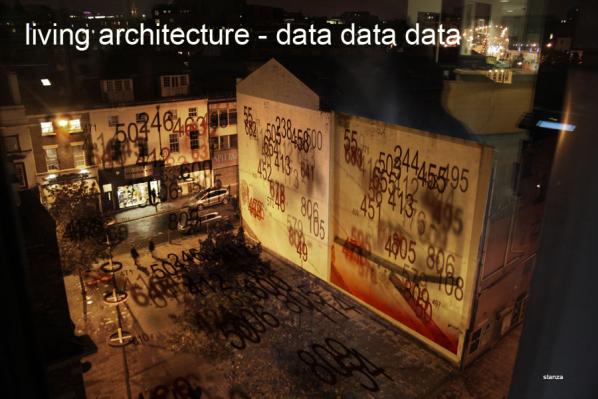
MG: How different is your work from your influences and what are the reasons for this?
S: I have been researching smart cites, urbanisn, and have collected ‘big data’ since 2004. I have been building my own wireless sensor network. This eventually manifested itself in an artwork called Capacities in 2010 which then influenced all the others in the series until it now has this form.
Capacities: Life In The Emergent City, captures the changes over time in the environment (city) and represents the changing life and complexity of space as an emergent artwork
http://stanza.co.uk/capacities/index.html
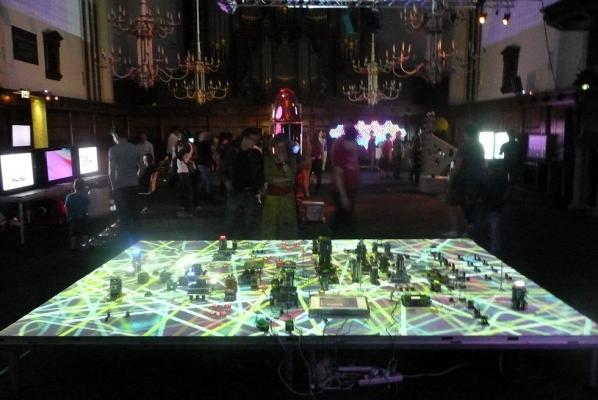
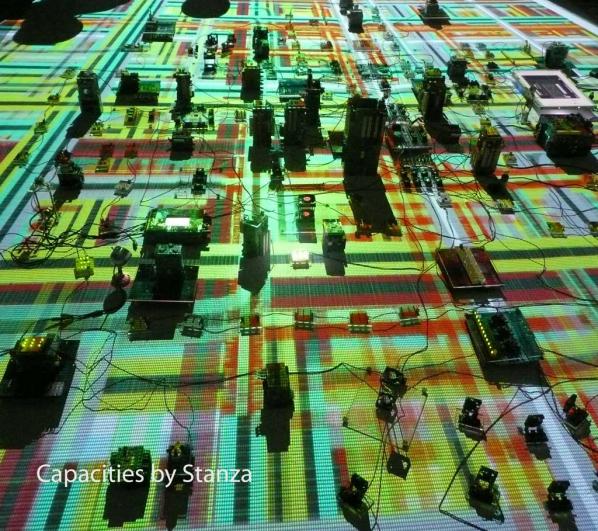
Which led to…
The Nemesis Machine- From Metropolis to Megalopolis to Ecumenopolis.
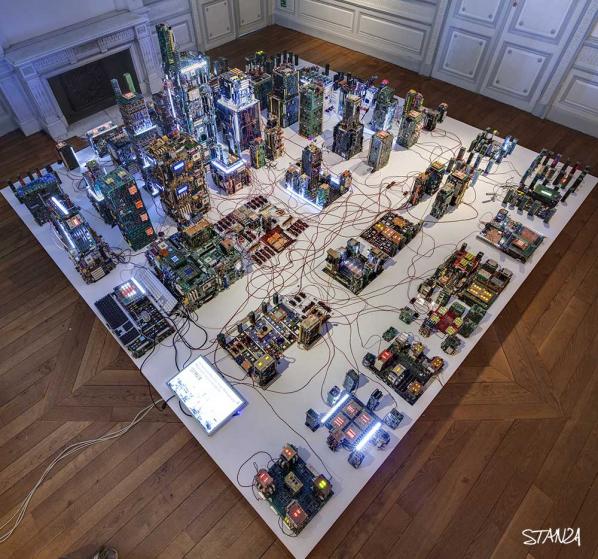
“A Mini, Mechanical Metropolis Runs On Real-Time Urban Data. The artwork captures the changes over time in the environment (city) and represents the changing life and complexity of space as an emergent artwork. The artwork explores new ways of thinking about life, emergence and interaction within public space. The project uses environmental monitoring technologies and security based technologies, to question audiences’ experiences of real time events and create visualizations of life as it unfolds. The installation goes beyond simple single user interaction to monitor and survey in real time the whole city and entirely represent the complexities of the real time city as a shifting morphing complex system.
The data and their interactions – that is, the events occurring in the environment that surrounds and envelops the installation – are translated into the force that brings the electronic city to life by causing movement and change – that is, new events and actions – to occur. In this way the city performs itself in real time through its physical avatar or electronic double: The city performs itself through an-other city. Cause and effect become apparent in a discreet, intuitive manner, when certain events that occur in the real city cause certain other events to occur in its completely different, but seamlessly incorporated, double. The avatar city is not only controlled by the real city in terms of its function and operation, but also utterly dependent upon it for its existence.”
MG: Is there something you’d like to change in the art world, or in fields of art, technology and social change; if so, what would it be?
S: It’s the museum I would like to change or engage with. It seems that anything and everything will end up in the museum. We have become the museum. We are the sum of our collections catalogs and archives. Since the current trend is for public engagement we will see a mix of these new technologies aiding and abetting this and various dialogues.
Therefore these questions need to be raised more vocally. How do visitors interact with each other and artworks? How do visitors behave in public space and what patterns or communities do they form. Can these outputs reshape our experience of public space and the art?
So, new immersive technologies could be used to investigate how visitors interact with art works, with each other and what impact their experiences have in forming new user interactions within public space. This space could be made more social and lead to new real time artworks based on visitor interaction and new visualizations of the gallery space based on gathered data.
Artists used to occupy specific issues but now there aren’t many topics artists haven’t engaged in or reached out to. The issues that will resonate will be the ones closest to the issue of the day…. and, they will be economics, the environment and migration. Because of this I would like to less focus on public engagement spectacle or entertainment and more on the quality and public engagement rooted in intellectual rigour.
Technology affords new ways of working with audiences and curators as participants in artworks. The concept of the exhibition as an active site for experimentation and collaboration between curators, artists and audiences prefigures a general cultural movement towards the centrality of experience and away from the reification of the object.
However, how audience activities and movements can be used as the subject of new artwork as well as modify engagement with existing collections is a cultural and technological challenge.
SeePublic Domain: You Are My Property, My Data, My Art, My Love.

The Public Domain Series involves using live CCTV systems that are already installed then using these cameras to enhance gallery space and the audiences experience of the gallery. http://stanza.co.uk/public_domain_outside/index.html
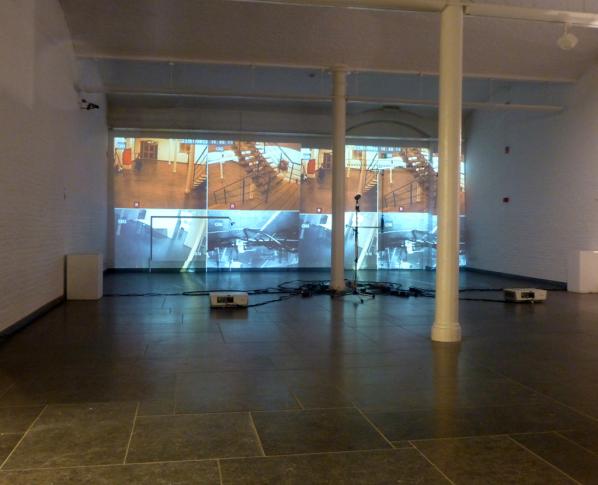
Visitors to a Gallery – referential self, embedded. Stanza uses a live CCTV system inside an art gallery to create a responsive mediated architecture. Anyone in any of the galleries and all spaces in the building can appear inside the artwork at any time.
http://stanza.co.uk/cctv_web/index.html
The social challenge within urban space is one I like to play with. In The Binary Graffiti Club, is a project I set up to try and work in this area. The Binary Graffiti Club are invited members of the public at each location for each event; they are given the hoodie to keep as thanks for their participation and contribution. The Binary Graffiti Club set off across the city and create artworks.
http://stanza.co.uk/binary_club/index.html
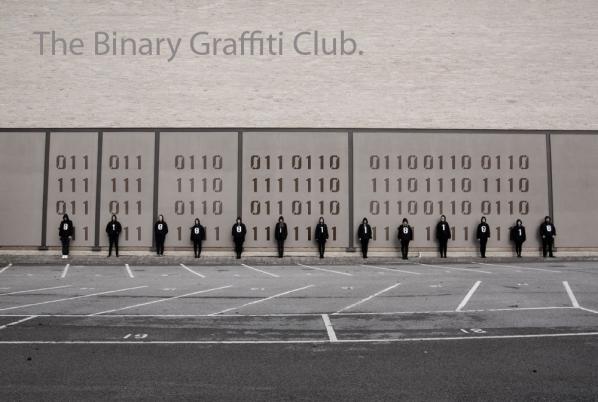
“Youths dressed in black hoodies swarmed the historic city streets of Lincoln during Frequency Festival 2013, their backs emblazoned with bold white digits, the zeros and ones. Their ominous presence was marked with a series of binary code graff-tags on official buildings throughout the city; messages of insurrection for a digital cult now active among us or analogue reminders of the digital soup of signals we wade through on a daily basis? There’s an engaging playfulness and an aesthetic pleasure to Stanza’s work that pays rewards on deeper investigation. His urban interventions remind us of the invisible occupation of the cyberspace around us and encourages us to ask whose hand manipulates these systems of control.” Barry Hale, Festival Co-Director of Frequency Festival 2013: Stanza: Timescapes/Binary Graffiti Club.
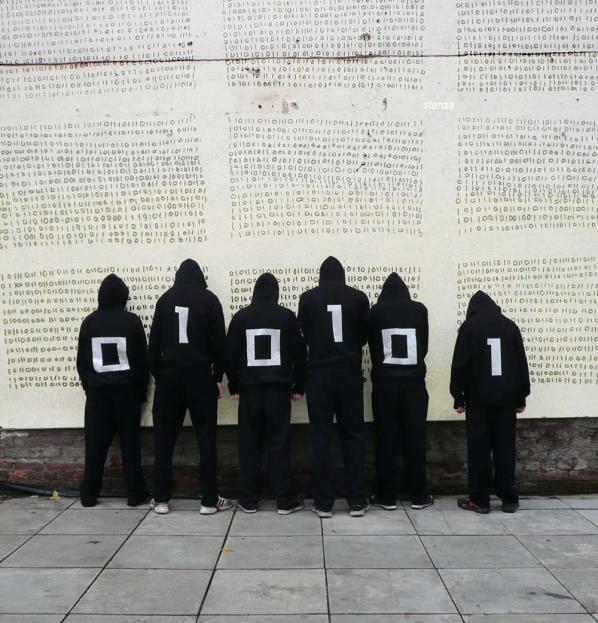
MG: Describe a real-life situation that inspired you and then describe a current idea or art work that has inspired you?
The invention of the toothpaste tube caused a revolution in painting.
The greatest discovery of the age was that the world is full of atoms.
Doing many small things instead one on big thing.
We seam to victimise out children we give them ASBO’S and anti social behaviour orders. For a while I wanted one. They actually give you a certificate like rockers, mods punks etc. The hoodie is a symbol of youth culture as well as being anti social. My new artwork the Reader and the idea of reading books and being anti-social led to this project.
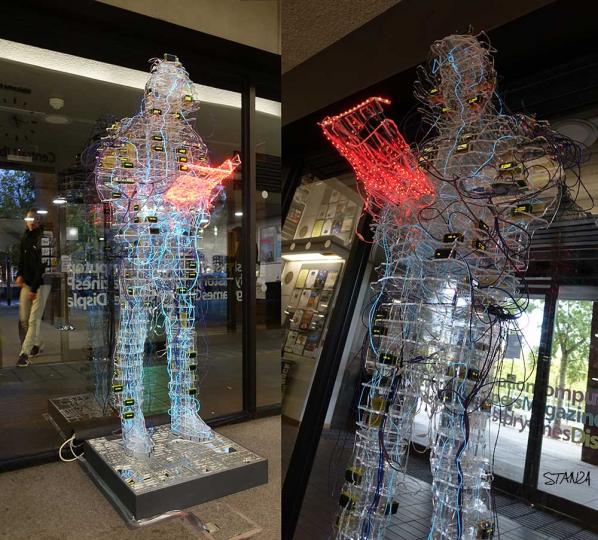
The Reader is a large six foot sculpture of the artist Stanza wearing a hoodie reading a book. The artwork is a metaphor for the engagement of reading in the digital age. The sculpture acts as a focal point for community and public engagement and has taken over one year to make and design; it has been commissioned to act as a focal point for the identity of the library. The reader reads all the books published since 1953 inside a data body sculpture. http://stanza.co.uk/TheReader_web/
MG: What’s the best piece of advice you can give to anyone thinking of starting up in the fields of art, technology and or social change?
S: Make work, make more work, and remember nothing lasts forever except true love.
Re: Art, Study it
Re: Technology. Learn it
Re: Social change . Be part of it.
MG: Finally, could you recommend any reading materials or exhibitions past or present that you think would be great for the readers to view, and if so why?
Yes the Books…
The Bible The Quran And The Torah.
Because…they are the most influential books ever written and have guided the lives of billions so it’s a good idea to have had a read… at least “view” them.
See…
Lost in Translation. This custom made robot responds to a series of texts and makes drawings unique to each reader. The work questions not only the meaning and interpretation of text but just who controls our understanding of the outputs and indeed what is Lost In Translation. This is a very playful user friendly work and actively engages the audience not only to think about the text but the meaning of how automation and networked technology is changing the control of understanding. http://stanza.co.uk/lost_in_translation/
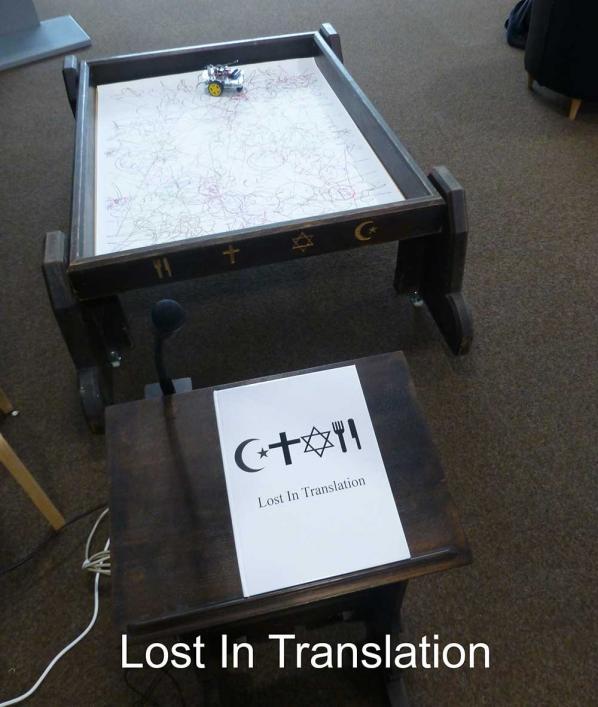
Thank you…
Copyright has been a relevant topic since the development of the printing press. It grants the author the exclusive right to reproduce, publish, and sell the content and form of intellectual property. The copy & paste mentality of the Internet user brought chaos to the system. Blockchain technology should now manage the author and marketing rights in a way that is more transparent, completely free of Bitcoin and monetary background. The idea had its origin in the art scene.
The Internet is a space without horizons or frontiers. It has changed our environment and also, thereby, our sensory perception. In ‘the real world’ we are confronted everywhere by people gazing deeply into smartphones: on the street, on the subway, in airplanes, in queues and cafés. Interpersonal dialogue is increasingly being conducted in the virtual sphere. How does the art scene react to new technological developments in arts? I asked Alain Servais (collector), Wolf Lieser (gallerist) and Aram Bartholl (artist.)
AD: Alain, you are collector of digital art since many years. How actively do you use the Internet and the possibilities that it brings for research into art?
AS: I have the opportunity to generally be able to experience art in the real. This is still an indispensable element in the process of acquiring. I’m a big user of the Internet when it’s a question of looking for information on art that’s of interest to me. The key information I always try to gather before acquiring a work is: – a document collating the works which have marked the evolution of the artist’s practice –a piece of writing by an academic, curator or critic contextualizing the artist’s work – an interview with the artist, as I want to hear his/her ‘ voice’ speaking about on his/her art – and a biography.
AD: Wolf, how much do you use the Internet and its possibilities for better marketing in the art scene?WL: We have a presence on various social media and websites, for example, FB, FLICKR, Bpigs, ArtfactsNet, etc. But we try to limit it to those pages that are relevant to art. As an actual communication medium we primarily use Facebook.
AD: Aram, killyourphone.com provides relief and a critique of technology. What would your subjects be without the Internet?
AB: Despite rising levels of communication across devices and networks, I nonetheless notice how, when friends express their opinions on the social media channels, they do so ever more consciously and selectively. We’ve come to understand that all of the commentary and spontaneous utterances on Twitter, FB & co no longer just disappear, but are saved, analyzed and used. ‘Private is the new public’, said Geraldine Juarez recently. The belief that the net makes the world fantastically democratic and offers an equal chance for everyone has, at least since Snowden’s revelations, been finally buried. To that extent, the theme ‘how would it be without the Internet?’ is very interesting! How could we communicate without central, monitoring services? Which low-tech DIY technologies are available in order to exchange data ‘offline’? How can we live without Google?… (A self-test is strongly recommended).
The interplay between the old and new environments leads to numerous uncertainties and generational conflicts. While some nostalgic digital immigrants still assess the advantages of the digital world as being synthetic, alien and unsocial, to the generation of digital natives, the digital abundance is felt as entirely natural. For them, the new technologies were with them in the cradle.
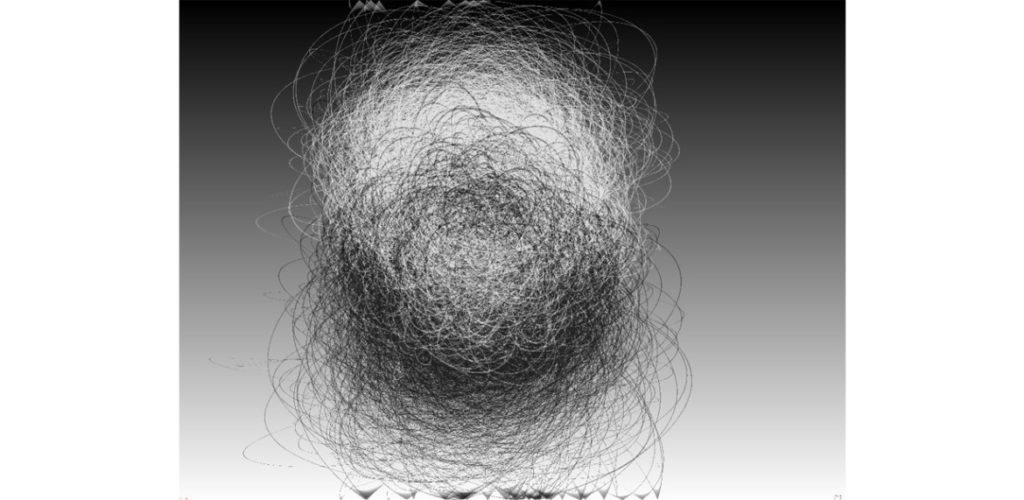
AD: Alain, you are a digital immigrant. What was the first media work in your collection? When did you buy it and why?
AL: My first experience with digital art was with bitforms gallery in NY, more than 10 years ago – at a time when it was really under the radar. I went to an exhibition by Mark Napier from whom I acquired a work at that time – one of the “Old Testament” pieces. That was very natural for me, because I was looking for some new kind of art. I knew enough of art history to know that every important movement in art was always linked to a social, economical, technological, psychological development in society. It was a time, when I was trying to collect works that were really addicted/connected to the actual world, the world around us. I was thinking, ok let’s put myself in 2150: when I’ll be using my third heart and my second brain, what will I say was important in the year 1999/ 2000? Without any doubt it will be the computer and the Internet 2.0 with Facebook and social networks and everything. Eventually I thought: wow people were creating art and it is digital. I immediately considered it to be a very important development for the arts.
AD: Wolf, you procure and sell digital art. What do you think today is the greatest obstacle to understanding the effect of new media?
WL: The sale and procurement via the Internet leads to superficiality. This is, at least, my perception. Experiencing art on a website, interactively or not, is often characterized by shorter cycles/loops compared to viewing the same website here in the gallery. I think we need, as we always did, a balance between the real and the virtual. And actually, this makes sense, because we ourselves do embody both. It’s a reason why the digital natives often express themselves in analog media – it’s no coincidence!
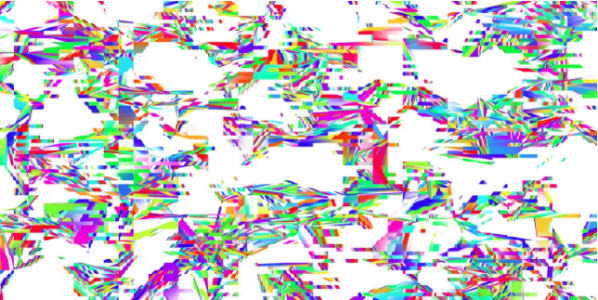
AD: Aram, your works stand at the charged interface between public and private, online and offline, between technological infatuation and everyday life, whereby you teach us how to better understand our new environment. ‘ Whoever sharpens our perception tends to [be] antisocial …’, said media theorist Marshall McLuhan. Is it true?
AB: Especially TODAY it is more important than ever to sharpen perception with regard to the effects of technological development. Two and a half years after Snowden the public discussion on privacy and mass surveillance continues to level off. While the big secret services use their hefty budgets to snow us under, and to lock the doors to the NSA, the interest in further explosive leaks from the Snowden documents is fading. ‘Nothing to hide’ is the mantra of the ‘Smart New World’, in which we can neither see nor sense the complex mechanisms of surveillance. In contrast to the dystopic Matrix scenario, our world will ever be fluffier, smarter and more comfortable, unless one has the wrong passport or sits on a bus next to a presumed terrorist. Then reality will be brutal. Precisely for these reasons it is so important to make the hidden, abstract data world understandable, whether through concrete images, objects, or installations. If you were to hold 8 volumes with 4.7 million passwords of LinkedIn users in your hand hand, you would suddenly understand the significance of the security of our online identities.
Copyright has been a relevant topic since the development of the printing press. It grants the author the exclusive right to reproduce, publish, and sell the content and form of intellectual property. The copy & paste mentality of the Internet user brought chaos to the system. The blockchain technology should now manage the author and marketing rights in a way that is more transparent, completely free of Bitcoin and monetary background. The idea had its origin in the art scene.
AD: Alain, do you think the further development of the blockchain lead to more transparency and protection against forgery?
AS: I would not use the word forgery, but certainly [against] an unfair use of material or a copyright infringement. I suppose that the blockchain is one path that should be investigated and tested for the copyright protection of online works of art. I believe in a transformation of the economy of the market for online art towards the direction of a wider distribution through, perhaps, a ‘renting’ of the work rather than an illusory acquisition (taking into account the copyright stays with the artist anyway). i-tunes and Spotify both adapted well to the online art economy.
AD: Wolf, do you make use of these new possibilities within the marketing of digital art? And have you already thought about a new currency model?
WL: I’ve already been confronted by this and I think that it makes sense. With my artists though there’s as yet no need or willingness. I’ve yet to engage with new currency models.
AD: Aram, to what extent is the blockchain and Bitcoin really discussed within artist circles?
AB: Services like Wikipedia, the Open-Source Software movement and, in principle, the entire World Wide Web wouldn’t exist at all today had Telco-payment-services pushed through its fee-based BTX/videotext with pay-per-view, in the 1980s. Naturally the possibility turns the never-ending reproduction of classic markets on its head, and in recent years, there have been extensive debates about copyright and intellectual property. We shouldn’t forget though, that a large part of the software that operates the Internet and millions of devices came about in the spirit of the sharing-culture. The blockchain is a powerful tool, which introduces a form of artificial scarcity into the digital environment. It’s up to each artist himself or herself whether and how he or she chooses to distribute their work. The art market and the demand will certainly create some model or other for the sale and distribution of art that only exists in bits and bytes. Let’s wait and see…
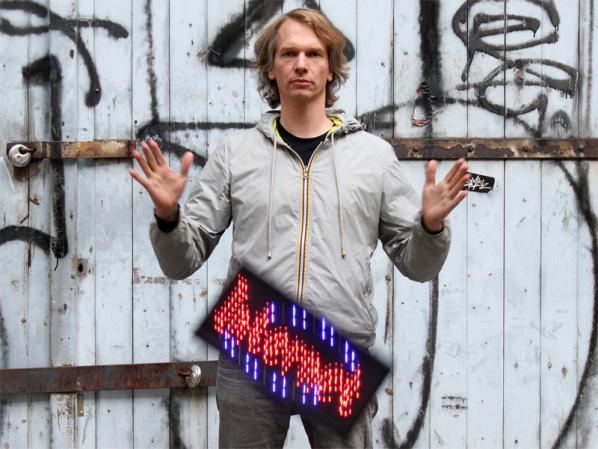
Featured image: Aram Bartholl, Forgot Your Password?, 2013
Historical art is developed by way of its respective era and society, meaning that it is always made in the present. Today, new technologies open up new possibilities for artistic potential. Currently, art production, which is influenced by new technologies, is reacting strongly to the changing times. Artworks are being created, which react to digitalisation, even if they don’t necessarily reflect the digital format itself (i.e. like works by Aram Bartholl).
In its purest form, digital art is ephemeral and based on a transient technology. The continual advancement of the technology demands on-going improvements; challenges from which many emerging artists refuse to be deterred. On the contrary: the monthly quota of events related to digital art proves the high level of interest around the form.
The global technical networks thereby bring about new atmospheres, or perhaps, infospheres, as media theorist Peter Weibel calls them. In the art world, previously held art-historical considerations are forced towards a re-evaluation. Conventional theories and practices must be called into question. New art forms in the immaterial digital domain demand a general rethink in terms of their conservation, presentation and acquisition. And, of course, the reception of digital art is also different.
According to studies by Hiscox, a preference for original works still dominates both in conventional and online trade. Authenticity and intrinsic value continue to be important criteria when it comes to decision-making regarding the purchase of art. Transparency will remain, for the long term, a fundamental prerequisite for the establishment of trust.
Most acquisitions of digital art take place conventionally by way of galleries. If a collector acquires, for example, a website, then the gallerist sells he or she a domain (which is unique!) and transfers in-addition, a licence contract. This is a material document. The ‘network’ remains virtual, while retaining open all of the attributes of an artwork in the source code, i.e. the artist’s signature, the title, the year in which it was produced, the technique, and information on the programmer or the collector.
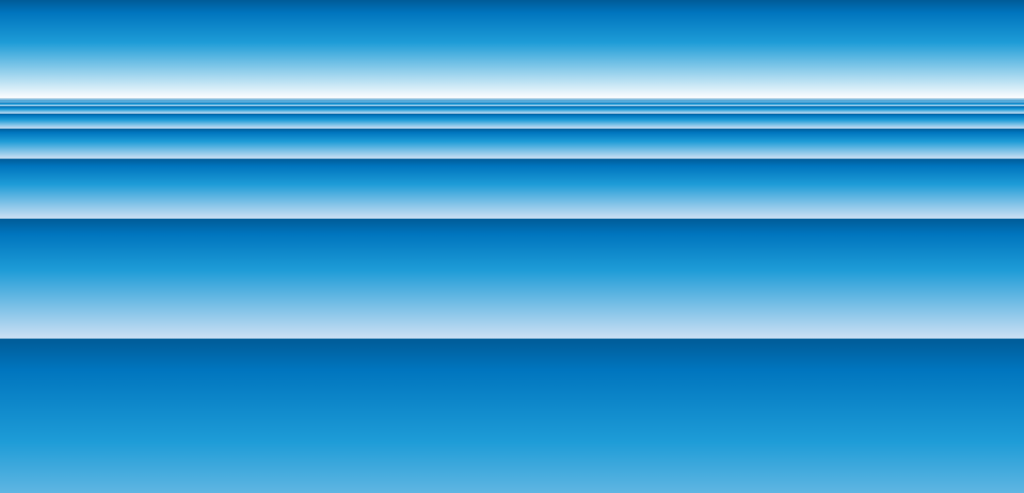
The collector can enjoy the work beyond the confines of time and physical location. Simultaneously, he or she is responsible for its preservation, which is the guarantee for the continuation of its existence over time.
Internet art in general is dependant on software, but above all it relies on hardware (computer, hard-drive, interfaces, sensors, monitors, projectors, etc.). Yet for how long will the hardware remain a part of our interactive culture? Forward-looking collectors purchase, in addition to the contract, a series of devices that safeguard the work for the future.
The ability to learn about new approaches in our fast-moving culture occurs both naturally and dynamically. The art market is an extremely non-transparent market, access to the right networks and contacts. Is this likely to change any time soon?
Art history shows us that artists are ahead of their time, anticipating what is to come. One need only cast an eye around the scene, in order to open the door to new ideas and technological marketing methods in the art world.
The German artist, Stephan Vogler, has already done this and in cooperation with a law firm has unleashed intelligent synergies. The artist himself produces digital files – intangible goods, as he calls them – which should also naturally migrate to the art market over the long-term, in the best case scenario, as unique pieces which one – such is the thinking within his system – can acquire with Bitcoin.
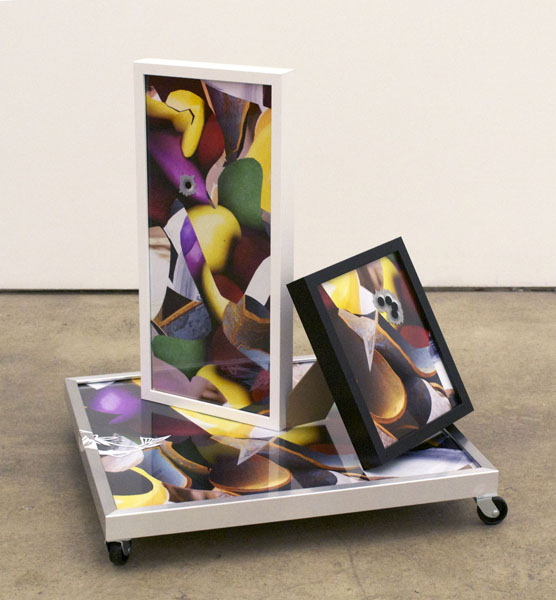
Far more interesting than the means of purchase, is the Bitcoin technology that lies behind it.
Stephan Vogler has developed a licence together with experts on legal practice within the art world, which transforms the digital artwork into an independently tradable virtual commodity, which is limited, both in terms of its technology and its legal rights. The system is based on a license agreement under the utilization of the Bitcoin technology. All works will come with an electronic signature, which is recognized, in legal terms, as being an original signature. This also serves as proof that the files existed at a given moment in time. Their authenticity is mathematically verifiable and the right of resale is exclusive. Virtual ownership is technically and legally limited to the respective owner. The owner of the usage rights is registered in a decentralized Bitcoin Blockchain, and the rights regarding the work are assigned through a Bitcoin transaction. In this way, digital artworks become both tradable and collectable objects without the requirement of their materialisation. Purchase and transaction take place simultaneously and the function of the custodian is eliminated. The structure behind the acquisition is thereby extremely transparent.
Artists like Stephan Vogler want to revolutionize the market for digital art through new technology. But independent from this fact, the art world is not sleeping. Collectors, institutions and art market platforms are already taking note.
For example, Austria’s Museum for Modern Art (MAK) has already bought an artwork with Bitcoin.
Cointemporary.com, a curated online platform, offers ephemeral artworks at a fixed Bitcoin (BTC) price – independent from the actual exchange rate. Berlin company ascribe.io develops systems within the Blockchain technology and offers services for art experts, assisting in the professional management of their digital files, i.e. their registration, archival, transfer of ownership etc.
The Winklevoss twins are known as great advocates of the digital currency. Rumours about investments in the art form are rife.
The acquisition of artworks via Bitcoin sounds forward-looking and simple yet should be enjoyed with a good degree of care. The reason for this is that Bitcoin is not controlled by a state and its central bank, but rather is generated by Internet users by way of complicated arithmetic calculations. So what might be the advantage of a Bitcoin purchase?
Collectors of digital art, such as the Belgian, Alain Servais, or Hampus Lindwall, from Sweden, view the purchase of work via the risky Bitcoin currency with scepticism.
It is still too early to really be able to judge the effects of these developments. Ultimately, the discussion as a whole concentrates far less on the system of currency than on the technology itself, which can also be applied to other circumstances. These experiments will only truly bear fruit through the development of a high degree of know-how, the courage to take on legal consequences at the moment of purchase, and through simple decisions in a user-friendly design.
Choose Your Muse is a series of interviews where Marc Garrett asks emerging and established artists, curators, techies, hacktivists, activists and theorists; practising across the fields of art, technology and social change, how and what has inspired them, personally, artistically and culturally.
Annie Abrahams was born in the Netherlands to a farming family in a rural village in the Netherlands. In 1978 she received a doctorate in biology and her observations on monkeys inspired her curiosity about human interactions. After leaving an academic post she trained as an artist and moved to France in 1987, where she became interested in using computers to construct and document her painting installations. She has been experimenting with networked performance and making art for the Internet since the mid 1990s. Her works have been exhibited and performed internationally at institutions such as the National Museum of Modern Art in Tokyo, New Langton Arts in San Francisco, Centre Pompidou in France, Academy of Fine Arts in Helsinki and many other venues.
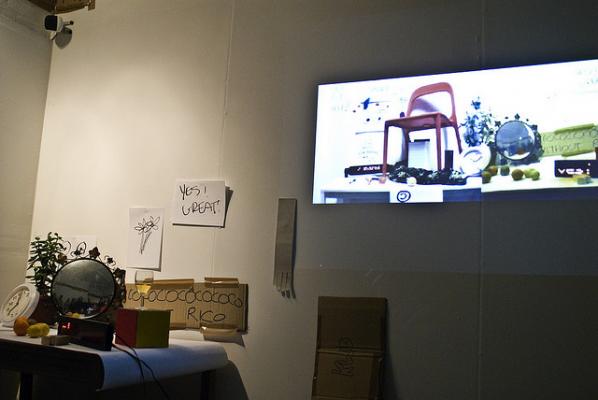
Through the years we have got to know Annie Abrahams via various online, networked artistic collaborations. In 2010, she had a her first one woman show If not you not me in the UK at Furtherfield’s earlier gallery space, the HTTP Gallery. Since then, she has shown at another mixed show at Furtherfield’s current space in Finsbury Park, London. This exhibition, Being Social included other artsists such as Karen Blissett, Ele Carpenter, Emilie Giles, moddr_ , Liz Sterry, and Thomson and Craighead.
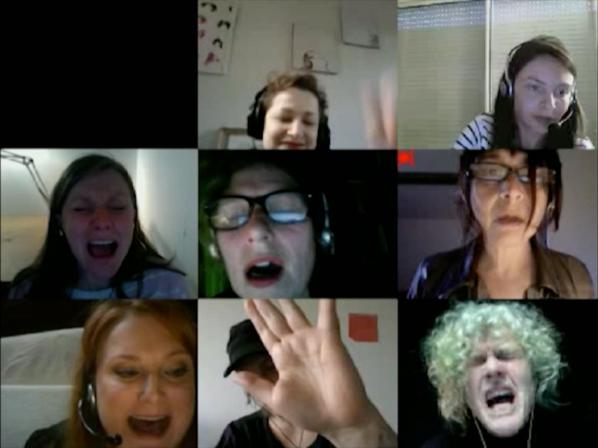
She is known worldwide for her net art and collective writing experiments and is internationally regarded as a pioneer of networked performance art. She creates situations that reveal messy and sloppy sides of human behaviour; capturing real-time moments to illucidate a reality and opening it up, making it available for thought. In an interview with Bomb Magazine in 2014 Abrahams said “My first online performance was my first HTML page. Even then I considered the Internet to be a public space, and everything that I did in that public space asked for a reaction.” [1]
Marc Garrett: Could you tell us who has inspired you the most in your work and why?
Annie Abrahams: Life itself, the people I meet. Until now my basic needs in life have hardly been threatened and so the only real problems I encountered were relational problems. Who are you? Why are you different from me? What does it mean to respect you? Is opposing you necessary? And if so, how can I do that?
MG: How have they influenced your own practice and could you share with us some examples?
AA: My practice was always based on the difficulty of having to live in a world where I don’t understand anything. Every person I meet opens up another view on this impossibility. Sometimes I write short posts about my encounters. Lately I did one on Shirley Clarke and one on Ed Atkins’ No-one is more “Work” than me. aabrahams.wordpress.com
MG: How different is your work from your influences and what are the reasons for this?
AA: My work is made from these influences. In the beginning I thought this was not ok, because I was educated with the idea that you have to be “unique” and make unique artworks. But now I am proud of my sensibility for what others say and do and the way I work with that.
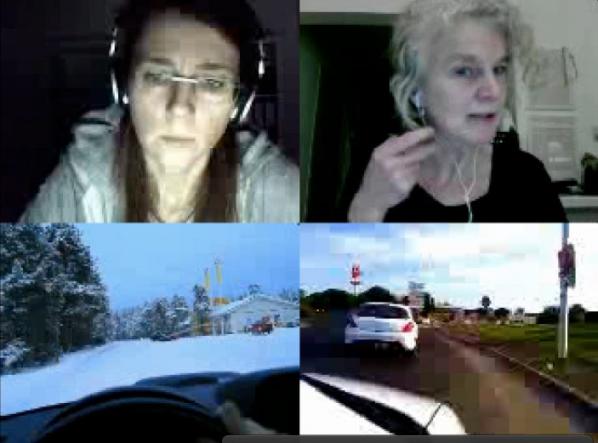
MG: Describe a real-life situation that inspired you and then describe a current idea or art work that has inspired you?
AA: Last summer I made a book called from estanger to e-stranger. Ruth Catlow described it as “all-at-once instruction manual, poetry and a series of vignettes of contemporary encounters in language-less places”. There you can find ideas and art works that inspire me, but in general I am not driven by inspiration, my acts are driven by irritation, my art by incomprehension. Art works sooth, make things bearable and sometimes incite to look beyond habits. Btw I am still continuing my research on how language shapes culture, society and me. http://e-stranger.tumblr.com/
MG: What’s the best piece of advice you can give to anyone thinking of starting up in the fields of art, technology and social change?
AA: Stay close to your own concerns, to things you can have a concrete influence on, observe the results of your actions, pay attention, adapt, and always smile to your neighbour in the morning.

MG: Could you recommend any reading materials or exhibitions past or present that you think would be great for readers to view, and if so why?
AA: For years now every now and then I’ve come back to Darren O’Donnell’s book “Social Acupuncture” and always again I say to myself, “yes, you can think and act art and politics together. Please have a look at the Mammalian Diving Reflex group’s (he is their artistic director) methods. http://mammalian.ca/method/
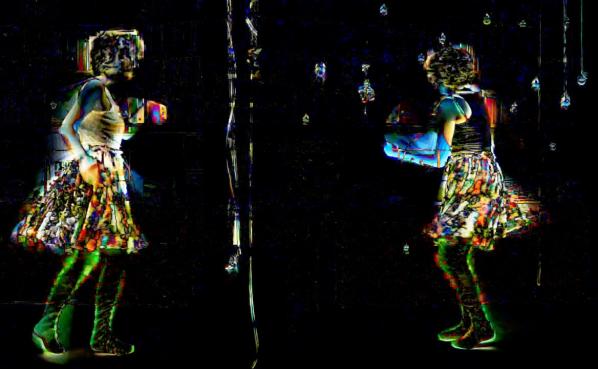
Featured image: mi.mu/Adrian Lausch – mimugloves
A new series of quarterly events facilitating better communication and collaboration between creative technologists and arts/media professionals*
Artful Spark is not a sales pitch or a soapbox, but a way for people who might not know about projection mapping or haptic controllers to see technologies demo’d and discuss their potential for new ways of telling stories and making experiences.
Our speakers will demonstrate technologies- from how to turn them on to talking about their capabilities for creative content. They’ll also talk about their own projects and be frank about the hurdles they’ve encountered along the way.
For our inaugural event we’re focusing on Wearable Tech
Rachel Freire is a clothing designer and leather specialist working across multiple disciplines of fashion, film and stage. She is textile developer for the Mi Mu Gloves: http://mimugloves.com/
Zoe Philpott, Creator of Ada.Ada.Ada, a new show about Ada Lovelace which combines interactive theatre, science lecture, and wearable technology: http://adatheshow.com/
Tine Bech, professional artist and researcher (PhD), uses technology to create large scale public artworks, interactive spaces, and participatory games that engage people into play and participation: http://www.tinebech.com/
Tincuta Heinzel is an artist, designer and curator interested in the relationship between arts and technosciences. Currently she is a research fellow at Nottingham Trent University in the frame of “An Internet of Soft Things” project. http://aninternetofsoftthings.com/
Email sam@stellarnetwork.com if you’d like to be put on our mailing list.
* Including those working in theatre, film, publishing, museums, galleries and games.
Body Drift: Butler, Hayles, Haraway (Posthumanities)
Author Arthur Kroker. University of Minnesota Press (22 Oct. 2012).
Body Drift by Arthur Kroker, takes the work of three leading women thinkers as its main focus. It therefore would feel strange, before venturing on to the review, not to mention Marilouise Kroker, his wife and collaborator who he credits with shaping the critical direction of his thought “on bodies and power.” [1] Together Marilouise and Arthur Kroker have created an abundance of work in the fields of technology and contemporary culture. They both edit the peer publishing electronic journal CTheory founded in 1996. They co-authored the influential Hacking the Future (1996), and Marilouise Kroker has co-edited and introduced numerous anthologies including Digital Delirium (1997), Body Invaders (1987), and Last Sex (1993) and Critical Digital Studies: A Reader. Marilouise Kroker is Senior Research Scholar at the University of Victoria. A recent bio written about them says “Arthur and Marilouise Kroker are the hipsters of Canadian media theory.” [2]
Arthur Kroker is Canada Research Chair in Technology, Culture and Theory, Professor of Political Science, and the Director of the Pacific Centre for Technology and Culture (PACTAC) at the University of Victoria. His recent publications include The Will to Technology and the Culture of Nihilism: Heidegger, Nietzsche, and Marx (University of Toronto Press) and Born Again Ideology: Religion, Technology and Terrorism. Dr. Kroker’s current research focuses on the new area of critical digital studies and the politics of the body in contemporary techno-culture. http://web.uvic.ca/~akroker/
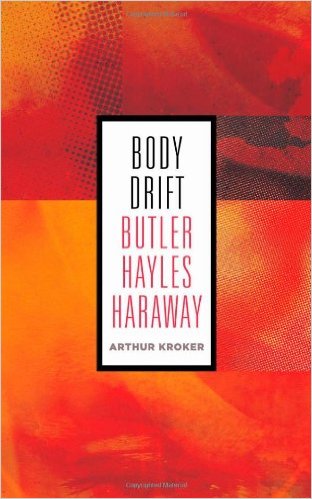
This review is written three years after the publication of the book but it feels even more relevant now than ever for reasons that will, I hope become plain…
Body Drift focuses on three major feminist theorists, Judith Butler, Katherine Hayles and Donna Haraway. They have had a deep influence on my own work and of course on media art culture through the years. They have profoundly altered our views on technology, feminism, queer theory, postmodernism, marxism, hacking, hacktivism, cybernetics, the Internet, network culture, politics and posthumaniism. Re-examining their critical perspectives and creative processes – assemblages, remixing and cyborgs- Kroker terms the emerging technological spectre body drift. He examines the connections between what he sees as Judith Butler’s postmodernism, Katherine Hayles’s posthumanism, and Donna Haraway’s companionism.
Through the spectrum of Body Drift he attempts to find a clearer understanding of the contemporary material body and its societal complexities. He views two opposing forces at work in body drift. One is, the continual disappearance of human things and values, alongside excluded ethnicities and outlawed sexualities. He connects this with an entrapment by social crisis in which actual democratic aspiration is dwindling. In parallel to this mass loss of our freedoms other factors are at work. He sees it as overall, and an eventual series and states of resistances. These are evolutionary forms of hybridity and as such are key paths for what he argues is the function of our posthuman condition. [3]
There are numerous techno-visions expounding how technology will change our lives and futures. What for me, separates a classic posthumanist and a critically aware posthumanist is that the latter is not only aware of the necessity of grass roots culture and inclusion of female voices, but is also critical of domination over others as key when engaging in the processes of innovation. Thus moving beyond existing frameworks that perpetuate patriarchal language, methods of centralization and colonial habits.
In his book You Are Not A Gadget: A Manifesto, Jaron Lanier described Ray Kurzweil’s excitement about The Singularity as apocalyptic. Lanier says “The coming Singularity is a popular belief in the society of technologists. Singularity books are as common in a computer science department as Rapture images are in an evangelical bookstore.” [4] Kurzweil’s digestible techno-bites fit well alongside big business and with Peter Diamandis a wealthy entrepreneur. Dr. Peter H. Diamandis and Dr. Ray Kurzweil co-founded the Singularity University. In To Save Everything, Click Here: Technology, Solutionism, and the Urge to Fix Problems that Don’t Exist, Evgeny Morozov writes that Diamandis “promises us a world of abundance that will essentially require no sacrifice from anyone – and since no one’s interests will be hurt, politics itself will be unnecessary.” [5]
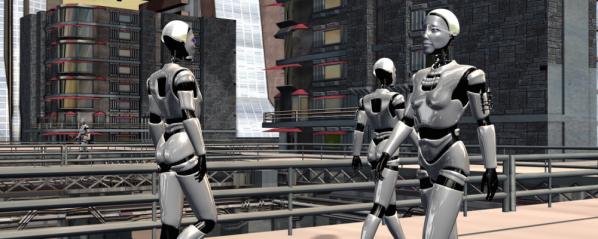
In The Joy of Revolution Ken Knabb wrote, “Marx considered it presumptuous to attempt to predict how people would live in a liberated society. “It will be up to those people to decide if, when and what they want to do about it, and what means to employ.”” [6] Kroker says, “In my estimation, while Marx, Nietzsche and Heidegger may have provided premonitory signs of the charred landscape of the technological blast, it is the specific contribution of Butler, Hayles and Haraway to provide a deeply compelling account of the fate of the body in contemporary society.” [7] This includes how we evolve our Internet freedoms, surveillance, and cyber attacks in a post-Snowden world. While we’re, either reshaping or being reshaped through the constant production of new technologies and political re-invention, it is crucial that there exists regular critique reflecting on these influences and changes on people, animals, society, the planet, and the universe. Thankfully, Butler, Hayles and Haraway disrupt the normalization and dangerously hegemonic acceptance of ‘the male overlord and his machine’ over the rest of us.
How our bodies and the idea of our bodies relate to this complex world is Kroker’s primary interest. In the introduction Kroker says that we no longer inhabit a body in any meaningful sense of the term but rather occupy a multiplicity of bodies – imaginary, sexualized, disciplined, gendered, laboring technologically augmented bodies. [8] Hayles has not only bridged the gap between science and literature, but also media art. In 2000, Hayles wrote an insightful piece on Patchwork Girl, an artwork made by Shelley Jackson in 1995, a hypertext fiction and remix of Mary Shelley’s Frankenstein. When discussing Jackson’s piece Hayles said, “As the unified subject is thus broken apart and reassembled as a multiplicity, the work also highlights the technologies that make the textual body itself a multiplicity.” [9]

Kroker says, “”Like Heidegger before her, Hayles refuses to privilege either interpretation to the exclusion of its opposite, preferring a form of thought similar to “pendurance,” that moment when, in the folded twists of complexity theory, “one comes over the other, one arrives in the other.”” [10] In an interview with Josephine Bosma on the Nettime email list, in Nov 1998, Hayles said “There may be other ways to think about the subject that don’t find themselves first and foremost on this notion of ownership. New technologies open up possibilities for rethinking other ways to begin to construct the subject.” [11] Krokers sees Hayles as providing us with the digital alphabet to explore the complexity and connections of technopoesis. “To read Hayles is, in fact, to begin to experience the fractures, bifurcations, and liminality that stretches across the skin of posthuman culture.” [12]
Donna Haraway in her introduction to A Cyborg Manifesto: Science, Technology, and Socialist-Feminism in the Late Twentieth Century, in 1985 she said, “Though both are bound in the spiral dance. I would rather be a cyborg than a goddess.” This unsettled many feminists at the time. Haraway was not interested in reclaiming what she saw as a lost ideal based on matriarchal values. Instead, she wanted women to re-invent and create their own versions of what a female could be or not be, by playfully exploiting the cyborg myth and concept in the here and now. [13] This reconstruction of the woman, Kroker says, poses particular twists and knots, and contradictions. He emphasises that we’re not discussing a traditional form of feminism but a hybrid vision of feminism. [14]
“Not waiting passively for the capricious experience of biotechnology to produce spliced bodies, Haraway has made of her own mind a biopolitics on creative hyperdrive. Deeply immersed in the (bio)scientific disciplines, always distancing herself from seductions of technological representationality by feminist difference, continuously provoking boundary breakdowns in her own thought by refusing to assent to an anthropomorphic species-heirarchy, Haraway is a theorist of the splice.” [15] Kroker (2012)
Kroker moves on from Haraway’s concepts on the cyborg to her later inter-species theory. He tries to untangle the complexity of her personal, political and theoretical relations in respect to where her critical strength is best engaged. He’s drawn to what he sees as ““Haraway’s profound conceptualization of “companion species.”” Haraway challenges the established role and hierarchical control by us humans over animals, plants, objects, and humans. [16] In her publication The Companion Manifesto: Dogs, People, And Significant Otherness, Haraway says, “I believe that all ethical relating, within or between species, is knit from the silk-strong thread of ongoing alertness to otherness-in-relation.” [17]
Haraway’s text in The Companion Manifesto conveys a shocking sense of freedom as if written by someone who longer gives a damn about her academic reputation. Perhaps, what I mean here is that the thinking reaches further than academia and builds alliances with others who may not have read her other works. In the chapter A Category of One’s own, Haraway says, “Anyone who has done historical research knows that the undocumented often have more to say about how the world is put together than do the well pedigreed.” [18] As with her concept for Situated knowledges her intention is to connect beyond officially accepted canons and norms, and established hegemonies. In his chapter HYBRIDITIES Kroker says “Haraway’s writings reveal the apocalypse that is possibly the end condition of hundreds of years of (Western) scientific experimentalism.” [19] This does not mean the West is doomed. However, Haraway has always been on the side of otherness, whether for humans or nonhuman entities. In her eyes our futures or the world as it actually is may not necessarily be as reliant on technology as we like to think.
“Perhaps most importantly, we must recognise that ethics requires us to risk ourselves precisely at moments of unknowingness, when what forms us diverges from what lies before us, when our willingness to become undone in relation to others constitutes our chance of becoming human.” [20] Judith Butler.
Of this quote from Butler’s Giving an Account of Oneself, 2005 [21], which opens the second chapter in Body Drift, Kroker says, “Could there be any text more appropriate to both understanding and perhaps, if the winds of fate are favorable, transforming contemporary politics than Judith Butler’s eloquent study of moral philosophy..?” [21] In Giving an Account of Oneself, Butler presents us with an outline for a different type of ethical practice and proposes that, before you even ask what ought I to do? Ask yourself the question who is this ‘I’? Butler, proposes that it is “a matter of necessity” that every person should “become a social theorist.” [22] Indeed, in the City Lights interview with Peter Maravelis, Kroker says Butler is speaking in terms of people breaking their silence, such as “the repetition chorus of OCCUPY during the Wall Street insurrection”. [23] And then he says, “In many ways, all of Butler’s thought is “standing as witness.” [24] Butler stands witness to what we now know in the 21st century as a violent regime of heterosexual masculinity spreading its domination over history, technology and life itself.
Butler, Hayles and Haraway are major players in feminist and queer academia and media art culture. They have all been active in breaking away from the traditional behaviours that have kept us caught within loops in various ways. Their fluid and progressive approaches to feminism are not only of value to women alone but it can also help others think beyond restrictive behaviours. Kroker’s book manages to reflect the fluidity of networked and contemporary aspects of body drift well, especially from a critically aware, posthumanist perspective. However, no matter how you slice it, it’s about personal and collective freedoms, how we can somehow reclaim our states of being, and how we can own our subjectivities and our psyches in whatever forms these may take. As artists, as humans and or as posthumans – we need Butler, Hayles and Haraway to guide us through this ever-changing, twisting, everyday, posthuman terrain.
Annet Dekker interviews Template, a graphic design and digital development studio run by Lasse van den Bosch Christensen and Marlon Harder. They engage in both client oriented work and initiate their own critical design related projects.
‘The contemporary interface of many digital collections shows images merely in neatly divided grids. How can we create context and meaning for these images?’
As sociologist Mike Featherstone puts it, ‘Increasingly the boundaries between the archive and everyday life become blurred through digital recording and storage technologies’ (2006, 591). Whereas the paper archive has always been the place to store and preserve documents and records, and has functioned as a warehouse for the material from which memories were (re)constructed, its digital counterpart is changing the meaning and function of an archive. The archive’s traditional representational relationship to social identity, agency and memory is challenged by the distributed nature of networked media. Initially designed as a mirror of physical collections and paper archives, the digital repository became a collection itself. A new set of values is presented, but it often remains unarticulated at the cultural and scientific level. What are some of the new understandings of the relationship between the software by which online archives are coded and the social, commercial and organisational practices of what is still considered the archiving of documents? What are the roles of users, in all their manifestations as the meeting point of cultural value and technological systems?
Numerous terms are used to describe the ‘new’ types of archives, for example ‘living archives’ (Passerini 2014; Lehner 2014, 77) or ‘fluid archives’ (Aasman 2014), what is commonly acknowledged is that archives are no longer stable institutions. The terms ‘living’ and ‘fluid’ point to the following characteristic of online archives: openness (they are constantly changing and accumulating), self-reference (hash tags have replaced traditional categorisation), and they represent – like many other online platforms – the shift from passive audiences to active users. Due to their transient quality, it could be argued, these archives are not designed for long-term storage and memory, but for reproduction. As media scientist Wolfgang Ernst explains, the emphasis in the digital archive shifts from documenting a single event to redevelopment, in which a document is (co-) produced by users (Ernst 2012, 95). Whereas the source may remain intact, as in the original archive, its existence is changing and dynamic.
One of the main reasons for this change in archiving is the practice of a variety of non-specialists who are ‘archiving the everyday’ and creating endless ‘personal archives’. This has often given rise to statements about the ‘democratisation of archival practices’, which allows a broad range of individuals, communities and organisations to document, preserve, share and promote (community) identity through collective stories and heritage (Cook 2013; Gilliland and Flinn 2013). What does it mean when archives are thought of in terms of (re)production or creation systems instead of representation or memory systems? Whereas this question has many consequences for thinking about the archive, the design duo Template focuses on how these changes affect the agency of users, by addressing the ways in which users engage with online archives and playfully interrogate and subvert systems such as archives to produce new knowledge concerning their social, cultural and commercial values. With their project Pretty old Pictures, Template addresses the future of online archives and collecting. Whilst critically analysing web 2.0 innovative platforms, particularly Flickr Commons, their aim is to present potential consequences of openness, unclear copyright and ownership legislation, and loss of context in a playful manner.
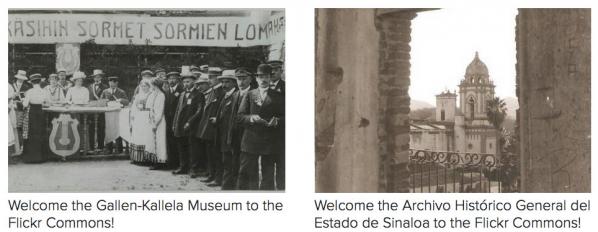
Template [http://template01.info/] is a graphic design studio established in 2014 and run by Marlon Harder and Lasse van den Bosch Christensen. Marlon studied graphic design as a bachelor at ArtEZ in Arnhem, the Netherlands, and Lasse did his bachelor studies in communication at Kolding School of Design, Denmark. They met during their master studies at Piet Zwart Institute in Rotterdam, the Netherlands. With their studio they both engage in research and client practice. Their research projects often relate to their own practice as designers. For example: how labour, especially digital labour, is in flux and how ‘fun’, playing and making friends are new ways to conceal this. Or how the idea of the creative individual seems omnipresent (everyone is a maker) and how digital ‘template-promoting’ tools are stimulating this tendency. However, they argue, instead of the promised individuality these tools generate a very bland sameness. In their client-based work, they do almost everything that relates to visual communication: from web programming to areas where digital translates into analogue (or the other way around), such as Automated books and the conversion of HTML to print.
Annet Dekker: Can you describe the project Pretty Old Pictures and in what way it represents a ‘new’ archive?
Template: With our project Pretty Old Pictures we are looking into the archive of Het Nieuwe Instituut. Along with many other institutions Het Nieuwe Instituut shares part of its image archive on Flickr Commons. This section of the photo-sharing platform Flickr hosts images with either none or unknown copyright restrictions. The interface of Flickr is extremely visually focused, often displaying an endless amount of imagery lacking any original context. We wanted to explore what potentially can happen to this rather overwhelming content. In a way, these images only exist in the present and attain meaning when a user starts working with them. As such, we believe the ‘present moment’ will very likely become more important in the future where content is extracted from archives and presented as single images unrelated to each other and seemingly without a past. Our intention is to print out specific selections of the images and sell them in nicely packaged bundles.

What were your intentions? What do you want to achieve?
As graphic designers we are fascinated with crowdsourcing platforms and what they stand for: the promise of creative empowerment. You spend four years in an art school learning a trade and then in the real world it is of course not easy to find work. You become part of a broader creative category and especially online there are numerous platforms that turn your trade and your livelihood into un- or underpaid competitions or games, albeit not always in an obvious way. Already at the Piet Zwart Institute [Media Design and Communication in Rotterdam] we became interested in this type of ‘crowd sourced graphic design.’ Take the example of 99Designs. 99Designs is a platform that organises competitions around specific design jobs. For a mere 250 dollars a client often has over 500 designs, made by hundreds of designers, to choose from. For a week we participated in 99 design competitions and made 99 designs that fitted the briefs. During the process we exhibited the designs together with the rejection letters – none of our designs were selected. Rather than being cynical about it, we sincerely wanted to follow this prescribed anticipation of 99Designs and see where it would lead us.
We were interested in how feasible it would be to make the designs, how many hours it would take and in return what our profit would be. Secondly, how much exposure it would generate and if it would broaden our network, which is a main motivation pushed on to designers using these platforms.
Similarly, we looked at other business models like Etsy that all have this same promise of generating an income for your ‘unique products’. When browsing their database it soon becomes apparent that the products are not unique; there even seems to be a very specific Etsy aesthetic. In the end, these platforms tell you more about a specific period in time than anything else. From these experiences we became interested in starting our own company to see how we could benefit from the trend. And then we saw all the content on Flickr Commons and how hardly anyone is using it in the way these other platforms are using content. We wanted to see how easy it would be to make a business out of it: to live the dream of creative entrepreneurs!
Basically we want to comprehend how these institutions are dealing with their digital archives, especially when publishing the content online. In the meantime we confront them with what could potentially happen. There are many possibilities, from selling to copying and changing the images. We want to investigate the consequences of those actions. For example, what does ‘open’ content mean, what are the consequences not only in terms of copyright, but also for the institute and its archival tasks. Are museums following a general trend or are they idealistic about spreading information, or both, and what does that mean in relation to traditional methods? More generally, what are the effects of a changing image culture with regard to new ways of dealing with decontextualized content, appropriation, or even the influence on cultural – and individual – memory? With this project we want to poke at all these issues by actually doing and setting up a business.
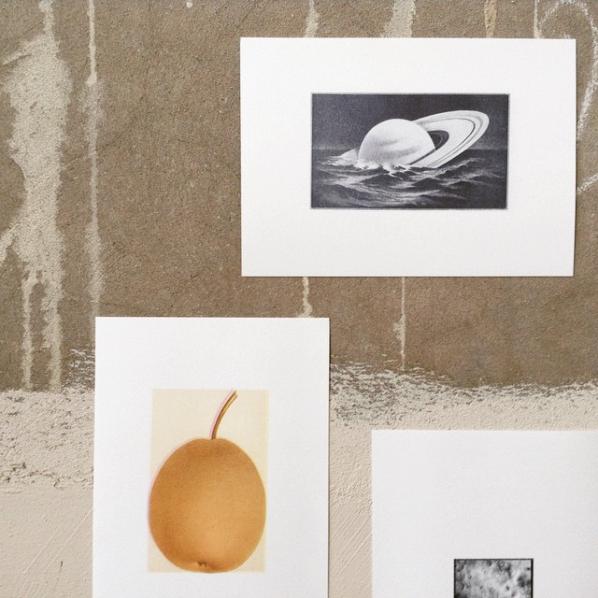
At the same time, we are interested in the influence of the online platform that is used. What happens when you give away content to a commercial business, which then becomes a co-owner of the material? This is not necessarily a new question, but it is becoming more urgent now that bigger platforms are offering these easy solutions. In a way it resembles the Google Books project in which many libraries and publishers gave away rights just to have their books digitised. These issues are far less resolved within Flickr Commons, or by those uploading – or downloading – the content. It all happens without people being truly aware of the consequences.
Why did you focus on Flickr Commons, rather then other large repositories, databases, or archives like, for example, Europeana?
We started looking at what sort of external databases and platforms Het Nieuwe Instituut is using, and found out that Flickr Commons is one of the more central, and definitely the biggest. Flickr Commons is interesting because of the promotion of public domain and ‘openness’, using guidelines on copyright that seem purposely unclear. Each image under Flickr Commons is tagged with ‘No known copyright restrictions’, meaning that either the image is in the public domain or that the author cannot be verified or found. Additionally each participating institution has its own rights statement, some of which loops back to the Flickr statement and therefore remains ambiguous or even contradictory. This leaves room for interpretation and opportunities from both Flickr as a platform but also other third parties, like us.
The interface of Flickr also caught our interest. Once you enter the website you see a vast amount of images, infinitely scrollable. Some museums have millions of images on Flickr, which is served up visually as an extremely fragmented image collage. Rather than offering the original context of an image, the system functions primarily through visual linking. That’s how a new context and meaning is made. Of course if you know what you are searching for and manage to type in the right search query you can get relevant results, but this will never match the expertise or human-provided knowledge that is found in a traditional archive. This is what we found fascinating when visiting the physical archive of Het Nieuwe Instituut, where the archivist explained all kinds of relations between documents, offering additional information that you would not necessarily be looking for. We realised what is missing in many online archives or databases right now, and more so in the future, since this kind of human knowledge, built up over time, does not transfer easily. Of course there are descriptions, categories, and keywords based on folksonomies on Flickr, but there are no stories – at least not yet.
Do you use specific criteria for the selections you make?
At first it was merely based on our own favourites. Now we are also looking more at things that are popular, that sell on platforms like Etsy. Often these are the regular things like nature, space, and architecture of course, but we are still testing. For Het Nieuwe Instituut and other institutes partaking in Flickr Commons, Pretty Old Pictures creates custom packages. These are sold in their museum shop, perhaps used as business gifts, merchandise or advertisements. Design-wise we grasp the DIY [Do It Yourself] spirit and this is essential for our strategy. For example, we make our own envelopes for the images we sell, which neatly transforms into an image-frame. They even smell of the laser cutter that we used.
There is such an overall emphasis on all kinds of retro trends, from old school barber haircuts and beards to riso prints on vintage book pages and moustaches on t-shirts. Trends we do not necessarily try to understand, but feed into our project. We are at the same time following the hype and trying to create hype: all in pursuit of a genuine creative business.
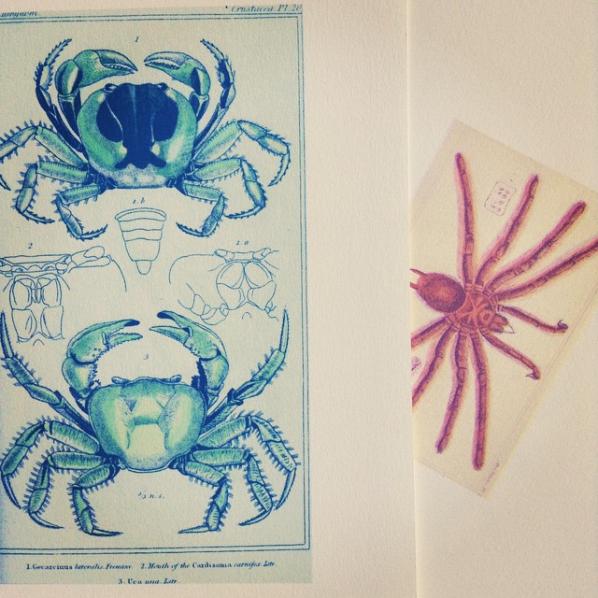
What is your relation to the material you selected? Is it ambivalent, or are you complicit – buying into the creative promise?
It is both. On the one hand we feel a bit ashamed, because at times it comes across as ripping someone off. On the other hand we are very excited about the project and looking forward to what may happen. There is a tension between these elements, which we also want to enforce and play with.
Your studio Template also seems to have two sides. On the one hand you make a critical nod to templates and on the other hand your work is about playing and using templates in slightly different ways. Similarly, an interface directs what you can do, and now you are building your own interface. You work seems rather paradoxical.
Yes, we use templates as topics for our research, but then we refuse to use them in our commercial projects. You know templates exist and it is really hard to avoid them. Because of their ease of use it is also completely understandable that people use them. It does not make sense to be completely negative about them. However, of course we like to be critical and subversive in our use of templates. Often the very limited possibilities or options of the template enhance the feeling of having made something. You created something original, that no one ever thought of or will do again. However, you created it within a framework that dictates what you can and cannot do. All these platforms and DIY mechanisms very much play on the assumptions of the importance of the original, the authentic and the individual. Essentially, these are still important beliefs in art traditions and our culture at large.
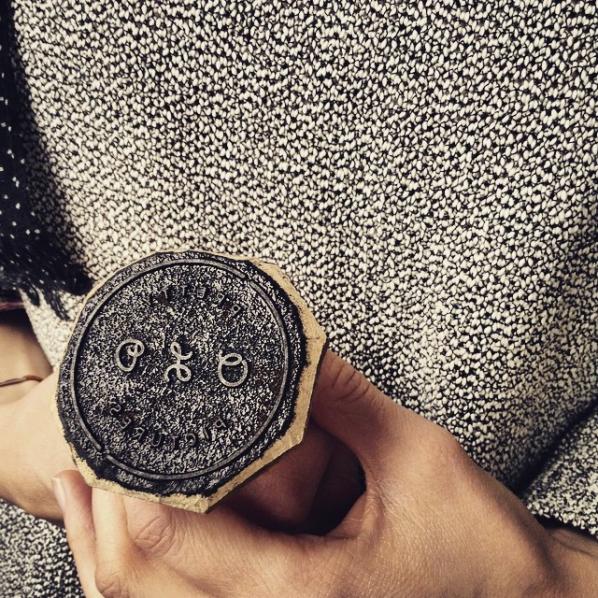
Most of these discussions also link to the debate on free labour; sometimes you feel in control when using all these readily available tools, but at the same time you are losing your power, because you are giving up the content and work that you create. We have no idea what 99Designs, for example, will do with the 99 designs that we made: they might sell them to different parties, use them to create new templates, or just delete them. Then again, communities get formed on platforms, and seeing other people’s work might in turn benefit you in some way or another. Some platforms even organise special lunch meetings, and the relationships between users have been known to outlive the platform itself. It is too easy to just be dismissive of it all.
Where is the breaking point for you; when will you, or the user, become more powerful than the other?
For us it is important that the design part of the project functions in the way it should. We want to create something that is convincing. In more general terms, it is important how people are addressed, what agency they get and how much freedom they have to use what they created in other ways or places. Of course the failures never receive any attention: the focus is on the success stories as they help promote the platform. That is the point where things start to derail. It may also go wrong when more obvious commercial stakes become apparent. For example, at a certain point Flickr started to sell images from its users licensed under the Creative Commons, causing a scandal amongst angry users who saw their content being commercially appropriated by Flickr. Likewise, we would also be very happy once we can sell the archive back to the organisation to which it belongs! Then again, we would just continue the cynical part of the project, which is not the most interesting part. It would be more interesting to discuss the situation the organisation has created for itself.

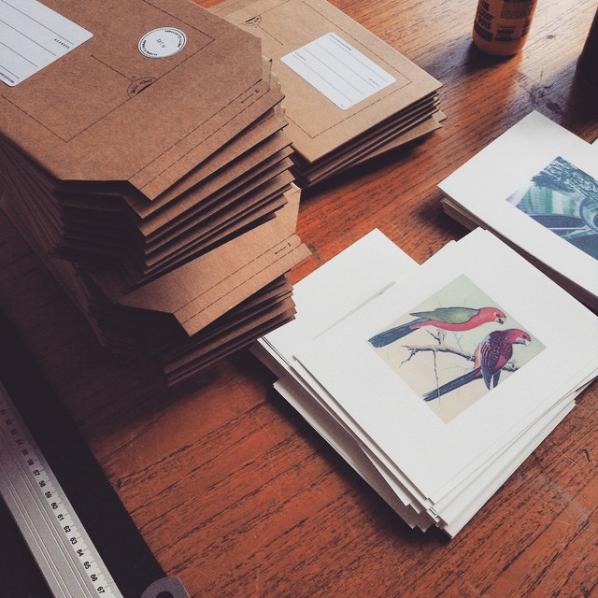
I am particularly interested in the idea of sharing and circulating images and other information that is made possible with Flickr Commons as a new form not just of distribution but perhaps also production – and archiving. In what way do you play with these kinds of mechanisms? Do you think it brings out a new potential in archiving?
These collections of images are open, so essentially you can do what you want; digital archiving is really made for interpretations. It demands a much more active role from its audience. They can provide context to the images without having to follow any rules. This would be unthinkable in a traditional archive. At the same time it brings up the question of what the role and function of an archive is. The relation to the past seems to disappear. It is only the present that counts, which is linked to the near future; the excitement of other people’s reactions and how they will respond. Most likely the two ‘archives’ will exist simultaneously, because at a certain point we will need to go back into history. The real question is how we will be able to return to the past in a digital archive, in which context is very scattered, and based of rapidly changing folksonomies rather than standardised categorisations.
In a way it could be argued that your project follows the same ideas as many creative industry start-ups: focusing on future business, economic models and sometimes even utopian perspectives. But at the same time, you work from the present, which may not be obvious to everyone, but is still very relevant as it is changing the way we deal with property, archives and memory.
One of the main things that is often missing in these discussions are the users: they are somewhere in the background, invisible. However, in this project we are replicating this system by focusing on the platform, and not necessarily the users. The physical archive of Het Nieuwe Instituut was a valuable experience for us. It became so clear that the knowledge the archivist possesses is unique and this kind of contextual information is hard to replace in a digital environment. Rather than trying to bring that into a digital environment we wanted to expose other layers, other ways of using and perhaps abusing the content that is void of context. Essentially today’s image culture is hard to grasp, it is partly steered by mechanisms and systems that are working in the back-end, which makes us use images in different ways. Archives are transforming from places where memories are kept to databases in which the present and near future are becoming more important. It is all about the now, presenting and sharing your, or other people’s images with friends and strangers alike. The context of an image is not important anymore; it is all about form and ease of distribution.
This, of course, throws up interesting questions: how do we relate to these images, how does this culture influence us, now and in terms of how we think about the past? Are we taking the image – and its content – for granted? In a way images – and perhaps archives – also become meaningless, or at least the importance shifts in favour of relations and communication between people. We tend to think that selections are still important: similar to the archivist we make selections that may seem random but the constraints generate meaning. Not necessarily the same ‘original’ meaning, but a selection brings something new, it makes people think in a different way about the images. Connections are thought of and narratives appear. Such creative thinking is of course easier with a selection of five than with hundreds of images. This new way of dealing with the content of the archive is no longer related to singular objects but meaning is generated through different constellations. Similar to oral culture, events and histories are now retold in different ways. As such it could be argued be that the (future) digital archive has more in common with oral traditions than with its paper version.
Pretty Old Pictures is commissioned by Het Nieuwe Instituut as part of their ongoing research ‘New Archive Interpretations’ (curated by Annet Dekker). For more information see http://archiefinterpretaties.hetnieuweinstituut.nl/en
Template are part of the exhibition: “Algorithmic Rubbish: Daring to Defy Misfortune” @ SMBA in Amsterdam, with Blast Theory, James Bridle, Constant Dullaart, Femke Herregraven, Jennifer Lyn Morone, Matthew Plummer-Fernandez, Template, Suzanne Treister. The show runs till 23 August with a final day discussion that includes Template and Constant Dullaart, moderated by Josephine Bosma. For more info: http://smba.nl/
Featured image: A is for Art, B is for Bullshit: A history of conceptual art for badasses, book by Guido Segni 2015
“Outside of the Internet there’s no glory” Miltos Manetas”
Guido Segni, is an Italian artist whose activity began in the fields of hacktivism and Net Art in the 90s. As part of his practice he questions the nature of identity that resides on the Web (acting under many fake identities, like Dedalus, Clemente Pestelli, Guy McMusker, Angela Merelli, Anna Adamolo, Guy The Bore, Umberto Stanca,Silvie Inb, Fosco Loiti Celant, Guru Miri Goro, Leslie Bleus, Luther Blissett) and the value of digital activity with projects like 15 Minutes, anonymous, and The middle finger response.
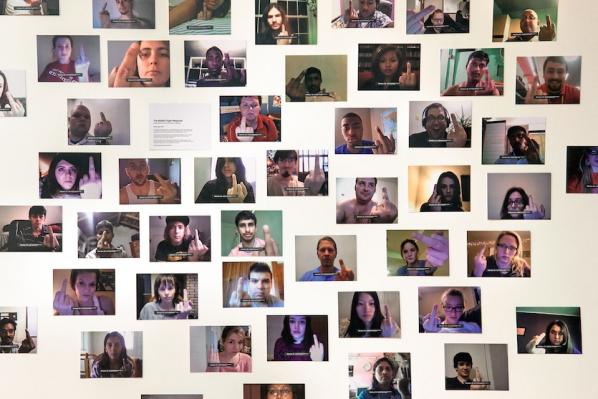
The Internet and lists are two things that have always been together, especially now many of us use social networking platorms such as Twitter and Facebook. We can’t track how and when the first “Top 25/10/5” appeared on the Web, but it’s for sure one of the most frequent ways to gain a lot of attention from Internet users, and it can make you feel as if you’re trapped in a never ending, online fast-food loop. However, when I found out that Guido Segni had created his own version of a top 25 list I was naturally intrigued, so I decided to ask him what it was all about.
Filippo Lorenzin: How and when did you start working on Top 25 Expiring Artists?
Guido Segni: It all started in 2013 after a discussion with Luca Leggero, an artist friend of mine who was working on a piece about the ephemerality of internet art pieces, and it stimulated in me many thoughts on the subject. In the beginning I just wanted to create a sort of memento mori, a list of all artists’ expiring websites. It was only a few months later I introduced the idea of it as a competition, transforming the work into an ironic top artists ranking list, based on the expiration date of their websites.
FL: Could you tell us how it works and how are artists ranked on the list?
GS: It works as many of the other ranking lists you can find on the web. The difference stands on the criteria. While many lists circulating on the web (Top 10 young artist to follow, Top 5 internet artist, etc) are often based on unintelligible criteria, in TEIA (Top Expiring Internet Artists) the criteria are as clear as useless and absurd: the whole list is in fact ordered by the expiration date of the artist website. The nearer is the website expiration date, the better ranking the artist website will obtain. It’s a democratic but very competitive race where everyone can reach the first position even if just for a day. Top 25 Expiring Artists is automagically updated every day – you can only see the top 25 but actually the project counts more than 50 artists. To be included in this list an artist just needs to make an email submission sending the URL of his/her/its website.
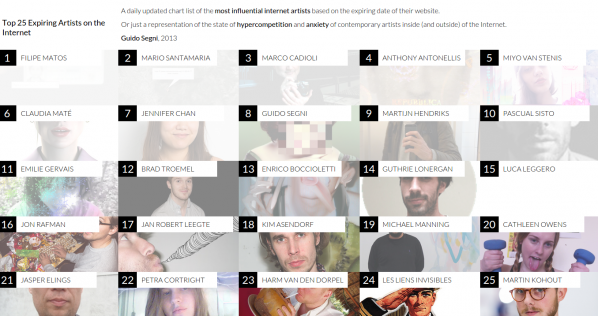
FL: This work has many interesting points to talk about, but I would start with lists-related questions. Does ranking artists on the basis of their aim to be not forgotten mean to highlight a typical behavior of all online users or does it specifically relate to web-based artists?
GS: Actually, the piece is mainly focused on web-based artists. Working with digital based technologies, I’ve always had to face the problem of ephemerality: every year I need to renew the subscription to the hosting service of the many website I own, I periodically have to upgrade the technical environment of my works and often I also need to recode them from scratch in order to keep them all working. That’s why I decided to transform this everyday battle with technology into an ironical and nonsense race for artists, aiming to survive to time.
FL: In the list there are only artists mostly interested in digital issues and I know most of them by person. I have even worked with some of them in previous years and this makes me quite comfortable, like if it was more a sort of reunion with old friends, rather than a competitive race. Is this part of the project or would you like it to be more harsh?
GS: Remember the list is a top 25 Internet artists, so it was natural for me when I started the project to choose the first group of artists mainly involved in digital issues. That said, apart from that memento mori feeling which I’ve discussed before, I was also interested in creating a believable and ironical representation “of the state of hypercompetition and anxiety of contemporary artists inside (and outside) of the Internet.” Probably it’s because I’m a nostalgic of the early days of the Internet – the period of the net utopia – but what I see today is more and more a rising feeling of egotism and selfishness. So what I tried to do is just to stress this contraposition between the brotherhood – what you call the reunion with old friends – and the competition, a perpetual struggle between peers for not being forgot.
FL: This project is ironic. You can say this just by seeing how you mimick aesthetic and text styles of online services like Klout or Google Rank. It seems to me that this is a recurring feature in your works – like in The Middle Finger Response. Is it true?
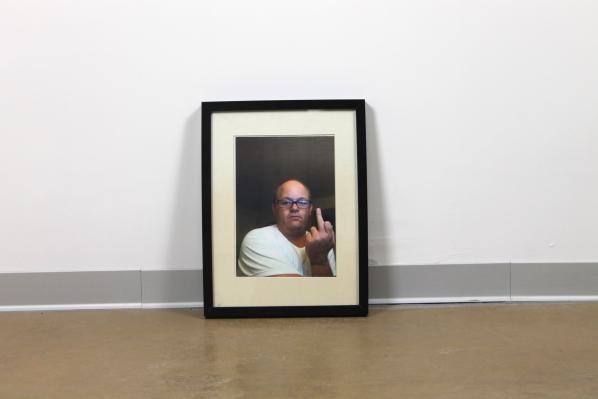
GS: It maybe depends on the fact that I’m from that particular area in Italy (Tuscany) where you can’t either take yourself too seriously. Or maybe it depends on the fact that irony itself is an important feature you can find over all the formats on the Internet. But I agree with you that willing or not the use of irony is a recurrent and strong component of my works.
FL: I’m interested in how people (me too, yes) sign to online services that promise them to rank their online lives on the base of their influence capacity. It’s like watching a mirror made on quantification premises, built by the same system that push you to post more and more about yourself and your incredibly unique existence. In which way this project is related to this phenomenon?
GS: The main intent of the project is to ridicule lists of any sort. But said that, I think the reason why lists – as a cultural form – are so popular is that they have the power to simplify the representation of complex phenomena of reality. So the various “Top artists to discover”, “Top 10 rock bands” or the “Most influential person in the world” are just examples of a fictious narration which give the apparent comprehension of the real. And this is particulary true in an over-polluted space like the Internet.
FL: In the brief conversation we had previously on Twitter, you said to me that you would like to make other versions of this project. Can you tell me something about this?
GS: I have many ideas about these new versions but unfortunately I’m a very slow man and I still don’t know how and when they will be released.
FL: You worked on the branding of people also with 15 Minutes, anonymous. Could you tell us if and how there is a connection between that work and Top 25 Expiring Artists?
GS: To be honest, at that time I hadn’t in mind these connections. From a certain point of view I think they are very different form each other, but it’s true that they both implicitly move around the concepts of fame and anonymity in opposite directions. While in Top 25 Expiring Artists the expire date is an ironic way to reach a sort of fame – even if only for a day – in the case of 15 Minutes, anonymous I focused on the algorithmic aspect of transforming a very large number of pictures of pop symbols into anonymous and abstract pictures.
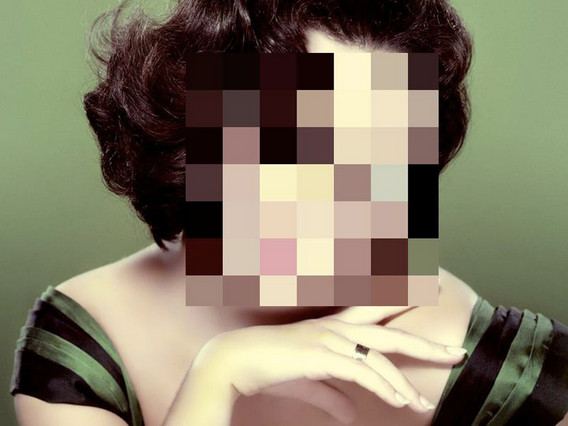



FL: Again, the anonymity and the individual are two of the main questions in your research. This happens also with Proof of existence of a cloud worker, and I recall me Middle Finger Response. What do you think?
GS: Between 2013 and 2014 I made several experiments with crowdsourcing and, yes, Proofs of existence of a cloud worker and Middle Finger Response have many points in common apart from that they are projects based on Amazon Mechanical Turk platform. Basically they both document and display what crowdsourcing is from the point of view of the workers dispersed through the new digital frontiers of leisure and labour. I think you got the point when you talked about anonymity and individual. As all the efforts of crowdsourcing platforms are to hide and anonymize the crowd, what I tried to do is to give them back a face and a voice. In The Middle Finger Response I focused on the spontaneous pose and gesture captured by the webcam, while in Proofs of existence of a cloud worker I used a more abstract and apparently nonsense approach as I asked them to re-enact a clip found on YouTube which shows a person claiming “Pics or it didn’t happen”.
FL: What will you be doing in the future?
GS: As I’ve already said I’m a very slow guy and I’ve been working on this particular project for almost 2 years. But I think we’re almost there and in a few months I’m going to release it. It’s a project about failures, datacenters, space/time travels and desertification of communications. Stay tuned 😉
Featured image: External Transformations: Roberta’s Construction Chart, No. 1,from the series Roberta Breitmore, 1974–78
Choose Your Muse is a new series of interviews where Marc Garrett asks emerging and established artists, curators, techies, hacktivists, activists and theorists; practising across the fields of art, technology and social change, how and what has inspired them, personally, artistically and culturally.
Lynn Hershman Leeson artist and filmmaker, who over the last three decades, has been internationally acclaimed for her pioneering use of new technologies and her investigations of issues that are now recognized as key to the working of our society: identity in a time of consumerism, privacy in a era of surveillance, interfacing of humans and machines, and the relationship between real and virtual worlds. Her work was featured in “A Bigger Splash: Painting After Performance” at the Tate Modern London in 2012 and a retrospective and catalogue are being planned for 2015 at the Zentrum fur Kunst Und Medientechnologie, Germany. Modern Art Oxford is hosting a major solo exhibition of her work Origins of a Species, Part 2, and it’s open until 9 August 2015.
Lynn Hershman Leeson released the ground-breaking documentary !Women Art Revolution in 2011. It has been screened at major museums internationally and named by the Museum of Modern Art as one of the three best documentaries of the year.
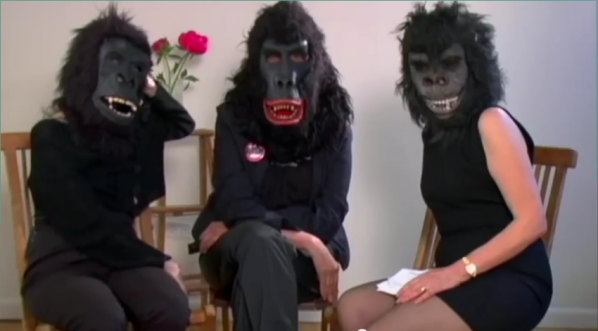
The image above is from !Women Art Revolution, which introduces the Guerilla Girls who draw attention to injustice and under-representation across artistic platforms and institutions. Several members discuss their origin story and modus operandi, including “the penis countdown. !Women Art Revolution won the first prize in 2012 at the festival in Montreal on Films on Art.
She also wrote, directed, produced and edited the feature films Strange Culture, Conceiving Ada, and Teknolust. All featured Tilda Swinton and were showcased at the Sundance Film Festival, Toronto International Film Festival and Berlin International Film Festival before being distributed internationally. After her retrospective, at CIVIC RADAR in December 2014, a bumper catalogue consiosting of 450 pages will be published in Oct 2015. Featuring writing by Peter Weibel, Laura Poitras, Tilda Swinton, Kristine Stiles, B Ruby Rich, Hou Hanru, Andreas Beitin, Peggy Phelan, Pamela Lee, Jeffrey Schnapp, kyle Stephan and Ingeborg Reichle. Civic Radar is now at Diechterhallen Falkenberg till November 19, 2015.
Marc Garrett: Could you tell us who has inspired you the most in your work and why?
Lynn Hershman Leeson: What has inspired me are people who work with courage to do original work that has a political and authentic ethic. These include, to name a few only, it seems a bit strange because naming them isolates these artists from the context of their contributions. But I have been inspired by Lee Miller, Mayakovsky, Tinguely, early Automata and so many more like Thomas Edison, Jules Etienne Marrey, even Cezanne. Early on I educated myself by copying works to get a sense of how particular artists formulated their language – the way Rembrandt used light, Leonardo’s draftsmanship and parallels he found between technology and science, Gauguin’s color reversals, Brecht, Breton and Duchamp’s ironic and iconic archetypal identities, Tadeauz Kantor, and Grotowsky’s extension of the frame.
Also younger artists (nearly everyone is) like Rafael Lezano Hemmer, particularly the work he is doing now in using facial recognition to locate kidnapped victims, Amy Siegal’s Providence, Janet Biggs, Annika Yi, Nonny de la Pena, Tania Bruguera, Ricardo Dominguez, and many many more.
![Lee Miller photographed women in fire masks in wartime London in 1944. [Source: Telegraph/Lee Miller Archives]](http://www.furtherfield.org/wp-content/uploads/2015/07/lee_miller_fire_masks_1944.jpg)
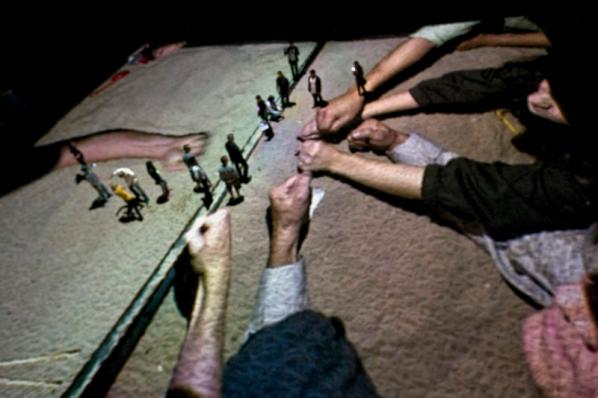
MG: How have they influenced your own practice and could you share with us some examples?
LHL: I think these examples added to my conceptual dimensional and historical overview which has been reflected in my practice. There are direct links also, like how the breathing machines and suicide machines relate to Tinguely, or how Roberta relates to Duchamp and Breton. But these are obvious and on the surface. The deeper perspectives embed themselves into the structure and architecture of the work. Political references like Civil Rights and The Feminist Movement are part of the core of the time I lived through and the resulting collage that is my work.
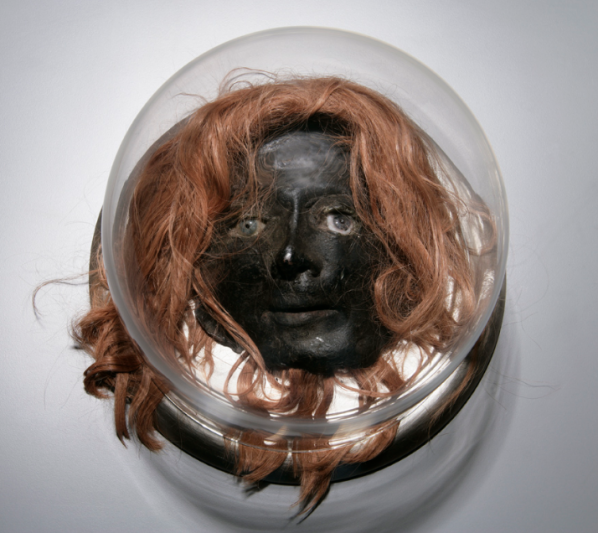
MG: How different is your work from your influences and what do you think the reasons for this are?
LHL: I think we all work in the time frame we are born into, and if we are lucky use the materials or invent the technologies to give presence and voice to the political gestures of that era. We cannot produce work from another era other than what we inhabit and really have to be in tune with the global framing of the tools and language invented during our life time.
MG: Is there something you’d like to change in the art world, or in fields of art, technology and social change; if so, what would it be? How would that happen?
LHL: Of course I would open up the process and systemic repressions, which would hopefully result in eradicating censorship, and the making more transparent the capitalistic underpinnings that are polluting access, value and visibility. In the 70’s, I did the first prison art project in San Quentin, and many early public art works geared toward social change, and it just required fortitude and clarity that resulted in breaking down systems of perceived values.
MG: Describe a real-life situation that inspired you and then describe a current idea or art work that has inspired you?
LHL: Well, hearing about Steve Kurtz’s predicament and the unfairness of it caused me to make the film Strange Culture. I personally experienced exclusion and rejection – as did many women, and that inspired !Women Art Revolution. I think work comes out of awareness of the situations of one’s time.
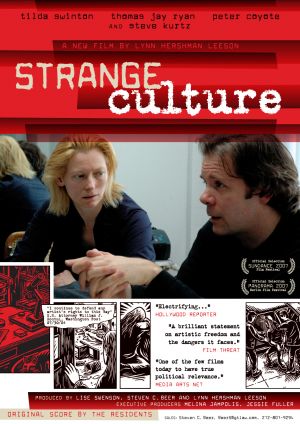
Steve Kurtz’s nightmare began on May 11, 2004, when he awoke to find his wife Hope dead of a heart attack. Police responding to his distressed 911 call became suspicious of scientific paraphernalia in his house (materials for an art project on genetically modified food) and contacted the FBI. Soon his world was turned upside down. Only hours after his wife’s tragic death he was suddenly a murder suspect, an accused bioterrorist, and a pariah to all but his closest friends.
The film is told through a unique blend of interviews, documentary footage, and reconstructed scenes starring Tilda Swinton, Thomas Jay Ryan, and Peter Coyote, Hershman’s critically-acclaimed film is a sophisticated, look at how the traumatic events of 9/11 altered American society and undermined its long-held values. [1]
MG: What’s the best piece of advice you can give to anyone thinking of starting up in the fields of art, technology and social change?
LHL: Stay true to your vision, forge ahead no matter what the obstacles are and keep your sense of humor.
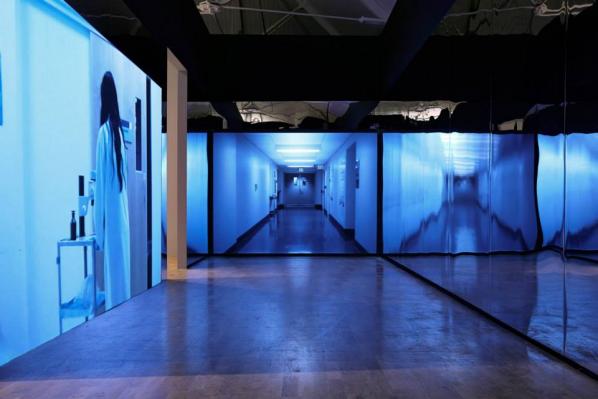
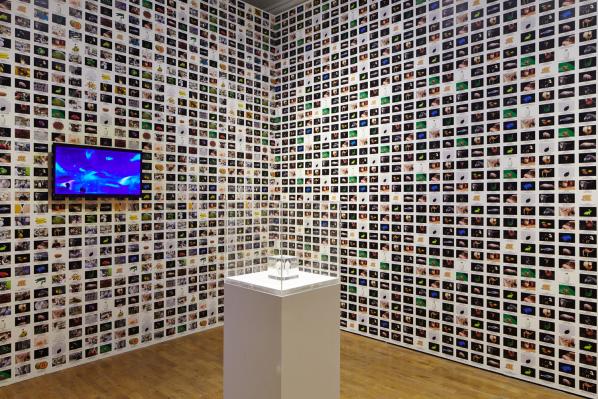
“Ms. Hershman Leeson continues to use art as an advance warning system in new work, developed with scientists, that focuses on, and participates in, the phenomenon of genetic manipulation. The show’s most recent piece is an installation of wallpaper made from images of hybrid animals, plants, and human limbs created through DNA manipulation, regenerative medicine and 3-D bio-printing. It looks great in the gallery, and like much of this artist’s work, it takes both ethics and aesthetics in ungraspable directions.”[2]
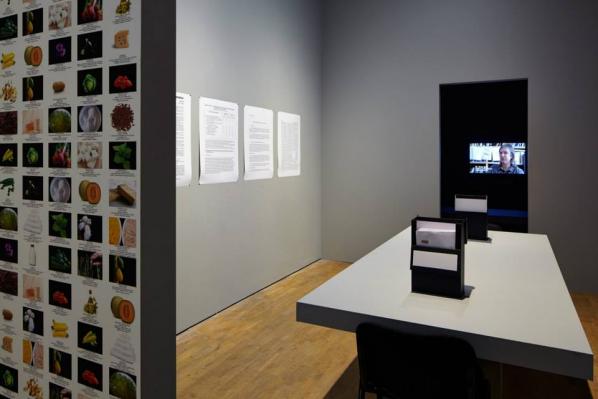
MG: Finally, could you recommend any reading materials or exhibitions past or present that you think would be great for the readers to view, and if so why?
LHL: The Art and Technology show in MdM at Salzburg, my exhibition and catalogue for The Burden of Guilt. The Electronic Super Highway and catalogue coming up at Whitechapel next year. Recommendations for catalogues: !War Graphic Novel, Marshal McLuhan, Rebecca Solnet’s River of Shadows, Edweard Muybridge and the Technological Wild, Kristine Stiles: States of Mind, Peter Weibel: The Global Contemporary and the Rise of the New Art World, and so many others. I also think for instance that James Watson’s Double Helix is beautifully written. So many possibilities for educating one’s self exist.
Structures. Something has been built, grown, stretched. Maybe skin, maybe a web, maybe a protective barrier – it is a plastic protein emitted by an organism in order to increase its survival opportunities, it is a food matrix for its offspring which thrive on glossy resin. You can travel across it and it can easily be mapped, although not by humans.
We can’t say anything about it – we can speculate everything about it. It is something possible or as the author says another reality. The real is replaced by the potential. This is one of a series of works by St. Petersburg-based artist Elena Romenkova. The works are glitches, abstract distortions, alien expressions of what for her is a subconscious realm.
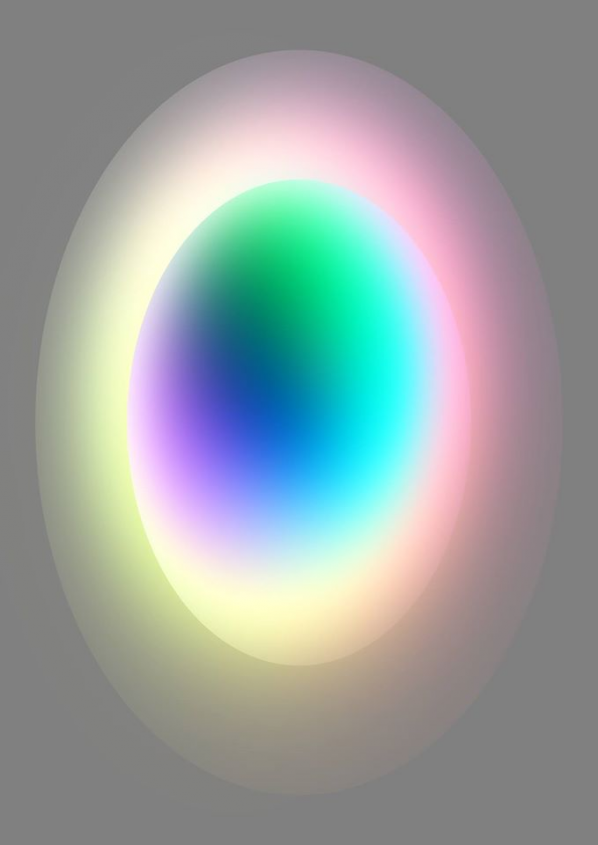
A portal. You are entering the rainbow world contained within two concentric eggs within the grey world. This is light, reflections, haze, indescription. It looks inviting. The colour spectrum is odd, the whites creep up on everything else, the shape of everything is strange. Basic synaesthetic rules are inapplicable at the rainbow/grey world junction.
There is nothing that this image, by French artist Francoise Apter (Ellectra Radikal), has in common with Romenkova’s. They are united only by their adherence to strangeness, a technically created vista that looks like nothing we know. A world not of local cultures, but of computational production. Here anyone can know anything, it doesn’t matter where you’re from.
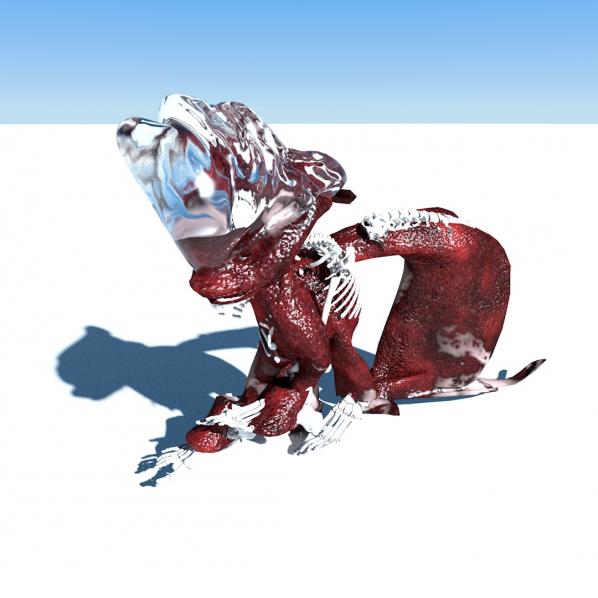
What is culture when locality is secondary to epistemology? What is knowledge when the portable device takes precedent over your situated environment? Worlds are built around us, sophisticated electrical spaces, they travel where we travel, and only after do we factor in the idiosyncracies of specific geography. If the banal experience is one of nomadic alienation, of search methods based on no place, what does the role of culture and art become? Everyday life is a subject for hypothetical language. The digital commons is a species of posthuman that communicates via speculative misunderstanding.
Korean artist Minhyun Cho (mentalcrusher) shows us what the dinosaurs really looked like. When you put the meat and scales back on. He shows us what an ice building being looks like in the shadow of terminal cartoon winter. How rubber can be used to erect sculptures and bones can be taken out of museums and put to good use in civic architecture. No one is around to see this, but still the idea sets a precedent. Crown each ghost with ice mountain prisms.
With visual language, very quickly we get to a stranger and more indeterminate range of science fiction possibilities than narrative tends to map out for us. How much imagination is possible, and how much does our internal experience match anything presented around us. If our environments advance exponentially quicker than any generational or traditional mythology, what sort of language can we have for expression? The maker’s invention precedes the reception of form. Innovation is a matter of banal activity, communicating an experience of the real which is never the same.
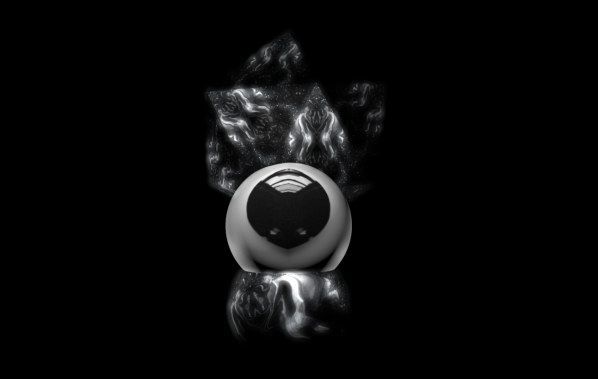
And now an eyeball. Triangles. A vessel. To Cho’s blinding world of light, Spanish artist Leticia Sampedro responds with a featureless darkness. All absurdities once on display, now they recede into nothing. It might be a mandala, perhaps an artifact from the ancient future, a portable panopticon that fits conveniently on your desktop. Your feelings are here, your peculiar distances, everything’s reflecting off the glass, the metal, the camera. You are the mirrored fragments of an invention we’ve lost the blueprints to. Foresight the womb of a disembodied politics of community.
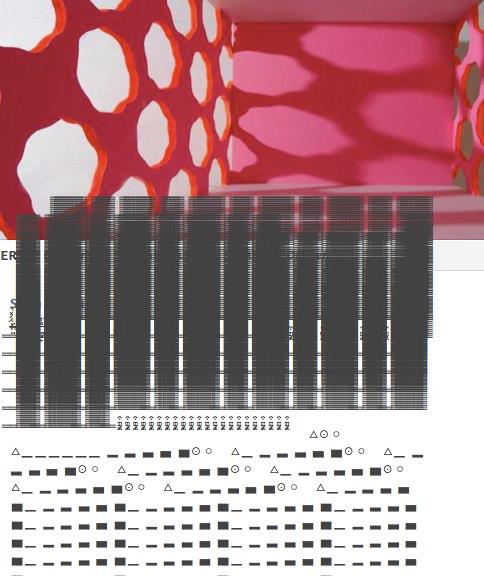
Community held together by structures. In German artist Silke Kuhar‘s (ZIL) work, we enter into one of these structures. Inside we find hallways, a nice selection of windows and all kinds of data – scripted, graphed, symbolized. This is the plan for the future. I hope you can read what it says. Her work meshes spaces with collapsing foreign constructs – if we can just read the language we’ll know what to do. But no one reads it, and no one wrote it. This is a building without inhabitants – architecture without people. Democratic ballots are automatically filled out by a predetermined algorithm. Your agency is a speculative proposition for popular media – people collaborate with you, but they can’t be sure where you are, when you wrote, and if you really exist as such.
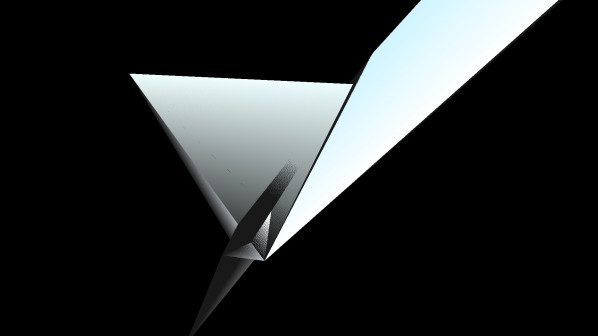
No people. This is a unifying principle. Cold, silver, streams. Machines in the sky. Silicon waterfalls, diagonal. Civilization distilled into physical patterns, an obtuse object photographed in another dimension. What is the word for reality again. What is the word for scientific investigation? A Venezuelan based in Paris, Maggy Almao’s abstract glitch world is silent – it’s a gradient, it’s some illusion of partial perspective.
What is the language to talk about the world? If we turn to artists’ visualizations, what does that tell us about languages we speak, and ones we read? What does the graphing of incomprehensible mechanisms tell us in turn about art and its history? The machine’s narratives tend to drown out any functional reality. Genre storytelling tropes become repurposed as collective cultural ideas. Conceptual works are followed by pragmatic speculation, medium-centric analysis replaced by experimental failures. You can never get a fictional experiment to work.
Science has indelibly entered the art field, for each of its medial innovations it requires further attention in terms of its technical makeup. Half the work is figuring out what the canvas even is, we are building canvases, none of them look alike, and their stories read like data manuals. An aesthetics of unknown information.

This is the homeland. The homeland is mobile and has many purple bubbles. It’s an airship from the blob version of the Final Fantasy series. It has satellite TV to keep in touch with the world. It has some tall buildings so you know it’s civilized. It is part of Giselle Zatonyl, an Argentine-born Brooklyn-based artist’s opus which deals comprehensively with science fiction ideas and their implications.
The ship travels, where the culture originates is more and more unknown. It is technically divided, access is the key, we can worry about language and culture later. We are still embodied, still located somewhere, but all this has become subject to the trampling of scientific mythologies, where their utilities might go, and where their toys are most needed. Crisis is a genre now, about as popular as time travel. You are now free to dream up whatever future society you wish, and subjugate whatever cyborg proletariat your heart desires. In the realm of speculation, anything is possible, and nothing is fully acceptable.
The themes of internet art production give us some language, some set of visions that tell certain stories – works found throughout the internet, posted in communities, shared online – sometimes part of gallery exhibitions or products, sometimes not. You get a profile, some social media pages, build a website, you begin making, sharing and remixing images. Folk art is a subsidiary of new media art – social sculpture meets internet content management systems. A language for political engagement based on the creative activity of speculation. Scientific dreams for a technological commons.

Dreams where sight is physicalized into complex data graphs. Where Sampedro’s portable gelatin panopticon is cloned into a regularized matrix. Inspired vision is just one aspect of algorithmic predictability. In Taiwanese artist Lidia Pluchinotta‘s visual work, the cloned image is central. Mechanical reproduction, skulls, spirals, symbols, the internet has it all. Civic participation has never been so mathematical, observation never so multiple.
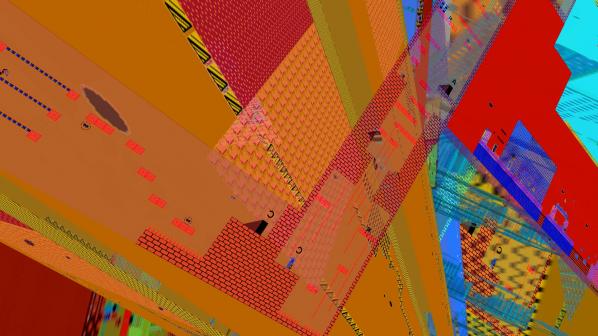
Inside the city, architecture is actually a colour-coded map that helps you find the store you’re looking for. The map is the territory except there’s no info on how to read it. We are here, we are home, but the walls of the buildings were designed by some specialist that we haven’t met yet. Stairs, depths, the complex and layered constructions in Canadian artist Carrie Gates‘ work aren’t quite one of Zatonyl’s buildings. More fragmented, more saturated, more chaotic. It’s speculated that people could live here, although we don’t see them anywhere. Not yet anyway.
The maelstrom of technological progress presents us with the need to adapt our participation and rhetoric accordingly. Science fiction is a folk language for common experience within a technoscientifically oriented world. These images are imaginative products of social and participatory artist communities who, when marrying the personal and contextual, create speculative objects of general strangeness. Their description is nothing less that one of alien entities – alien entities that are everywhere. Earth is the most sophisticated foreign planet we’ve yet to invent, we just need to discover how to populate it.
Choose Your Muse is a new series of interviews where Marc Garrett asks emerging and established artists, curators, techies, hacktivists, activists and theorists; practising across the fields of art, technology and social change, how and what has inspired them, personally, artistically and culturally.
Jeremy Bailey is a Toronto based Famous New Media Artist. Recent projects include performances for Rhizome’s Seven on Seven in New York, The Stedelijk Museum in Amsterdam and Tate Liverpool. Recent exhibitions include solo exhibitions at Transmediale in Berlin, and group exhibitions at Mediamatic in Amsterdam, Museums Quartier in Vienna and Balice Hertling in Paris. Recent commissions include projects for FACT in Liverpool, Turner Contemporary in Margate UK, and The New Museum in New York.
Marc Garrett: Could you tell us who has inspired you the most in your work and why?
Jeremy Bailey: Many have inspired my work but likely the most inspiring has been Canadian video performance artist Colin Campbell. He introduced me to video art and video art history as a young university student in Toronto. He made work that was funny, that lampooned the art world and somehow also made art more relevant to my young eyes. Looking back much of what I aspire to do today is directly reflective of what Colin exposed me to so early on.
MG: How have they influenced your own practice and could you share with us some examples?
JB: Absolutely, in my own work I’m often self deprecatingly self reflective of the absurd circumstances and pathos of a new media artist eking out a career against all odds.
One of my all time favourite videos by Colin Campbell is Sackville I’m Yours, in it he plays a small town art celebrity named “Art Star” who conducts a hilariously pathetic mock interview of himself.
https://www.youtube.com/watch?v=oKEzRWgih78
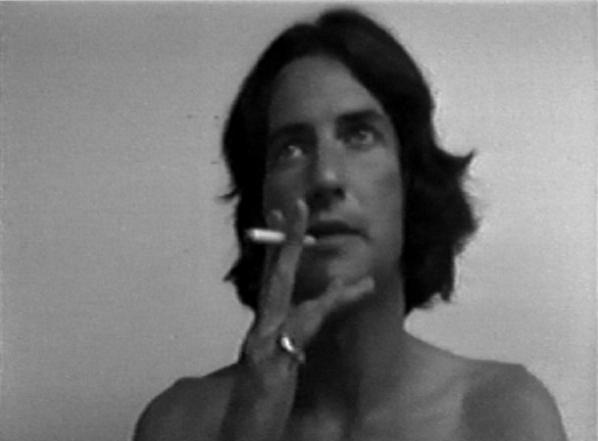
MG: How different is your work from your influences and what are the reasons for this?
JB: My video performance work differs from Colin’s because it was created as video for the Internet where his work was created in the 70s, 80s and 90s, a time where all video ended up on a TV monitor. This is an important distinction, because a lot of early video art was positioned in dialogue with the history of television. The personal narrative, the idea of a non celebrity on TV, that was a new idea. In contrast the Internet was designed from the very beginning to be accessible platform for self expression and distribution. Growing up with the Internet I can remember always feeling like anyone could be famous. No matter how niche or weird you were there was always an audience on the internet. Before I was an artist I was actually known online as a skin designer. Skins were these custom interfaces you could add to your software, usually music software, to make it your own. You can still see my skin designs from that era here http://sblcommunications.com/jbd/
MG: Is there something you’d like to change in the art world, or in fields of art, technology and social change; if so, what would it be?
JB: Yes, I’d like art to reflect positive social change instead of reflecting negative market demands. Artists have this tremendous ability and power to communicate and many are wasting that talent pandering to the decorating desires of the rich and powerful. I understand that everyone needs to make a living, but we also have a responsibility as artists to help make the world a better place. I also don’t see why these two things need to be in conflict.
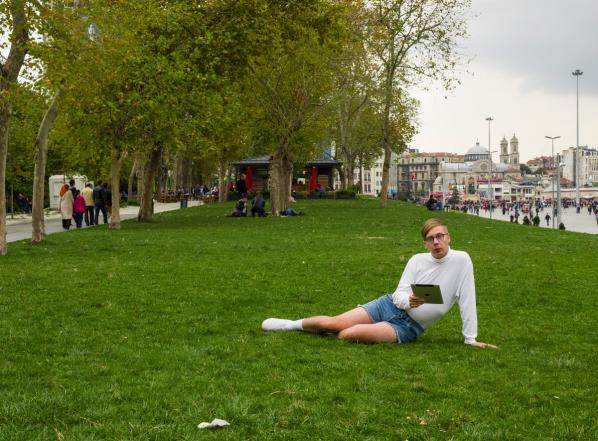
Above image from The You Museum. It was “conceived of in Istanbul during a memorable residency at The Moving Museum that resulted in an exhibition you can read a review of here. The You Museum was inspired by Istanbul’s Gezi Park protests, and the ongoing debates and conflations of public and private entities and spaces in Turkey and abroad (notably by organizations such as the NSA)”
MG: Describe a real-life situation that inspired you and then describe a current idea or art work that has inspired you?
JB: Nearly all of my work is inspired by real life, I often reflect my actual circumstance in my work. My process usually involves searching for a problem and then satirically using technology to solve it poorly. In doing this I usually uncover other problems that run deeper than the initial surface issues. For example I was once invited to do a residency in an impoverished town in the Ukraine where I discovered an unpopular but bureaucratically permanent statue of Stalin in the town square. To help solve the problem of a permanent and unpopular statue I created software that allowed anyone to easily create their own wearable public sculpture that they could change anytime by screaming. This admitedly pathetic solution allowed me to navigate a number of other issues, everything from my family history to the role of art in relation to capital to the subjectivity of historical document. I’m always feeding off and reflecting the world around me. Reality is so much crazier and more interesting than anything I could invent.
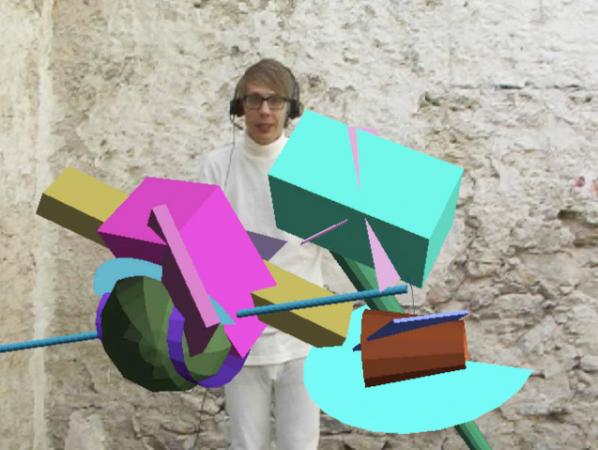
MG: What’s the best piece of advice you can give to anyone thinking of starting up in the fields of art, technology and social change?
JB: This one is obvious, but hard to follow. Don’t be afraid to fail. Failing will help you learn and grow to be a better artist tomorrow. No one ever remembers your failures as well as you do – especially when your new work is good.
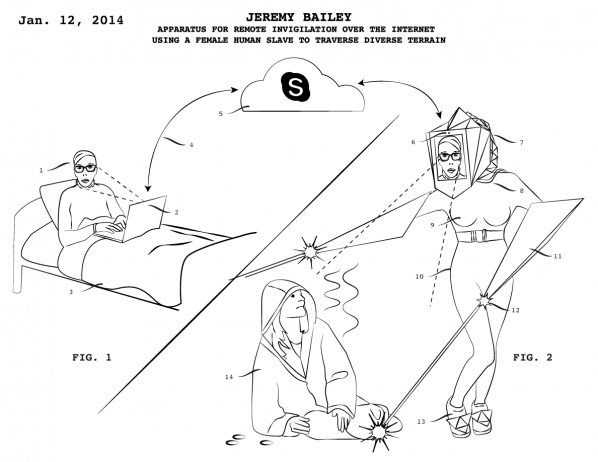
MG: Finally, could you recommend any reading materials or exhibitions past or present that you think would be great for the readers to view, and if so why?
JB: I’m reading a book today called To Save Everything Click Here by Evegeny Morozov about our culture’s obsession with technology as a go to solution for the world’s problems. Most of my work is about this very human hope that someone else has solved or will solve our problems, and many of us believe those people work in technology companies. That’s simply not true. In the book Morozov coins the term Solutionism to describe this mentality. Much of my own work could be called solutionist satire I guess, but the bottom line is we’re all capable of being a part of the solution, of making the world around us better. Ideology, good ideas, have done more to change our world for the better than any technology ever will.

Those were the words I noticed when interviewing Augmented World Expo organizer Ori Inbar several days before AWE2015, the trade show of Augmented and Virtual Reality. “We’re not in beta anymore…” Inbar said, “We now have companies implementing enterprise-scale Augmented Reality solutions, and with coming products like the Meta One and Microsoft HoloLens, the consumer market is being lined up as well.” With the addition of the UploadVR summit to AWE2015 the event was a blitz of ideas, technologies and new hardware.
AWE/Upload is a trade and industry event that also includes coverage of the arts and related cultural effects, although it is smaller when compared to the industrial aspect of the show. In this way it is similar to SIGGRAPH and this is much of my rationale for covering this, and also SIGGRAPH later this year? Doing so is as simple as McLuhan’s axiom of “The Medium is the Message” or, better yet, examining how developers and industry shape the technologies and cultural frameworks from which the artforms using these techniques emerge. The issue is that in examining emerging technologies we can not only get an idea of near-future design fictions but also the emerging culture embedded within it.
To put things in perspective, Augmented Reality art is not new, as groups like Manifest.AR have already nearly come and gone and my own group in Second Life, Second Front, is in its ninth year. Even though media artists are frequently early technology adopters, what appears to be happening at the larger scale is a critical mass that signals the acceptance of these new technologies by a larger audience. But with all emerging technologies there is drama driven by those industries’ growing pains. For AR & VR the last two years have certainly been tumultuous.
Last year’s acquisition of Oculus Rift by Facebook sent ripples through the technology community. Fortunately, unlike my upcoming example, the buyout did not eliminate the Rift from the landscape; instead it gained venture capital allowing for licensing of the technology for products like the Sony Gear VR. Also the current design fictions being distributed by Microsoft for its Hololens give tantalizing glimpses of a future “Internet of No Things” full of virtual televisions and even ghostly laptops. This was suggested in a workshop by company Meta and the short film “Sight”, in which things like televisions, clocks, and objective art might soon be the function of the visor.
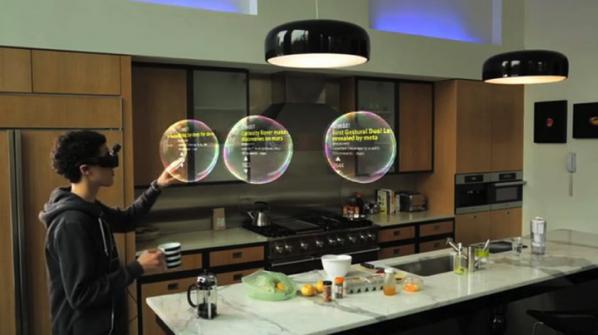
However disruptive events also happen in the evolution of technologies and their cultures. The news was that scant weeks before the conference a leading Augmented Reality Platform, Metaio, was purchased by Apple. Unlike the transparency and expansion experienced by Oculus the Mataio site merely said that no new products were being sold and cloud support would cease by December 15th. In my conversation with conference organizer Ori Inbar we agreed that this was not unexpected as Apple has been acquiring AR technologies, which has been related in rumors of “the crazy thing Apple’s been working on…”; But what was surprising was the almost immediate blackout, part of the subject of my concurrent article “Beware of the Stacks”. For entrepreneurs and cultural producers alike there is a message: Be careful of the tools you use, or your artwork (or company) could suddenly falter in days beyond your control. Imagine a painting suddenly disintegrating because a company bought out the technology of linseed oil. Although this is a poor metaphor, technological artists are dependent on technology and one can see digital media arts’ conservative reliance on Jurassic technologies like Animated GIFs for its long-term viability, but to go further I risk digression.
Another remarkable phenomenon this year was the near-assumption of the handheld as a experience device, and their use seemed almost invisible this year. What was evident was a proliferation of largely untethered headsets, ranging from the Phone-holding Google Cardboard to the Snapdragon-powered (and hot) ODG Android headset, boasting 30-degree field of view and the elimination of visible pixels. In the middle is the tethered, powerful Meta One headset with robust hand gesture recognition. Add in the conspicuously absent Microsoft Hololens and the popular design fictions of object and face recognition are emerging.
That is unless you are a brave early adopter, developer, or enterprise client. The fact that there was an entire Enterprise track and Daqri’s release of an AR-equipped construction/logistics helmet made it clear that the consumer market, much more prevalent last year, has clearly been placed in the long-term. For now, consumer/artistic AR is largely confined to the handheld device, as experienced through Will Pappenheimer’s “Proxy” at the Whitney Museum of American Art or Crayola’s “4D coloring books” in which certain colors serve as AR markers. This isn’t necessarily a bad thing, as an audience is likely to have a device that can run your app through which they can experience the art. As an aside, this is the reason why I chose to use handhelds for my tapestry work – imagine trying to experience a 21’ tapestry with a desktop using a 6’ cord! At this point, clarity and function, both partially dependent on computer power, have created a continuum from strapping your iPhone to your forehead like a jury-rigged Oculus for under $50, to potentially using a messenger bag with the Meta at $512, to the expensive ($2750), hot, but elegant ODG glasses you might try on if you visit the International Space Station.
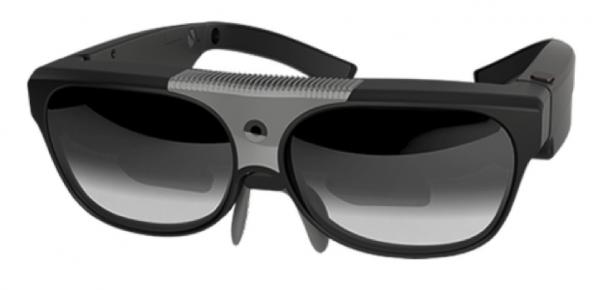
While discussing the general shape of technology gives a context for its content and application, a media tool is often only as good as its app. Without meaning to show favoritism, Mark Skwarek’s NYU Lab team has been going outstanding work from a visualization of upcoming architectural developments to a surprising proof of concept for a landmine detection system, which I thought was amazing. Equally innovative was the VA-ST structured light headset for the visually impaired, which has several modes for different modes of contrast. These alternate methods not only was surprising in terms of application and possible creative uses but also changed my perception of AR as possessing photorealistic, stereoscopic overlays.
Other novel applications included National Geographic’s AR jigsaw puzzle sets, of which I saw the one outlining the history of Dynastic Egypt. I felt that if I were a kid, building the puzzle and then exploring it with AR would seem magical. There are other entertainment and experimentation platforms coming online like Skwarek, et al’s “PlayAR” AR environmental gaming system. But one platform I want to hold accountable for still being in late beta is the” LyteShot” AR laser tag system, which got an Auggie Award this year. My pleasure in the system is that the “gun” per se is Arduino-based, meaning that it could be a maker’s heaven. It uses the excellent mid-priced Epson headset, but at this time it is used primarily for status updates although there is a difference between AR and a heads-up display. So, from this perspective, it means that there are some great platforms getting into the market that are highly entertaining and innovative, but there are a few bugs to work out.
For the past thousand words or so I have been talking about the industry and applications of AR, but for me, my “soul”, if you will, set on fire during the “idea” panels and keynotes. For example, on the first day, Steve Mann, Ryan Janzen and the group at Meta had a workshop to teach attendees how to make “Veillometers” (or pixel-stick like devices to map out the infrared fields of view of surveillance cameras. Mann, famous for creating the Wearable Computing Lab at MIT and being Senior Researcher at Meta, still seemed five years ahead of the pack, which was refreshing. Another inspirational talk was given by one of the progenitors of the field, and inaugural Auggie Award for Lifetime Achievement, Tom Furness. His reflection on the history of extended reality, and his time in the US Air Force developing heads-up AR was fascinating. But what was most inspirational is that now that he is working on humane uses for augmentation systems such as warping the viewfield to assist people with Macular Degeneration. This, in my opinion, is the real potential of these technologies. In fact this array of keynotes was incredible, with Mann, Furness, the iconic HITLab’s Mark Billinghurst, and science fiction writer David Brin, (who comes off near-Libertarian) gave vast food for thought.
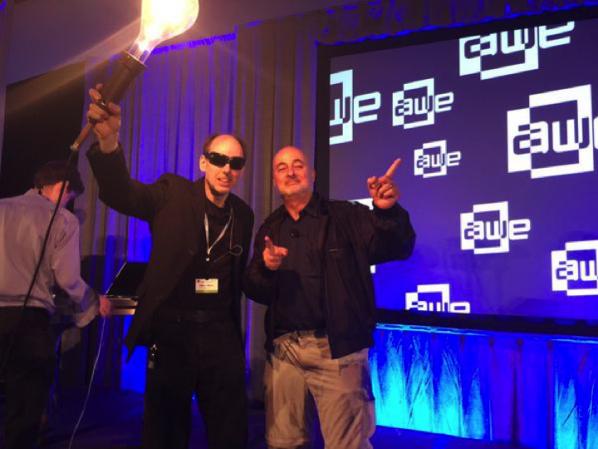
Every year, the Augmented World Expo gives out the “Auggie” awards for achievements in technology, art, and innovation in AR. I think it should be noted that the Auggie is probably the world’s most unique trophy, consisting of a bust that is half naked skull and half fleshed head with a Borg-like lens with baleful eye wired into that head. The Auggie is another aspect of AWE that signals that the world of Reality media is still a bit Wild West.
There are several categories from Enterprise Application to Game/Toy (LyteShot having won this year), and many of them are largely of interest strictly to developers. For example, the fact that Qualcomm’s Vuforia development environment won three years in a row gives hint to its stability in the market, and Lowe’s HoloRoom is a wonderfully strange mix between Star Trek and Home Improvement. The headset winner was CastAR, a projective/reflective technology where polarized projectors were in the headset instead of cameras, which worked amazingly well. The other winners were gratifyingly humane applications such as Child MRI Evaluation and Next for Nigeria (Best Campaign). The prizes impressed on me that the community, or part of it, “got it” in terms of the potential of AR to help the human condition, which is perhaps a “superpower” that the conference framed itself under.
Being that I am writing this for an art community it would be of interest to know where the art was in all of this. The Auggies have an Art category, as well as a gala between the end of the trade show events and the Auggie Awards. The pleasant part about AWE’s nominations for the best in AR art is that those works have integrity. Manifest.AR regular Sander Veerhof was nominated for his “Autocue”, where people with two mobile devices in a car can become the characters of famous driving dialogues (“Blues Brothers”, “Pulp Fiction”, “Harold and Kumar”). Octagon’s “History of London” is reminiscent of the National Geographic puzzles, except with far greater depth. Anita Yustisia’s beautiful “Circle of Life” paintings that were reactive to markers were on display in the auditorium but, besides a Twitter cloud and a Kinect-driven installation, the art was swamped by the size of the auditorium.
The winner of the art Auggie, Heavy & Re+Public’s’ “Consumption Cycle”, (which this writer saw at South by Southwest Interactive) was a baroquely detailed building sized mural of machinery and virtual television sets. I feel a bit of ambivalence about this work, as Heavy’s work tends to rely on spectacle. Of the lot I felt it did deserve the Auggie, purely for its execution and the effective use of spectacle. But with the emerging abilities of menuing, gesture recognition, and so on, I felt that last year’s winner, Darf Designs’ “Hermaton”, employed the potentials for AR as installation in a way that was more specific to the medium.
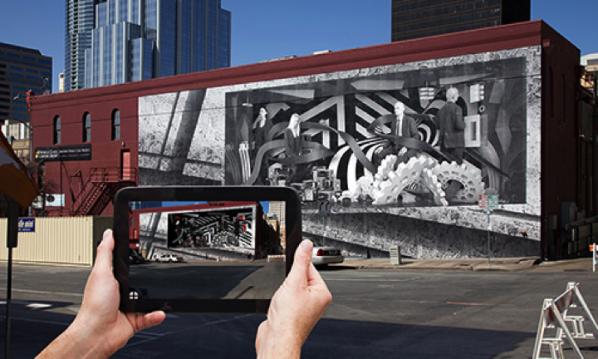
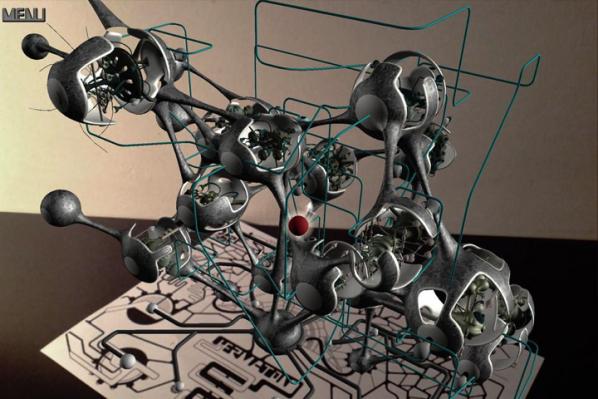
Yes, but it was in a much smaller area than the AR displays. There were standout technologies, like the Chinese Kickstarter-funded FOVE eye-tracking VR visor, a sensor to deliver directional sound, and Ricoh’s cute 360 degree immersive video camera. The Best in Show Auggie actually went to a VR installation, Mindride’s “Airflow”, where you are literally in a flying sling with an Oculus Rift headset. Although a little cumbersome, it was as close to the flying game in the AR design fiction short, “Sight”. So, in a way, the ideas of near-future design and beta revision culture are still driving technology as surely as the PADD on Star Trek presaged the iPad.
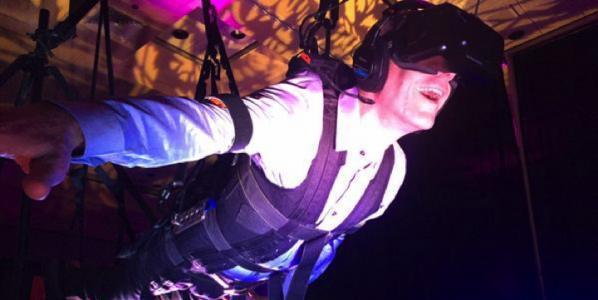
This year’s AWE/UploadVR event showed that reality technology is emerging strongly at the enterprise level and it’s merely a matter of time before it hits consumer culture, but it’s my contention that we’re 2-4 years out unless there’s a game changer like the Oculus for AR or if the Meta or ODG get a killer app, which is entirely possible. So, as the festival’s tagline suggests, are we ready for Superpowers for the People? It seems like we’re almost there but, like Tony Stark in the beginning, we’re still learning to operate the Iron Man suit, sort of banging around the lab.
Choose Your Muse is a new series of interviews where Marc Garrett asks emerging and established artists, curators, techies, hacktivists, activists and theorists; practising across the fields of art, technology and social change, how and what has inspired them, personally, artistically and culturally.
Since 1989, Igor Štromajer aka Intima has shown his media art work at more than a 130 exhibitions, festivals and biennials in 60 countries. His work has been exhibited and presented at the transmediale, ISEA, EMAF, SIGGRAPH, Ars Electronica Futurelab, V2_, IMPAKT, CYNETART, Manifesta, FILE, Stuttgarter Filmwinter, Hamburg Kunsthalle, ARCO, Microwave, Banff Centre, Les Rencontres Internationales and in numerous other galleries and museums worldwide. His works are included in the permanent collections of the Centre Pompidou in Paris, the MNCA Reina Sofía in Madrid, Moderna galerija in Ljubljana, Computer Fine Arts in New York, and UGM.
Available as:
– PDF file 0sn-3iexfemiat.pdf (2.7 MB, 206 A4 pages)
– EPUB file 0sn-3iexfemiat.epub (884 kB); Open eBook Publication Structure (Kobo etc)
– mobi file 0sn-3iexfemiat_mobi.zip (994 kB); Kindle (3 files: mobi, apnx, mbp)
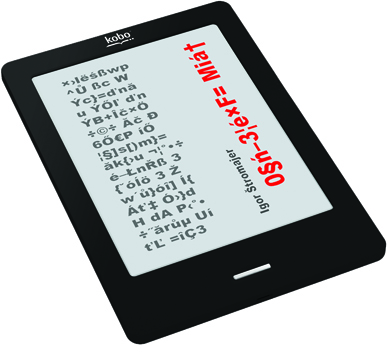
Marc Garrett: Could you tell us who has inspired you the most in your work and why?
Igor Štromajer:Ajda Likar, Aleksandra Domanović, Alexei Shulgin, Ana Isaković, Andy Warhol, Angela Washko, Anne Magle, Anne Roquigny, Annie Abrahams, Annika Scharm, Antonin Artaud, Aphra Tesla, Bertolt Brecht, Bojana Kunst, Brane Zorman, Brigitte Lahaie, Carolee Schneemann, Chantal Michel, Charlotte Steibenhoff, Curt Cloninger, Diamanda Galás, Dirk Paesmans, Dragan Živadinov, Falk Grieffenhagen, Florian Schneider, Fritz Hilpert, Gabriel Delgado-López, Georges Bataille, Gertrude Stein, Gianna Michaels, Gina Spalmare, Gretta Louw, Henning Schmitz, Ida Hiršenfelder, Immanuel Kant, Italo Calvino, Ivan Jani Novak, James Joyce, Jerzy Grotowski, Jim Punk, Joan Heemskerk, Johann Sebastian Bach, John Cage, John Lennon, Jorg Immendorff, Josephine Bosma, Judith Malina, Julian Beck, Karl Marx, Karlheinz Stockhausen, Kazimir Malevich, Lars von Trier, Laurie Anderson, Laurie Bellanca, Lucille Calmel, Ludwig Wittgenstein, Luka Prinčič, Marcel Duchamp, Margarida Carvalho, Maria Winterhalter, Marie-Sophie Morel, Marina Tsvetaeva, Marisa Olson, Marjana Harcet, Marko Peljhan, Martine Neddam, Matjaž Berger, Minu Kjuder, Morena Fortuna, Nam June Paik, Nana Milčinski, Netochka Nezvanova, Nika Ločniškar, Olia Lialina, Peter Luining, Philip Glass, Ralf Hütter, Robert Görl, Robert Sakrowski, Robert Wilson, Robin Dunbar, Ronnie Sluik, Sergei Eisenstein, Simone de Beauvoir, Srečko Kosovel, Stanisław Ignacy Witkiewicz, Stanley Kubrick, Suvi Solkio, Thor Magnusson, Ulrike Susanne Ottensen, Varvara Stepanova, Vesna Jevnikar, Vladimir Mayakovsky, Vlado Gotvan Repnik,Vsevolod Meyerhold, Vuk Ćosić, Yevgeny Vakhtangov.
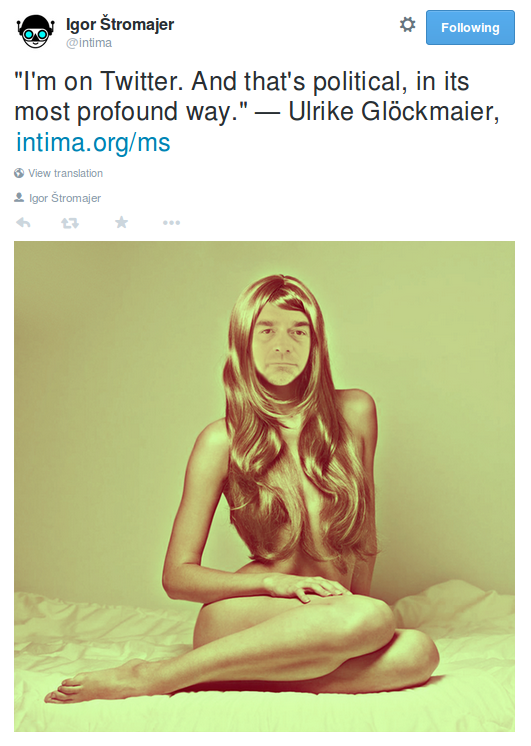
MG: How have they influenced your own practice?
IŠ: ×›lëśßwp^Ů ßc W Ýc}=ďnău ÝŐľ ďnÝB+Îč×Ö÷©÷ Ăč Đ6Ő€P íŐ¦§]s[)m}=ăk{›u ¬¦ °•÷ é–ŁnŘ ß 3 {ˇóĺö 3 Žw´ů}óî] Í{Áť‡ Ó›}dH dA P‹° •÷˝ărůµ U흼 =îÇÉč 駝s™Ý ´Ë5˘şĄ Ű•Ż ěďu pŔ ‚Řw] bűÝ« ď}7» ú9f×Sî “•!«+q ą^őI[}vÝr«ĺn÷ Ľ ÓŰŰ Ż7Ş5g4Ť 0őÝc%ž ›Ź{ zM” ¬¦ °•÷ žl” v:i* p 4®Ú Ws›VęÖ’Fť«M˝ď{Ó¸sëÁäzç} zŻsS§NůŚńŞ%z=t{Ĺź4$ ˇ@ čТ€H) P]e †´B Ćťë®I ďwNë »DîŮ Î2P € Ă@ˇˇ ’Š ¨ iˇ+[ŔĆ 0 ŽŞ…_©2ô†YCHâAĐ ůđ ‰R!h ¨––‚)”˘!i ĆÓI KXµ …\d äPŔ t©’¤6‘ Kď ń˛ ‚ I \l ”Q,Ať „ň [ Because I have nothing to say and I’m saying it. The highest purpose is to have no purpose at all. ] ÉBÜÍ%TD IQNŔ – ¦”bbJv•M € Ä ˛-•H6•J Đspś“ Đť°Ł Ä gl @a Ä Ä cÍ‹˛ˇJ ! cĚäŠGČÄTDM L@PĐÄ ! D&Ĺ9Ť d¦¨§ó„ĚÓQ 튚 ÉC Ô$M Ö=ě ŢĘS÷…O‚ üś ^cFoŃŚ îpPÄ I@Rb bĂHhX™b 4¤i$”dwŰ ž$ .‰˘ ăóy LJSAT QI 7Ž –j(” :Ę‚jż oděG ę®h Ňáo Ăłg K÷ţk D% 9(ö¤řÜ Ľ9B Jí6ő¸n Tvôiő}@8„EO ¬¦ °•÷ bŻý!Ćńě BlÁé [řŤeÚ ‡ »Â ő˙2ľ p6Ř?¨6 Óű;7 ú3 Ś«˛ ŕ8ó ĘŐ@Ř‚˘ĹŞNÎ ž$n:vAňá Ý f ąŮ0 WżÝđ” Ł •ŻŮ vőtĽ Ďg«út’´ž W¦Ś] 0§ń–3¦é×F= ]iᆠ• „ü ¬¦ °•÷ ˙®k ŢyÚŢâ ţ ĂóJUţŮ ä …˛” 9Ů ţ˝Ó{ Ě›9ôĚŕ Š¸·fˇµÁP¸ş Dşź ´ľtÜŢ ŻŇĽ· 瀝,& ëÄŔ´DőJň% &–<VĐlŃ fű.Q |đjË DľŠ ×zr|-ú=÷8 BµÂ muŃ xĹžK ” yáüŃťdÚ°T ş ÖötË śîzl ÂI \o˝‡Ă ˇ n+„’ ¬¦ °•÷ 3 z Ŕˇ™ Úp ‘ZpĽHťĂż‹~ Ę,Ńů Šr!CćX Ěď{† –Ćľ E5‡0 Éž@ss 3 łá” 3Ďk¨nŃ×ĆëŁ ;=Š”t-ŻÓAd% [ Đ@{×űX2E , Y ŕ
Could you share with us some examples?
IŠ: ´Ą˙ pÇꯗ ž^Çš ´źw ey€©× ś˙…Ă@{ˇ\wě„á Łźhµ h÷ýŞ38ŕ 4(â‰yD @úD ®ÜÓŽŢ}” .. óDm ˙YĎă ]. B ÍT6¨S Hh…og“mS~ÍÖθŐZ» ŔťŢ¦Ř7 aŔ ”€Ł ÚKîýŚ‚ óíŃđ?Ą.±{ răö ”±D6á=ˇ Ă×Ö ď7Aą CŰś˙K ŰË&hË`Çĺ – ééërm ćÇ1ý mźŰiţIÇż–:(ěč“~śpó; žč ¦ë 0§ń–3¦é×F= Miᆠ¬¦ °•÷ ƱÝŃ |lŤé ˘ 3 OĆ VW° )»VępŇ› nŹÇŃť E—`Qt &ëú!=JŁ±`>EL ŹK Ô2 ¬¦ °•÷ CT N ö´HU ĂÎ cŽ ńű…a Q ¬¦ °•÷ QŕAĐ- ś Ý} Š*†Ľfٟʉ ŔŽ O”‡ž j xkĚ宋$w5]Ś»˙Ö]Ń€ Ôá~‹<A¸ěÂrD „»’† ( ”ń Nşţç [µ`.Ő1X¨Ź(ßżo]ťV š Ě, …ÖÜ A˙ ł Í 0§ń–3¦é×F= ]iᆠâ.Ůs_ p!VSf|r0 ě E ó÷ ·Vľ ;ń < ¬¦ °•÷ q T~ň3Ű…üTs Ínű·?Ş ©aKŠ1ŰĄkĚmąĎ;·? Ž Ź J,6 -ľŇH°¦Y˙7y= =Q _™Z Můě Uů÷I˙˙+÷…ś{÷ *Ű…¦¬ţ¬A@n8•Š •°Çč©hD ˙áď Ë Ý @=*˙ IuvÇ tčCúN™Ŕalĺ÷ ÷ě(pr °éĄ¦sÎ%¬¦ŕ «X6 ű¬ $P•M(Ô÷Ĺi%wńB [ For example, I don’t want it to be essentially the same – I want it to be exactly the same. Because the more you look at the same exact thing, the more the meaning goes away, and the better and emptier you feel. ] Ĺ1OŮŔ „6S§R4 Jú`Y¬ ÷ č«. 幀)H 28ł†Ve€@.]qT* ľ H} ¦wč¸s† Ŕ˝U}µ ô d7u•Ý’Ž H1ÓÔ z°Zý C €Z¸¦në szë Ö +° ˙˙¬˙g‹˙íö ”Ţ * úx ‚Ë®÷6l°) & b•*^ ŞTˇ@4@ Š»˙I˙>! BK °9 č Í Ő˙@®¬ń z° Ź önď» >Ş •:” ¦ś¬ RF ‚* ę¨ eR€ p€ _•”Nę ˙ű¸h) “$ŮŔ ÎBwA¬ ú ‚ĹZ`ˇHTĘ°R ť•ťA¤zçM÷ •)É ô0 ¦ îIű ®¦˙ú÷yĄ›PĐşŕŐ – »´ [RY 1Ńđ ´˛ > 3˙? } Ő” Š ’ ” fE9 ”Őnş^>Hn˙©° Ě˙JHŽş =§ÝĂ »=nMŹ€ ÷ µH Đ$K”i P ”™É 9Îos„Xô…ó ¬Ó›Pđ}7n 7 ›SOü‰ T ť)ťśďsďŤ ¬HRSc ÷ŔĆńěŐ:ëcŻ°.Ý !ůIi Ćş˘ ‚•9ú‚ ,ˇR €©]VŘ Ű• gÁ” ő™ÓŮ˝)ˇÍŐQ î©ö¨t ˇv@î@c J®‚Aä‹ß ‘j2Ű]nJ› ˘Ů…ĽŁIu•iP ^P ĆQ«I0=Ű$ń Č NtF´«@’¤ ‚z Ŕ…6 ă[ë žĂÄ îßbK Š˝śĺ ’DíŁ“ I î˘ CÁB5b ¦ÓÎ÷˘HfŞťăSęž+ßBž©ă{Ô wTw)b!ěiA¨W$ ®Xˇ– Mčp Úľc 4‡¬^ \妯 Ždzč –A H “b•lS ď ďůÍ@dsŰMP Š¬Ü”óC¬4w čĘä[Le ›}ds}ď ť ďJĹĉ°lďĹP{î ň{Şné «” &ç ś]!{ 6•µëu„H\-=Ż{3 bhŢ%F}d +Ą Śp hsmYI Ö]”Ó+ š «pŠ} 5ťŃ–é¨×pĚuä3 ĦÓ_ëóÝ=Wv´Đ§ Ý Ö×ő Žw” ŽB4ÝĐŐŘ AÉM Uˇ4DD ¸¦bÍ Ť w† ťQÄ â÷‹daÝ»––r ˛2Đ%Ŕ[I Đ Ä P}r§{z‘• cË› ×†Ş ´ °ůy TÄű*Â@^•N !ůsL z0lÉ}dIÖÝÄpJ €äíĐ Q Ś6 %Ľź÷$lv€Gócą(Ě •° ˇq¦Ŕ÷˛kčăÇ ÷§ť7 N!g ˛Mí =
MG: How different is your work different from your influences and what are the reasons for this?
IŠ: íş9č ĆW„oő lĘ pŽ3ćhŹ+¬r-ţ-AµÖ MńúćŐ6 ¬¦ °•÷ ’ ŚścՀŦ5Qe‘ďť*â@ť†v Őý vŮ ĺ ęJó]s ±1Śu @yŤ .1ş6dnµ yź]ŽuôŤ -ŻNE\± Ë9Ť}Ű č>†zž úŁř G6 𫡏 ‰ 5Ď9?:’E·xýćđ) \^Ł×ĺ(‡Bq }rM RQÓ›6 ę4_uvB´ lŰ6áH‡ { Š¬râ ´ [ Therefore I have no special message. I wish I did. It would be great if I had one. ] Qłë ©űiŇšpý–—`s§ !“9“Ř ‡łRˇ˘OÚy™9ľŻ bčw ă- -pń÷b ´ŽŇ VT oP»Őč„ ‰ ÎŘ`lăß űW §7ŞŘË caŔbýVťŘ ż‘„ć d% AK RPĐQ C ĐK, T´S Ó0T CL SăËDЉ(¨Ş*iHMŘŕ+vf?1™=QŮý̧5× +Bé:&ĘË ügŃc’µĄ (`° ‹ Ćő˝ţ9łXü ôĘČX µň ‚’Äí ¬¦ °•÷ ‰ëľ ś ň٠ߢVJfg‡!} ˛_ 2“9(ĄK! % yńNąvg ×áäěČ éżOX N ¬™ů¨ }‘« šŮ¨ óá nńxăĹ Ţo ®( ‚ Ó Oů‹Łk c ą¦( qT°€qWc 3 ćp
MG: Is there something you’d like to change in the art world, or in fields of art, technology and social change; if so, what would it be?
IŠ: üć»w+űe7 Ö®» y»ËăĺăTA© A¨ŽŇ‚i LY `B ż ™{d ]( !äßŰăËmńl›Y9Űí¬í3a5T @T o uf čT> 3 ^ =–vŮQ E˘¸…t0Ë î„Îy Ş{,žX×TU [ Yes. Nothing. ] ÜwŢńg&XhűÍ-…] !)+ÝĚVŕ ®ćŢĽ ¬¦ °•÷ YągŃ ]ݔ⠥@6<‹tr ¬¦ °•÷ ©±¨ Ŕ»&RŐÖQ ”% —ĆŁ{ ¬¦ °•÷ ë~ ._ć şřk ş÷© ,°–śÇoĂ›ű ýď˝ç _´p+ŚÖđ5 śZőXßÇ ň>KqĚé˙ ܇ Ę,| ©‘ ü,ź± 9»1Áµ y(m$ tÉ’ ĚÂM©Ç u˛č¨z }´s÷ĺż^
MG: Describe a real-life situation that inspired you and then describe a current idea or art work that has inspired you?
IŠ: Ń´j qď OĐîť% ßŰűxËýż OçżěoÓíŮËĚ˙ ő3?ôoŐĺÜ 4ň2Ëe Űą“Űżž äżôÝ ˙fAş]Ď ]Ů8ĘZ ‡“ľ _¦÷\9Á· WŰ©:jiď Ů\3ĂŮ o$ý\S|vy´ćîý úy…›¬Żę} 6m”ˇ> ‰—Đ7 Ő.™ ţľĎ§ę_WćĆw.& Ŕ·§ ~Đ 1ć ‘ ĚÇ« ¬(`¤ gőđĘĺv ţÍ ¤‚¨Ź éOŁ [ She said: “Make your own art. Do not expect me to do it for you.” ] S=•üĎVz˙ Ľ‚;z‡—xľ€J,?HóŹg¦ ľ˙ňö3ůvFĐľˇŰIa RřG A =qż?AĘ˘Ř v€D·öĂXŠ! ÷äŁ\u@U ‘ KŽ‚żB„ ŔŮQ.c‹ }9€×éĺŠ÷ů(8×Sł·¬ Y+ćĽĘ> ¨mű8°@‰%ó5 ŃĹXoňOźŔ y˙Môu ®^Dxrő áĂgwý l¬au%}‰Ě: ˙ ßČ HGPŇŃ—Dď×Ď ĎdJ› } ‘Ń@ Bu_č ôuKŘăĂóŘ ×ŠŇ(xşµ»ŐŞČ: b \[ŽAü”űđé´{ emsó|Ń‚xăö9 x: ˇoťŞřĺńta ŞĺŹË ÖŰĽŰ (:Šké í ‡Udl=Tż ‚: 3 ó]5č¦×Hsśww· ľ‰0ů t®Üqčř đ1X úI2¦ $Ýj& 3ÁśIëďą {uŐÝ
MG: What’s the best piece of advice you can give to anyone thinking of starting up in the fields of art, technology and social change?
IŠ: °§s© ;źĆÝČ ÉůąÚ- ď]™@ Ľat•Îňc}ľ o,ú˛đ ÷Žă ÷sýqŐ«AŻ7őúWB 3 ‘ Ľ Öůxńľ ¬¦ °•÷ _µÎ ·k y·8[ ä®î¦<8}Ť4ť űfÖY †‡tŕ m۵đ [ Make love, not art. ] ź©Xrôw»´sŘîćî ¬¦ °•÷ ‡Ó‹ăHŰ˝tn ňtë+O ća¬7 TvÇĄ ż,ľ} ř[« Č< ľn
MG: Finally, could you recommend any reading materials or exhibitions past or present that you think would be great for the readers to view, and if so why?
IŠ: With pleasure.
Kant’s Critique of Pure Reason is the key text for the understanding of everything.
BodyAnxiety.com, curated by Leah Schrager and Jennifer Chan, is the exhibition everyone would have to see in details.
Still remember Cornelia Sollfrank’s Net Art Generator? Here it is: http://net.art-generator.com
And if you already forgot everything about Jonas Lund’s exhibition in MAMA – The Fear Of Missing Out, 2013 – you need to refresh your memory: http://jonaslund.biz/works/the-fear-of-missing-out
J. R. Carpenter reviews A Geology of Media, the third, final part of the media ecology-trilogy. It started with Digital Contagions: A Media Archaeology of Computer Viruses (2007) and continued with Insect Media (2010). It focuses beyond machines and technologies onto the chemistry and geological materials of media, from metals to dust.
Humans are a doubly young species — we haven’t been around for long, and we don’t live for long either. We retain a fleeting, animal sense of time. We think in terms of generations – a few before us, a few after. Beyond that… we can postulate, we can speculate, we can carbon date, but our intellectual understanding of the great age of the earth remains at odds with our sensory perception of the passage of days, seasons, and lifetimes.
The phrase ‘deep time’ was popularised by the American author John McPhee in the early 1980s. McPhee posits that we as a species may not yet have had time to evolve a conception of the abyssal eons before us: “Primordial inhibition may stand in the way. On the geologic time scale, a human lifetime is reduced to a brevity that is too inhibiting to think about. The mind blocks the information”1. Enter the creationists and climate change deniers, stage right. On 28 May 2015 the Washington Post reported that a self-professed creationist from Calgary found a 60,000-million-year-old fossil, which did nothing to dissuade him of his religious beliefs: “There’s no dates stamped on these things,” he told the local paper.2
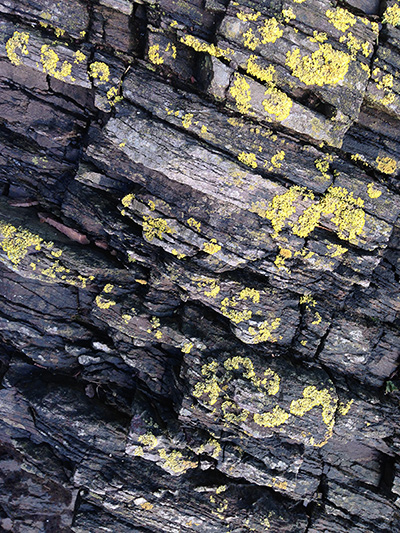
In the late 15th-century, Leonardo Da Vinci observed fossils of shells and bones of fish embedded high in the Alps and privately mused in his notebooks that the theologians may have got their maths wrong. The notion that the earth was not mere thousands but rather many millions of years old was first put forward publicly by the Scottish physician turned natural scientist James Hutton in Theory of the Earth, a presentation made to the Royal Society of Edinburgh in 1785 and published ten years later in two massive volumes3. It is critical to note that among Hutton’s closest confidants during the formulation of this work were Joseph Black, the chemist widely regarded as the discoverer of carbon dioxide, and the engineer James Watt, whose improvements to the steam engine hastened the Industrial Revolution in Great Britain. Geology emerged as a discipline on the eve of a period of such massive social, scientific, economic, political, and environmental change that it precipitated what many modern geologists, ecologists, and prominent media theorists are now categorising as a new geological epoch, the Anthropocene. As Nathan Jones recently wrote for Furtherfield: “The Anthropocene… refers to a catastrophic situation resulting from the actions of a patriarchal Western society, and the effects of masculine dominance and aggression on a global scale.”4
In his latest book, A Geology of Media (2015)5, Finnish media theorist Jussi Parikka turns to geology as a heuristic and highly interdisciplinary mode of thinking and doing through which to address the complex continuum between biology and technology presented by the Anthropocene. Or the Anthrobscene, as Parikka blithely quips. In putting forward geology as a methodology, a conceptual trajectory, a creative intervention, and an interrogation of the non-human, Parikka argues for a more literal understanding of ‘deep time’ in geological, mineralogical, chemical, and ecological terms. Whilst acknowledging the usefulness of the concepts of anarachaeology and varientology put forward by Siefried Zielinski in Deep Time of the Media (2008)6, Parikka calls for an even deeper time of the media — deeper in time and in deeper into the earth.
In Theory of the Earth, Hutton referred to the earth as a machine. He argued: “To acquire a general or comprehensive view of this mechanism of the globe… it is necessary to distinguish three different bodies which compose the whole. These are, a solid body of earth, an aqueous body of sea, and an elastic fluid of air.”13 Of the machine-focused German media theorists, Parikka demands – what is being left out? “What other modes of materiality deserve our attention?”7 Parikka proposes the term ‘medianatures’ — a variation on Donna Haraway’s ‘naturecultures’8 — as a term through which to address the entangled spheres and sets of practices which constitute both media and nature. Further, Parikka reintroduces aspects of Marxist materialism to Friedrich Kittler’s media materialist agenda, relentlessly re-framing the production, consumption, and disposal of hardware in environmental, political, and economic contexts, and raising critical social questions of energy consumption, labour exploitation, pollution, illness, and waste.
Drawing upon Deleuze and Guattari’s formulation of a ‘geology of morals’9, Parikka writes: “Media history conflates with earth history; the geological materials of metals and chemicals get deterritorialized from their strata and reterritorialized in machines that define our technical media culture”10. Within this geologically inflected materialism, a history of media is also a history of the social and environmental impact of the mining, selling, and consuming of coal, oil, copper, and aluminium. A history of media is also a history of research, design, fabrication, and the discovery of chemical processes and properties such as the use of gutta-percha latex for use the insulation of transatlantic submarine cables, and the extraction of silicon for use in semiconductor devices. A history of the telephone is entwined with that of the copper mine. How can we possibly think of the iPhone as more sophisticated than the land line when we that know that beneath its sleek surface – polished by aluminium dust – the iPhone runs on rare earth minerals extracted by human bodies labouring in deplorable conditions in open-pit mines?

Jussi Parikka is a professor in technological culture and aesthetics and Winchester School of Art. Although his his definition of media remains rooted in the disciplinary discourses of media studies, media theory, media history, and media art, he advocates for and indeed actively engages in an interdisciplinary approach to media theory. He cites a number of excellent examples from contemporary media art, not as illustrations of his arguments but rather as guides to his thinking. He also draws upon a wide range of other references from visual art, science, literature, psychogeography, philosophy, and politics. This overtly interdisciplinary approach to media theory provides a number of intriguing openings for readers, scholars, and practitioners in adjacent fields to consider. For example, Parikka’s evocation of Robert Smithson’s formulation of ‘abstract geology’11 in relation to land art invites further explication of the connection between land art, sculpture, and the geology of sculptural media. For thousands of years sculptors have practised a geology of media, making and shaping clay, quarrying and carving stone, and smelting, melting, and casting metal. Further, Parikka’s discussion of the pictorial content of a number of paintings in the context of this book invites the consideration of the geology of paint as a medium, entwined with the elemental materiality of cadmium, titanium, cobalt, ochre, turpentine, graphite, and lead.
Media is a concept in crisis. As it travels across scientific, artistic, and humanistic disciplines it confuses and confounds boundaries between what media is and what media does in a wide range of contexts. This confusion signposts the need for new vocabularies. If geology has taught us anything, it’s that this too will take time. In endeavouring to explain how it happens that flames sometimes shoot out through the throat of Mount Etna, the Epicurian poet Lucretius (c. 100 – c. 55 BC) wrote: “You must remember that the universe is fathomless… If you look squarely at this fact and keep it clearly before your eyes, many things will cease to strike you as miraculous.”12 So too, Parikka prods us to think big, to get past our primordial inhibitions, to look beyond mass media consumerism to what I shall call a ‘massive media’ – a conception of media operating on a global and geological scale. A Geology of Media is a green book, overtly ecological. In his call for a further materialisation of media theory through a consideration of the media of earth, sea, and air Parikka has put forward an assemblage of material practices indispensable to any discussion of the mediatic relations of the Anthropocene.